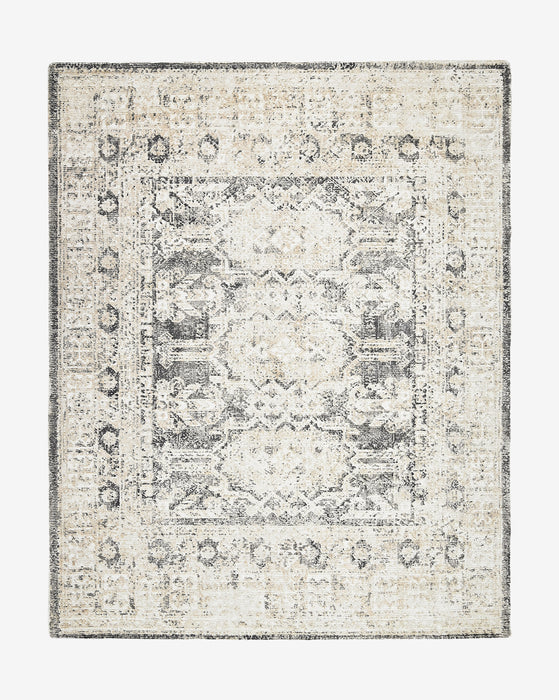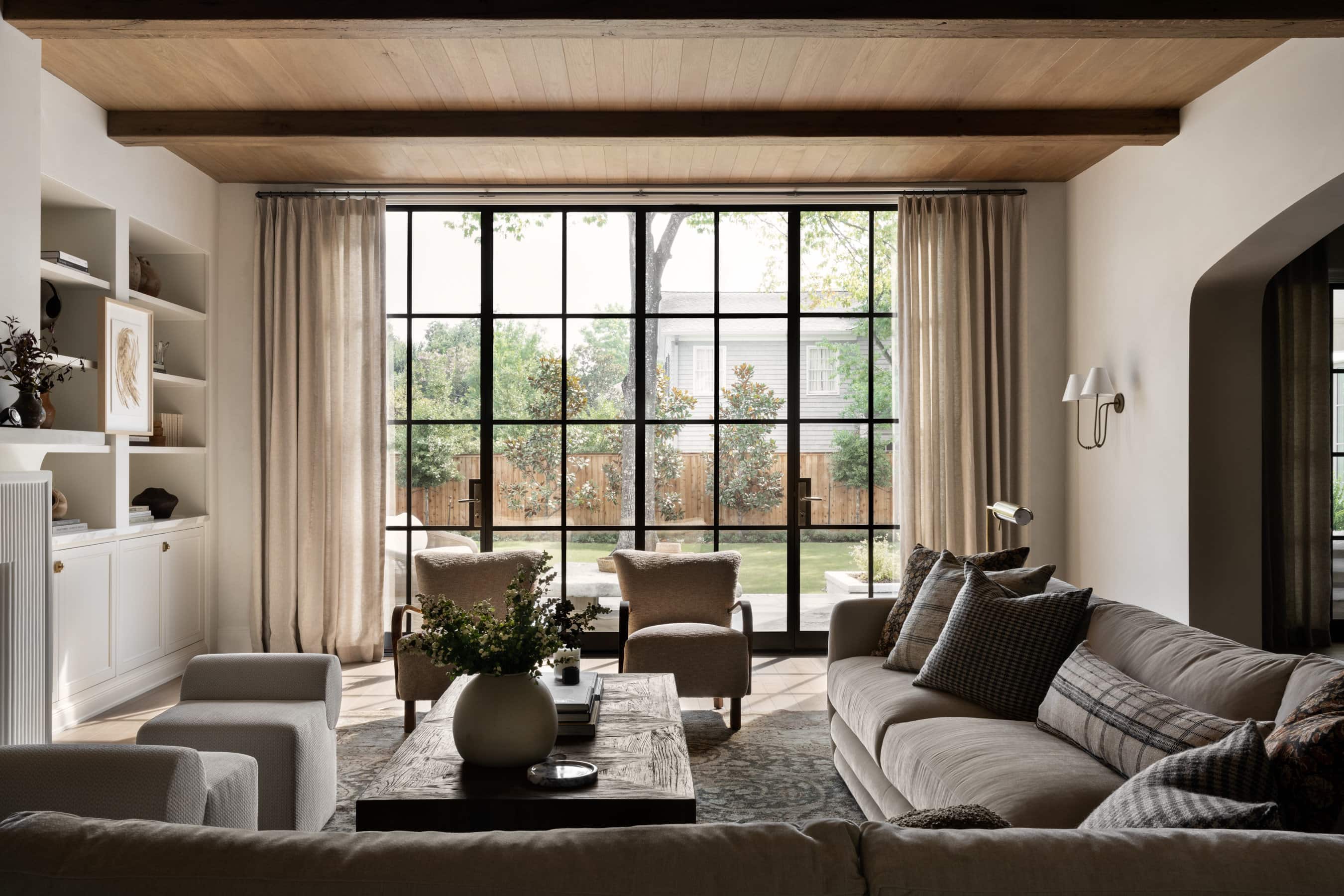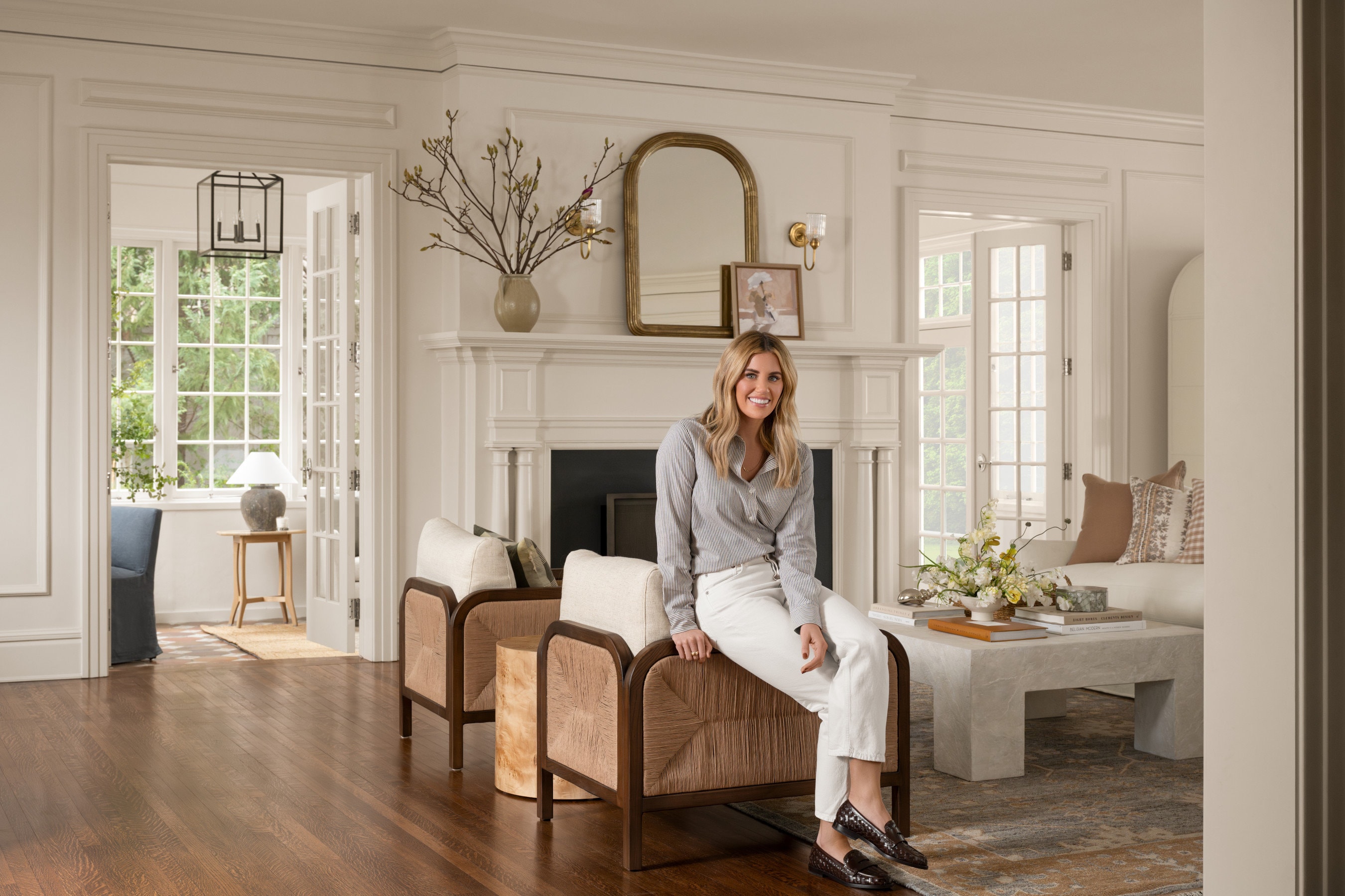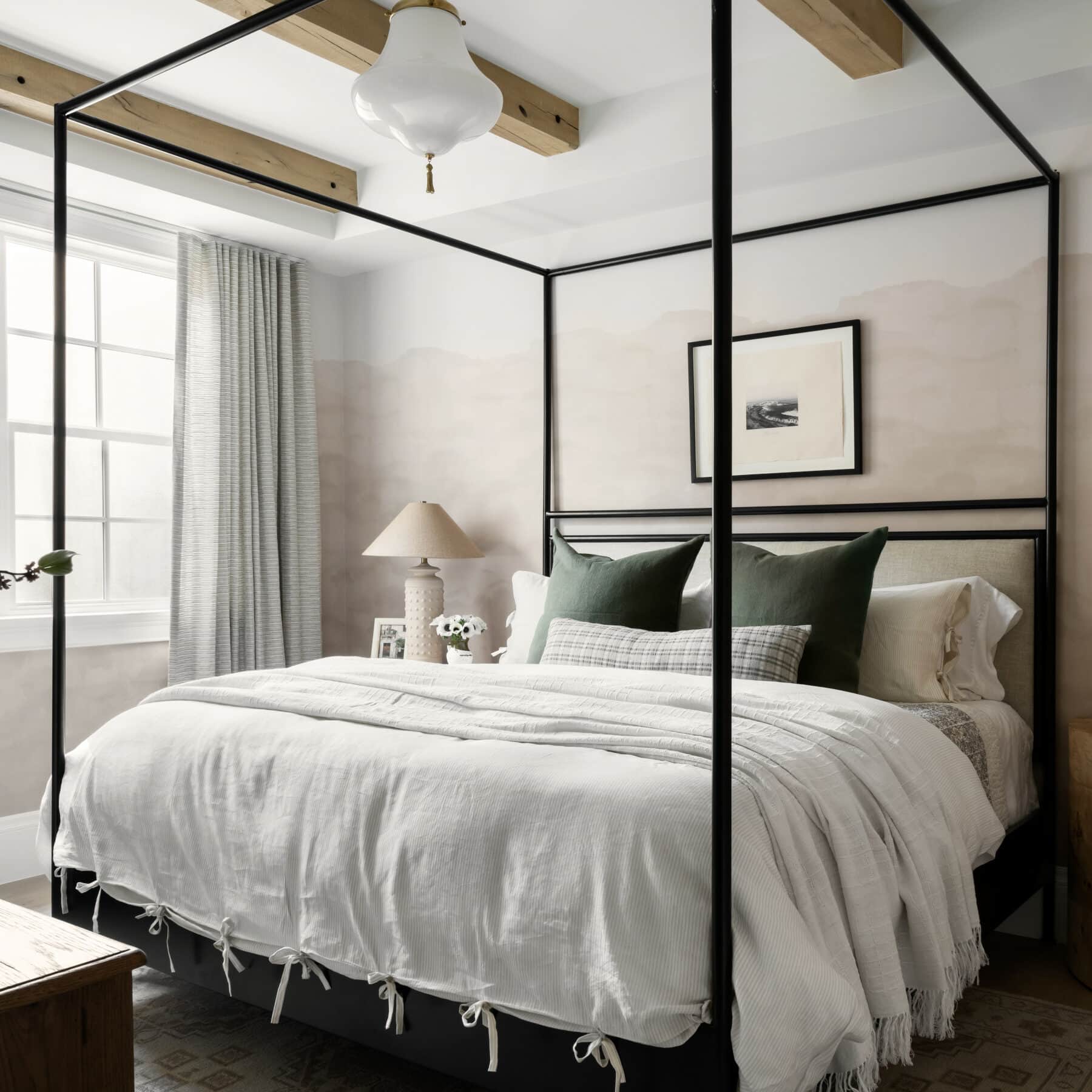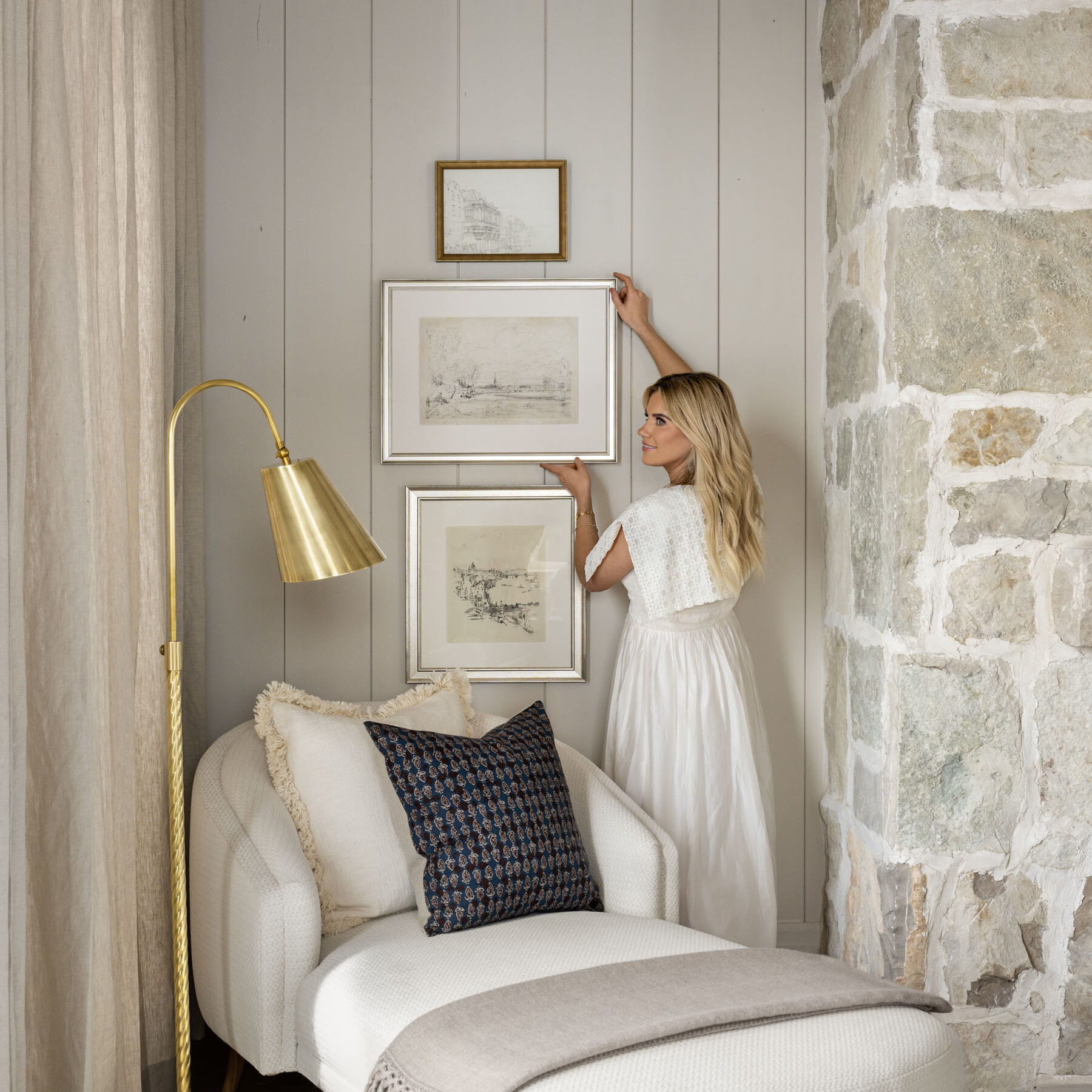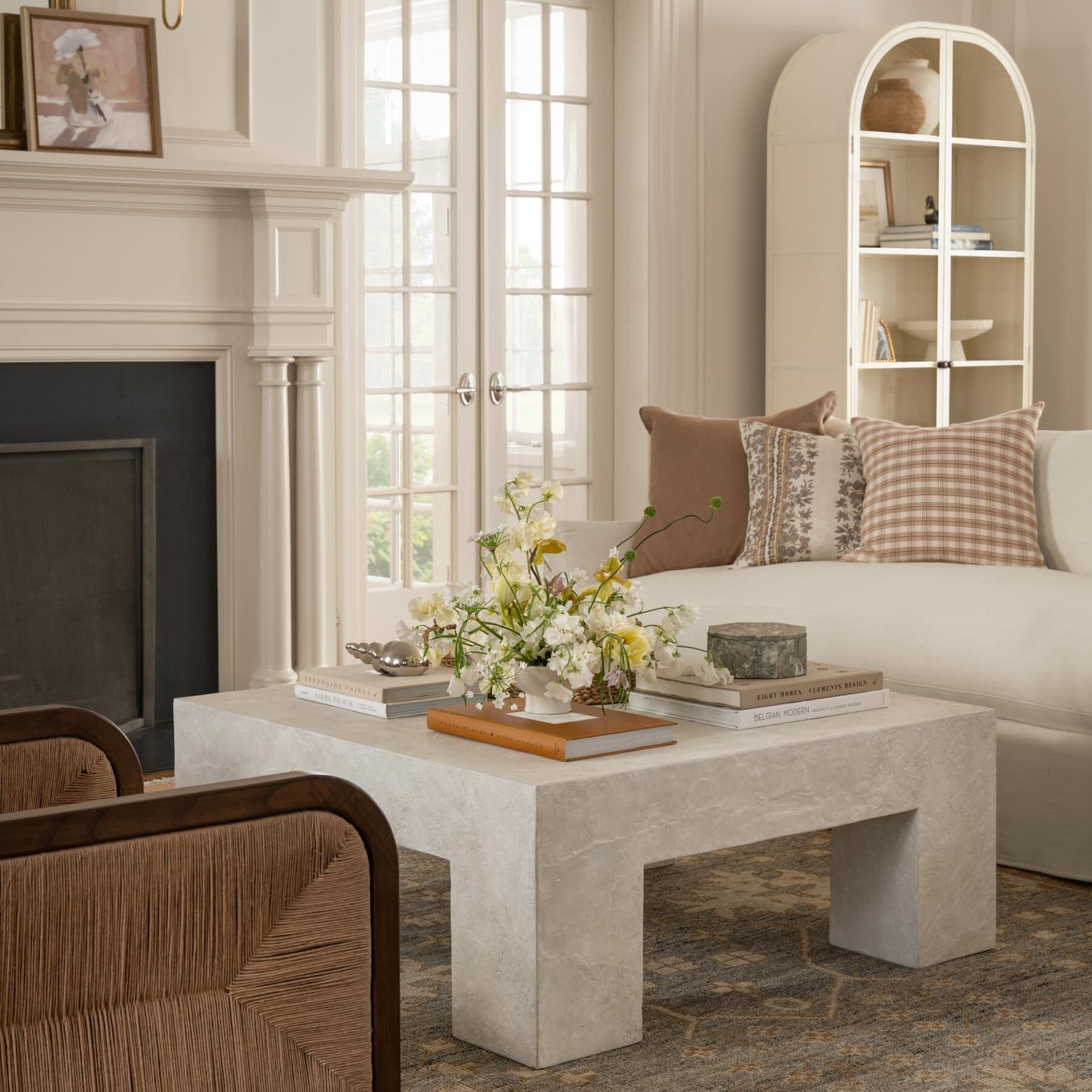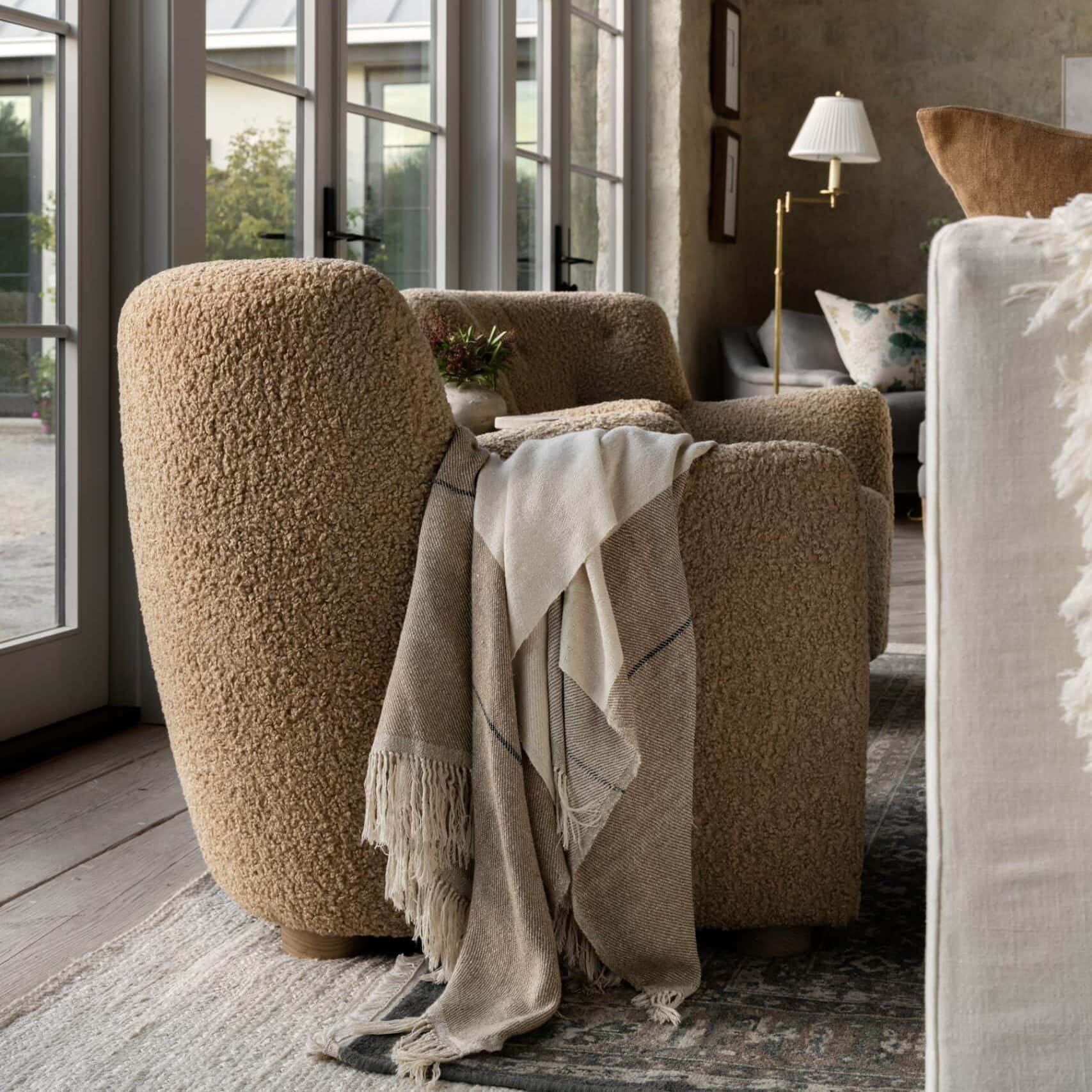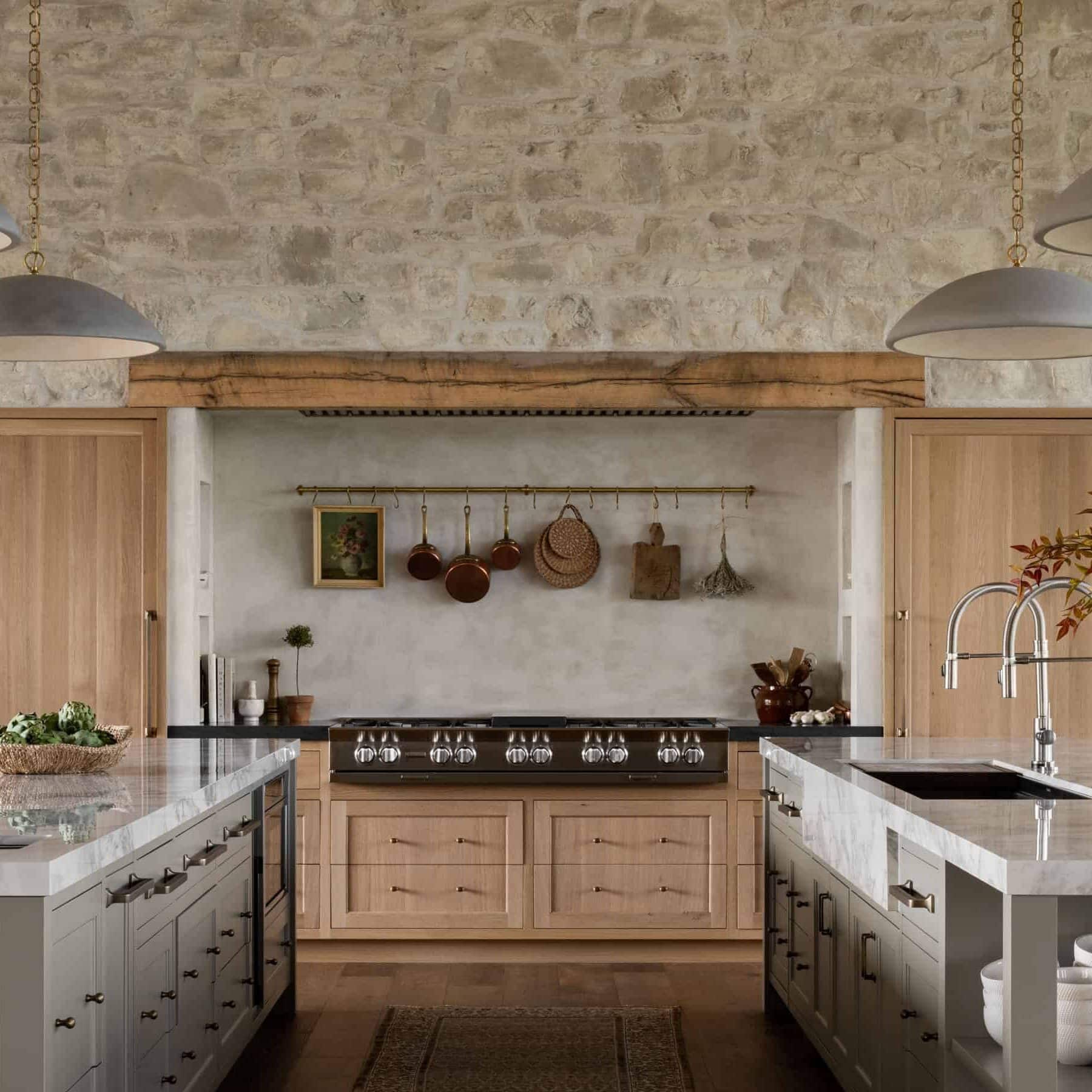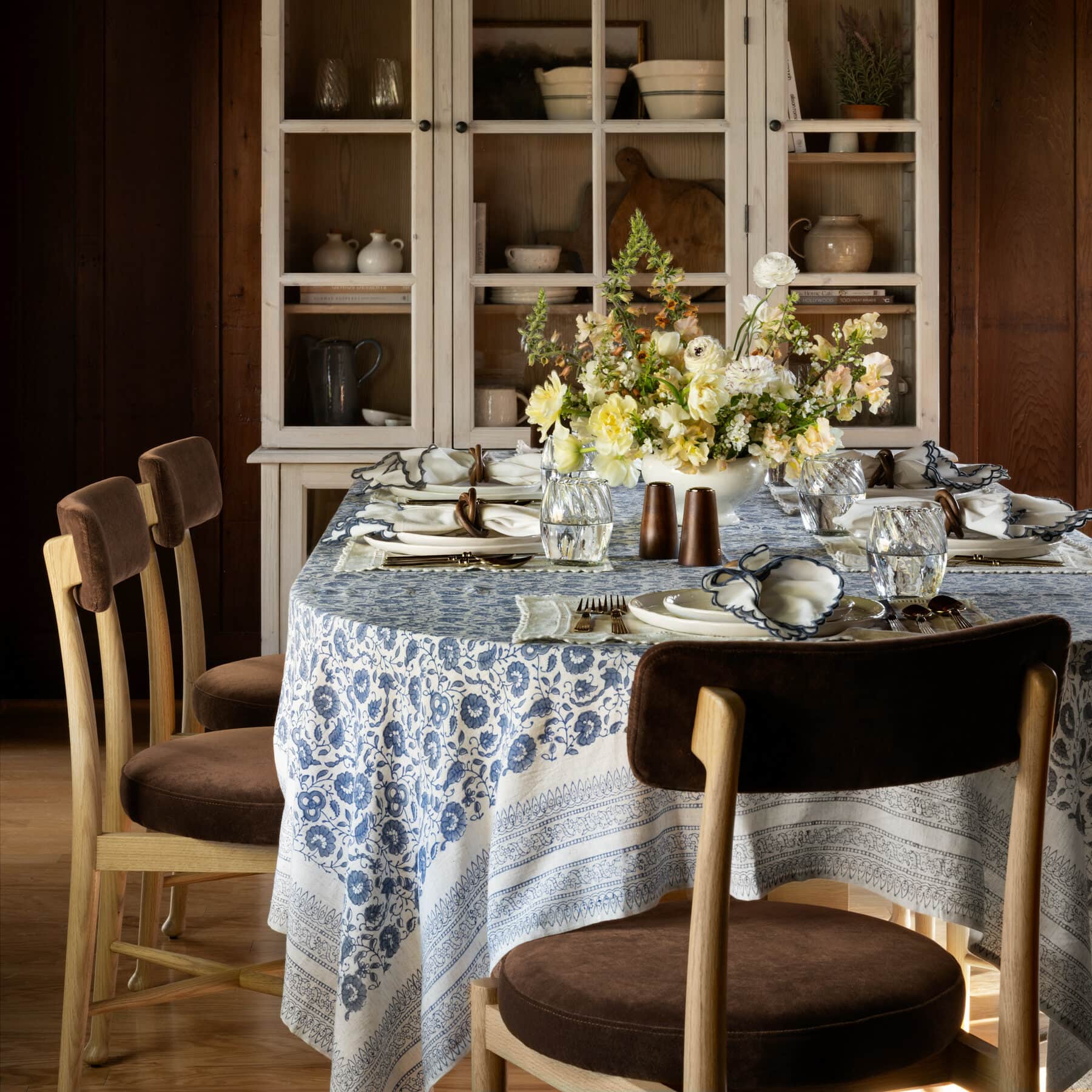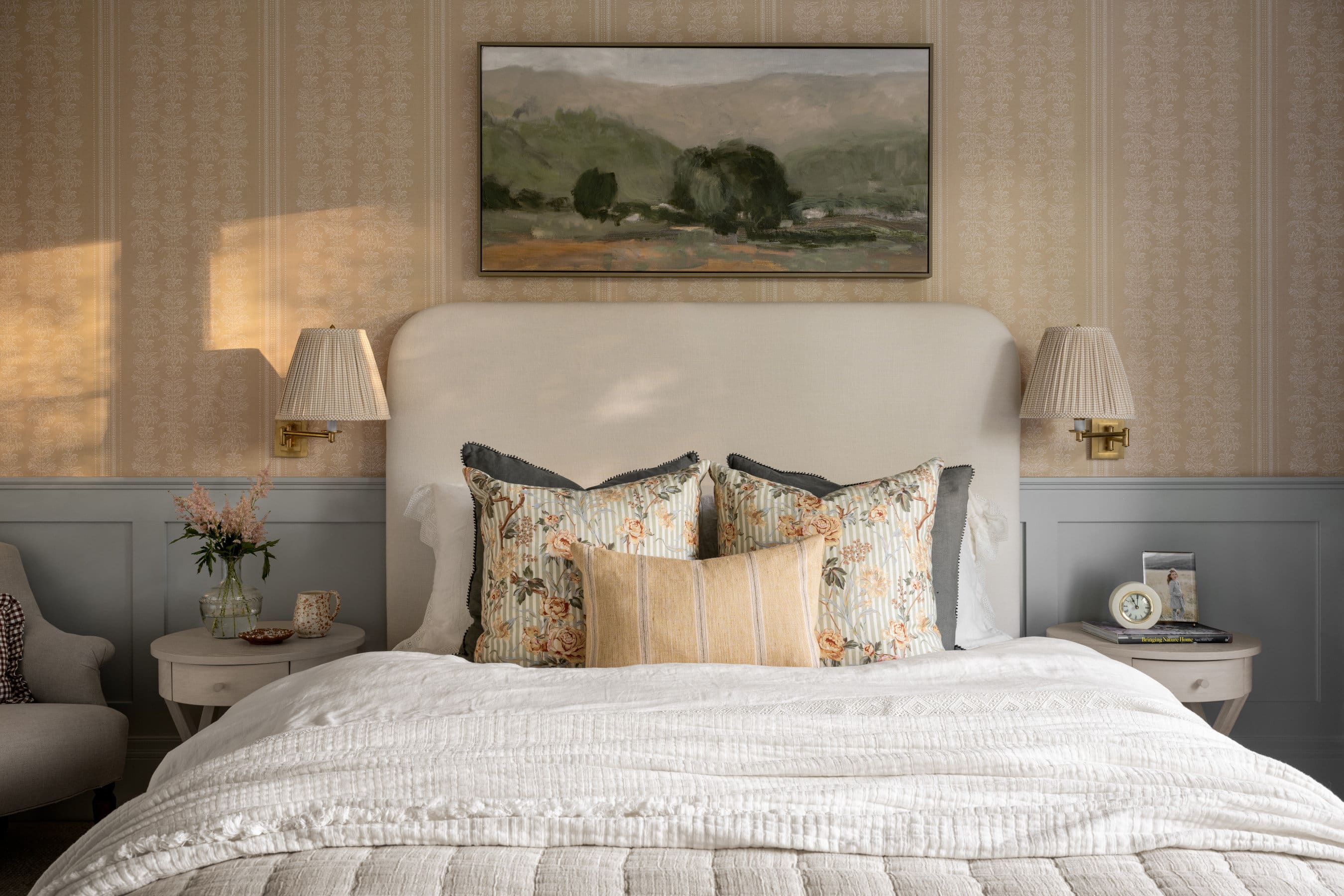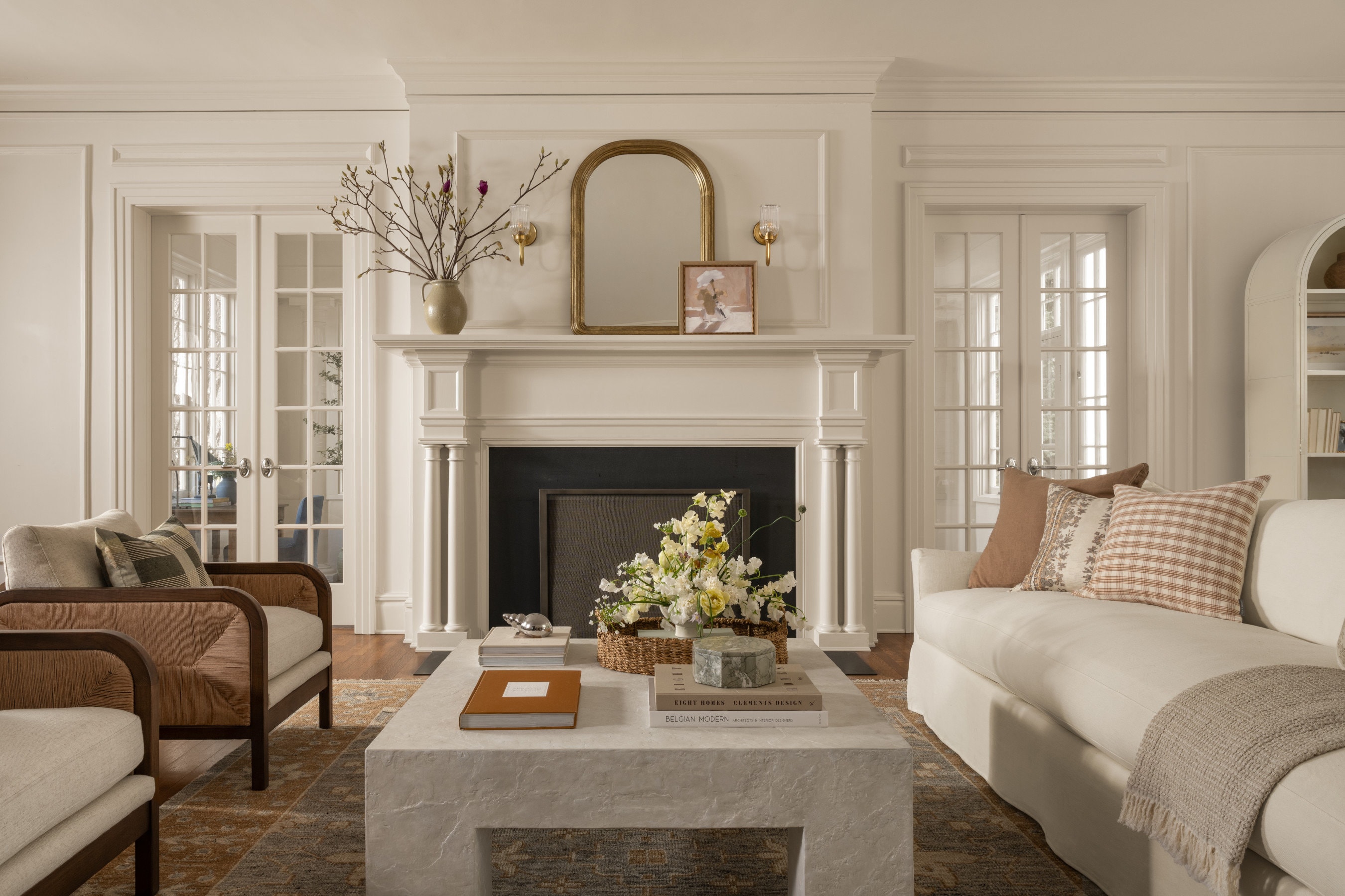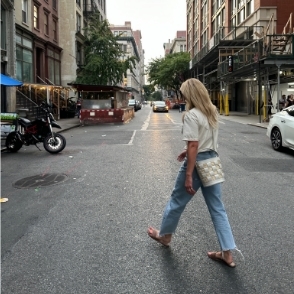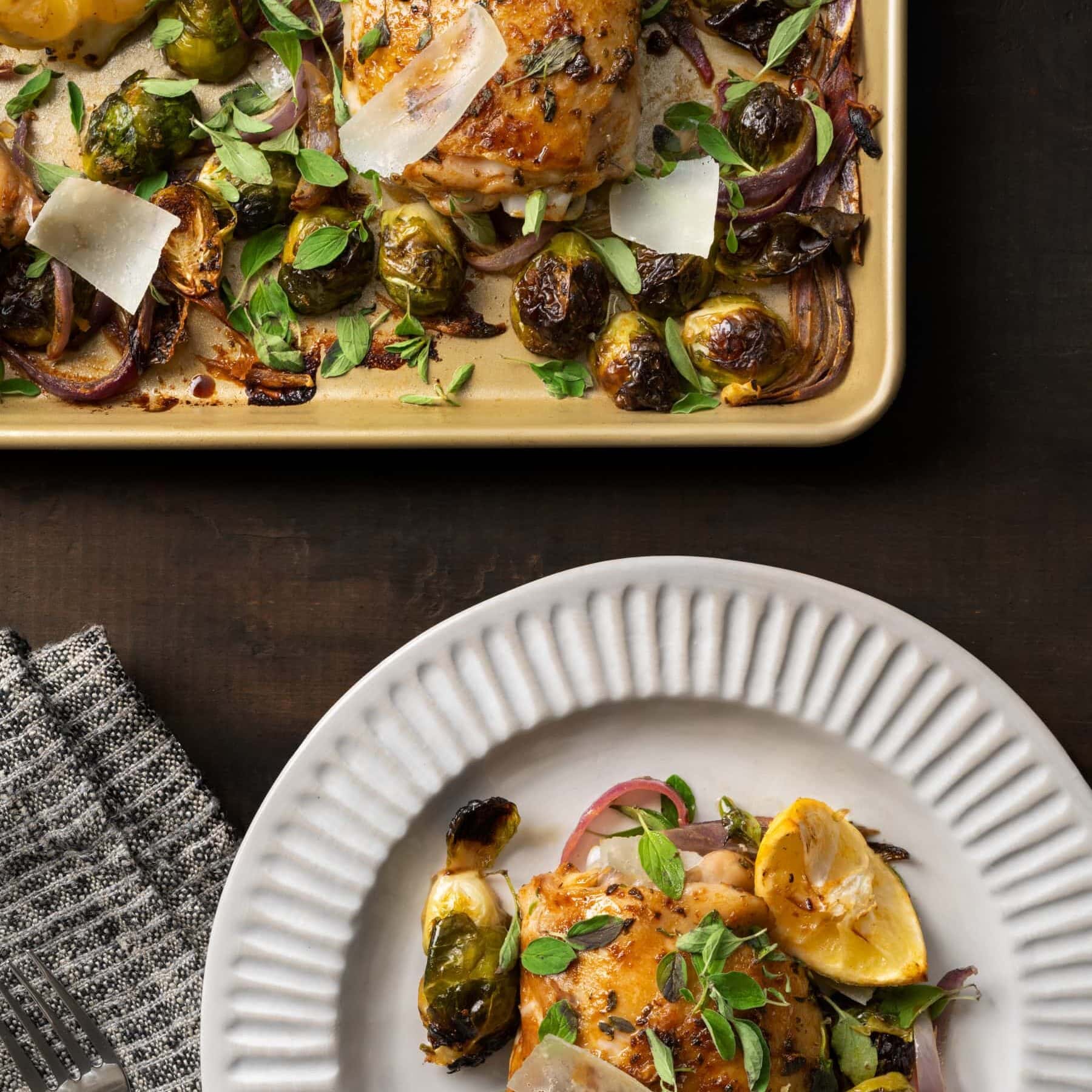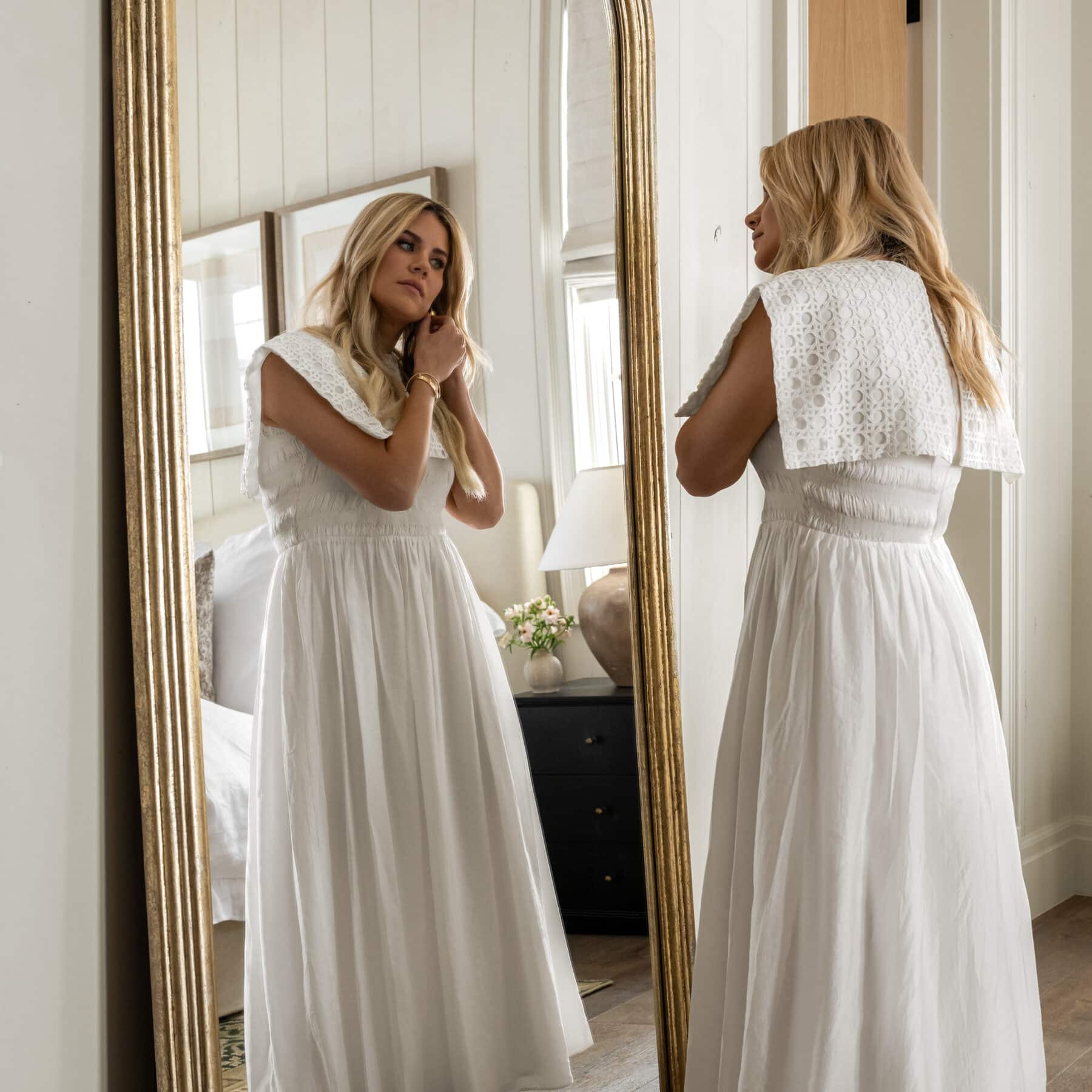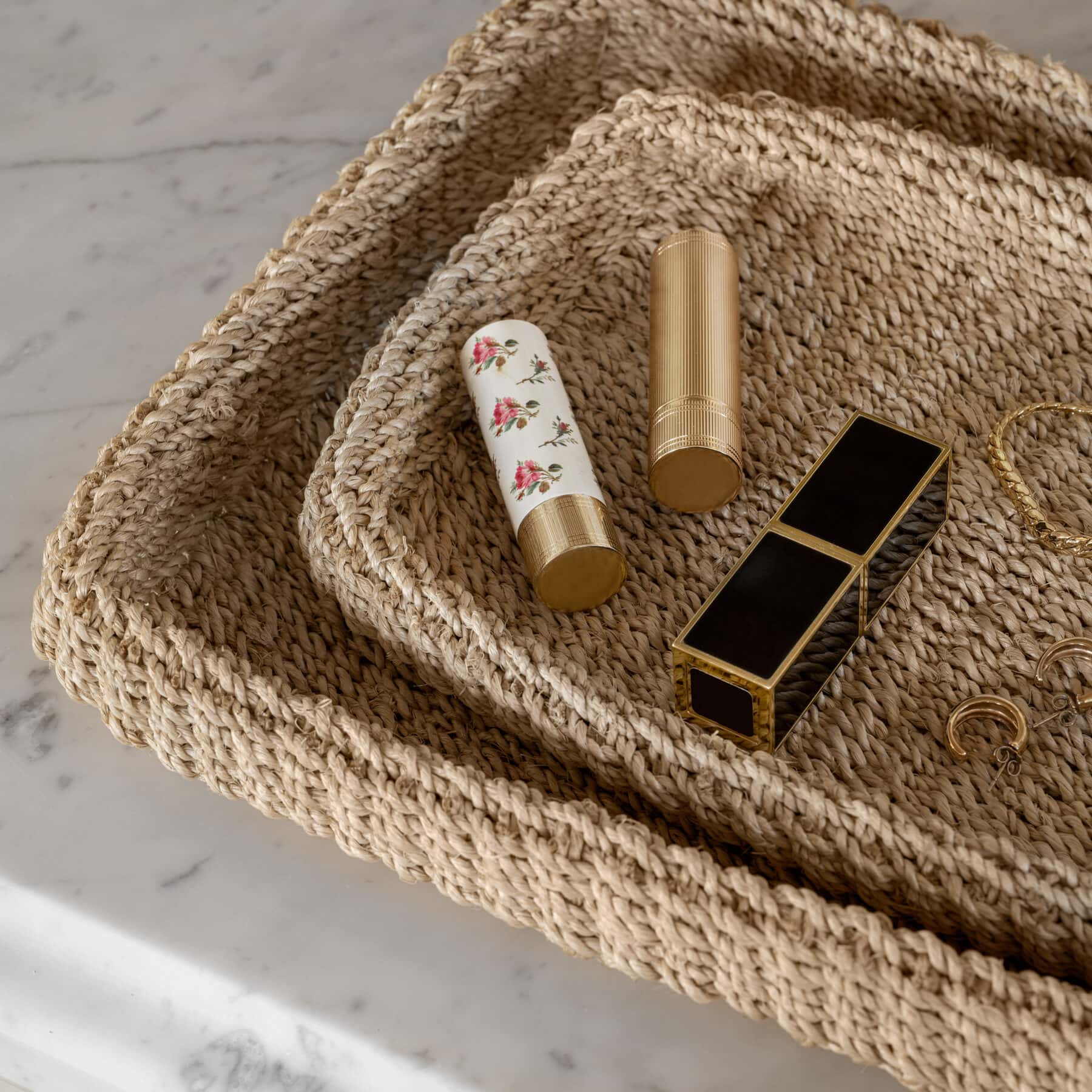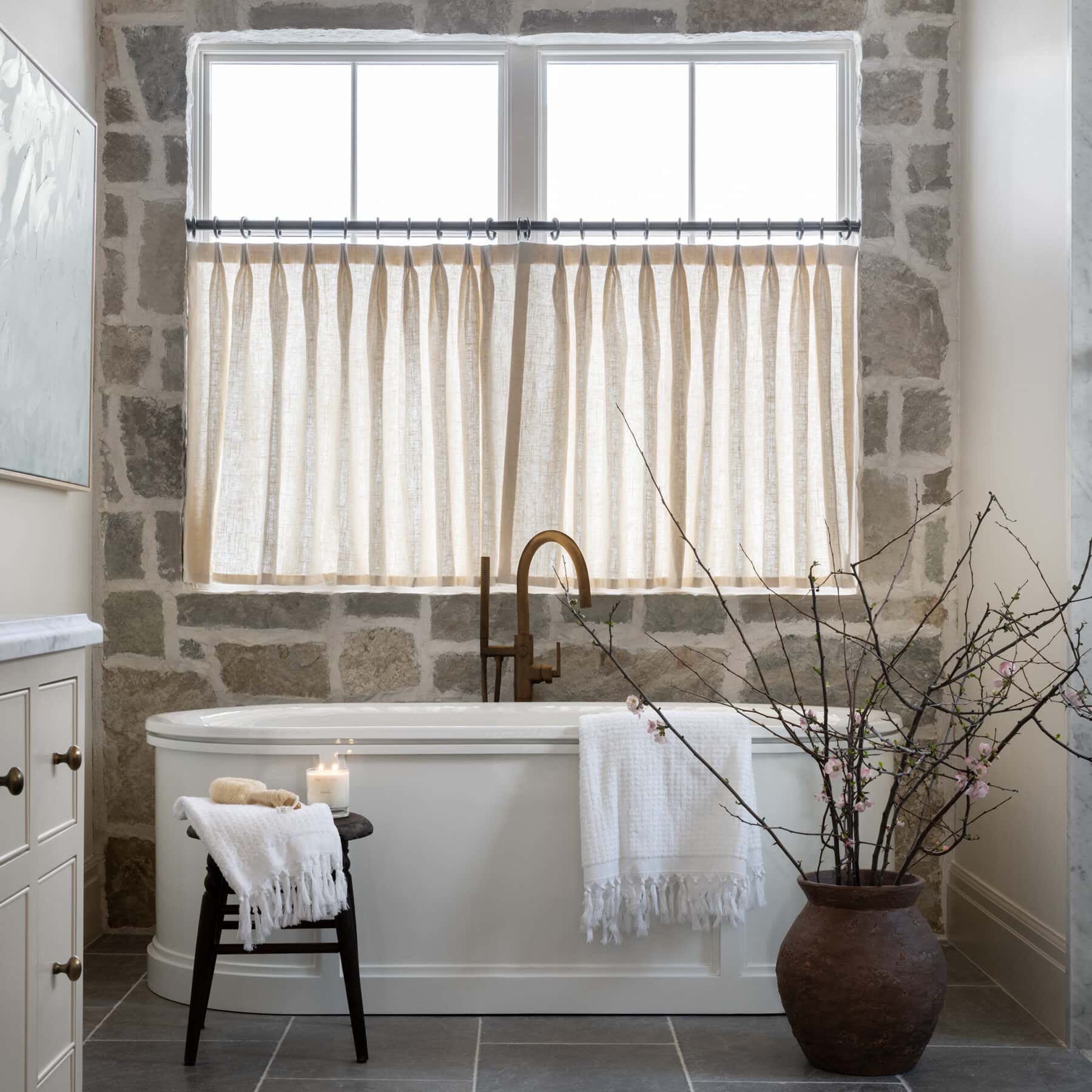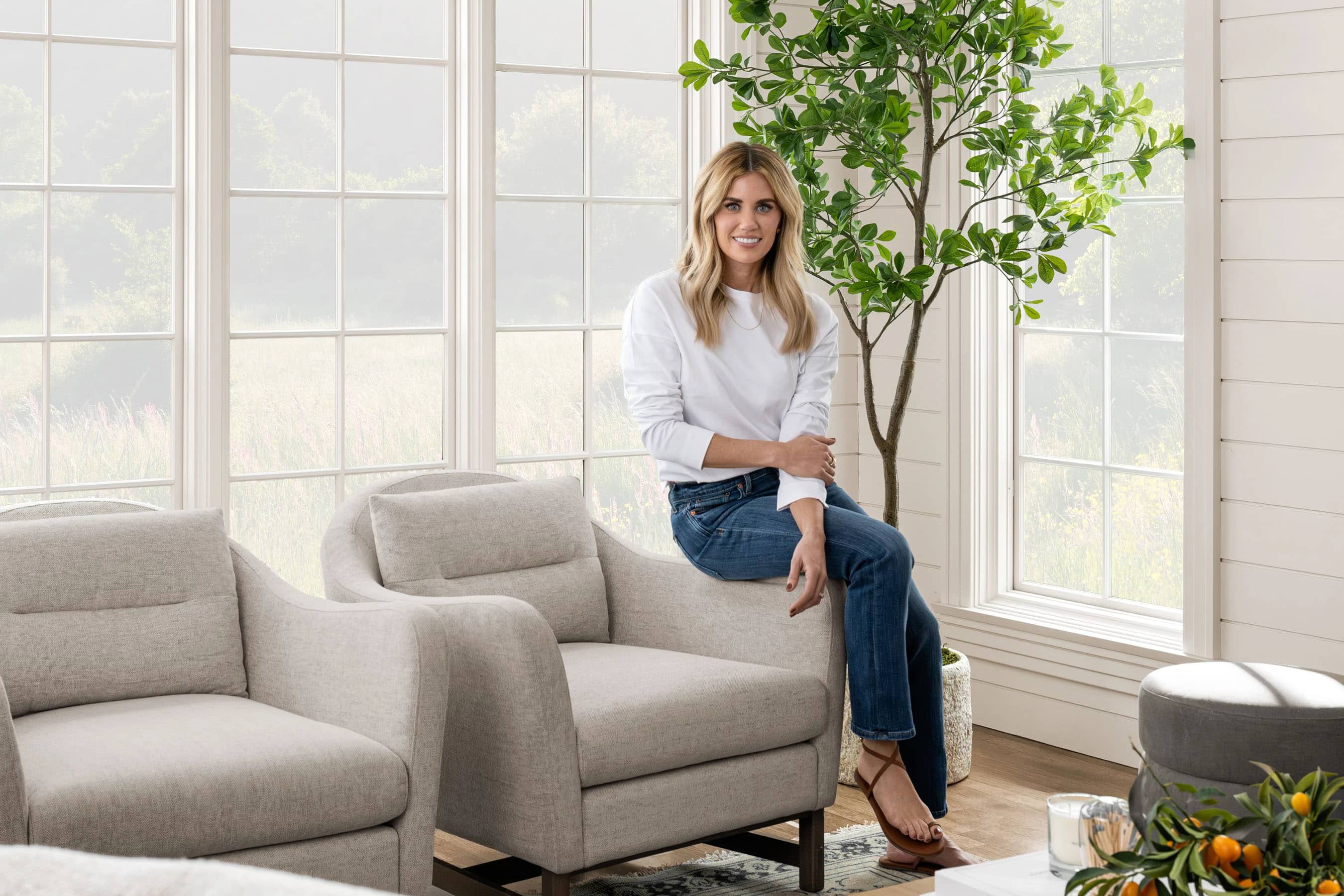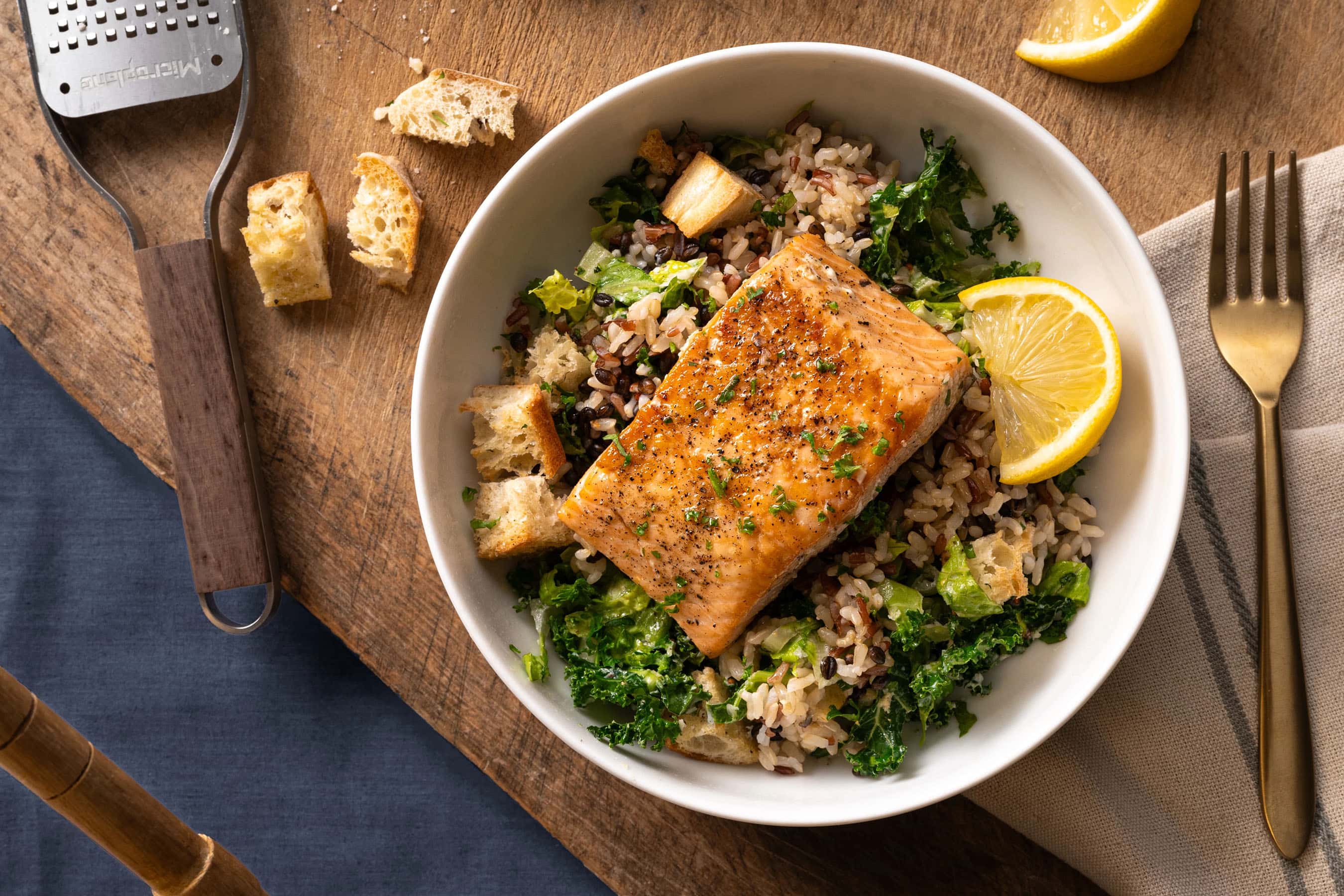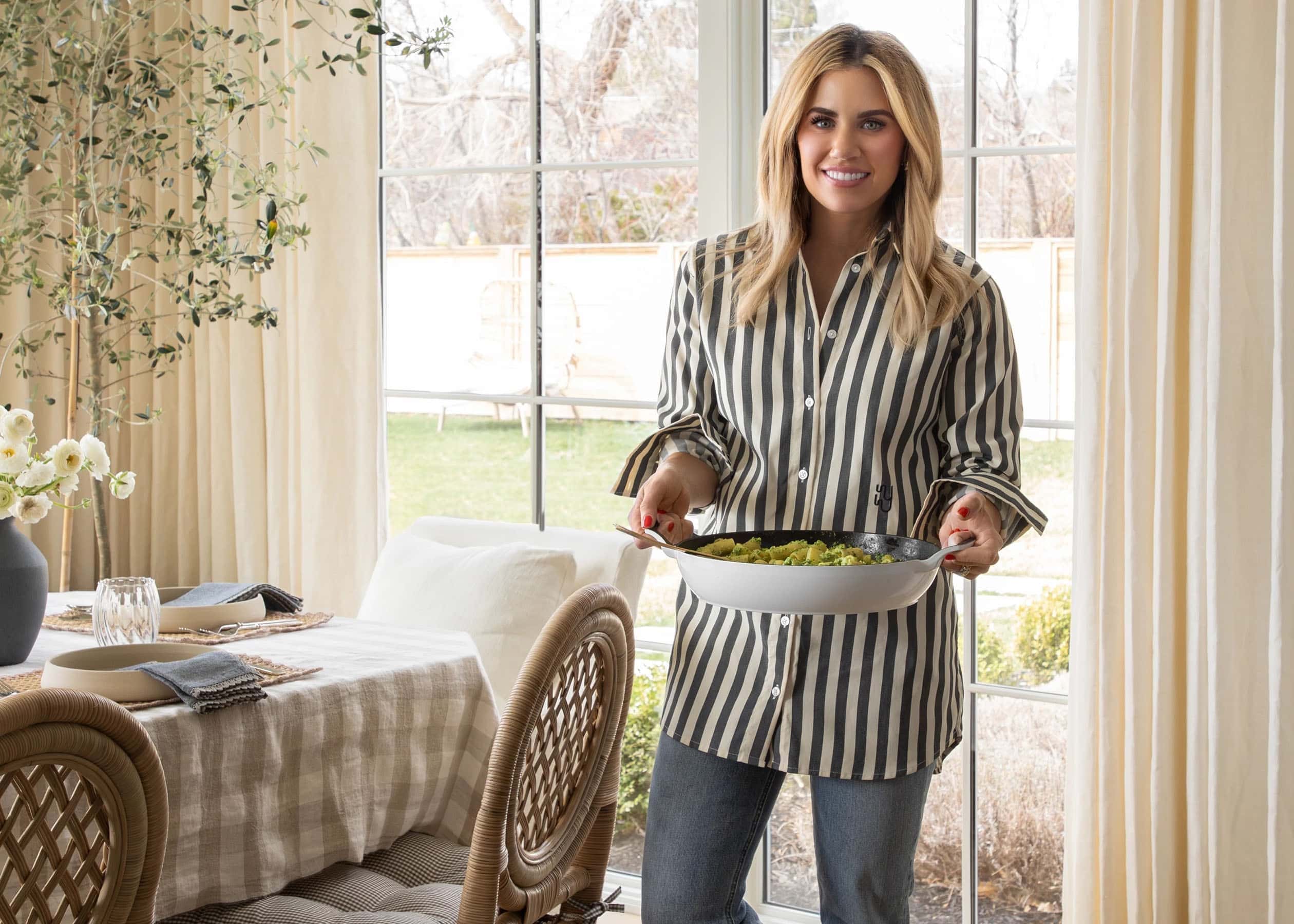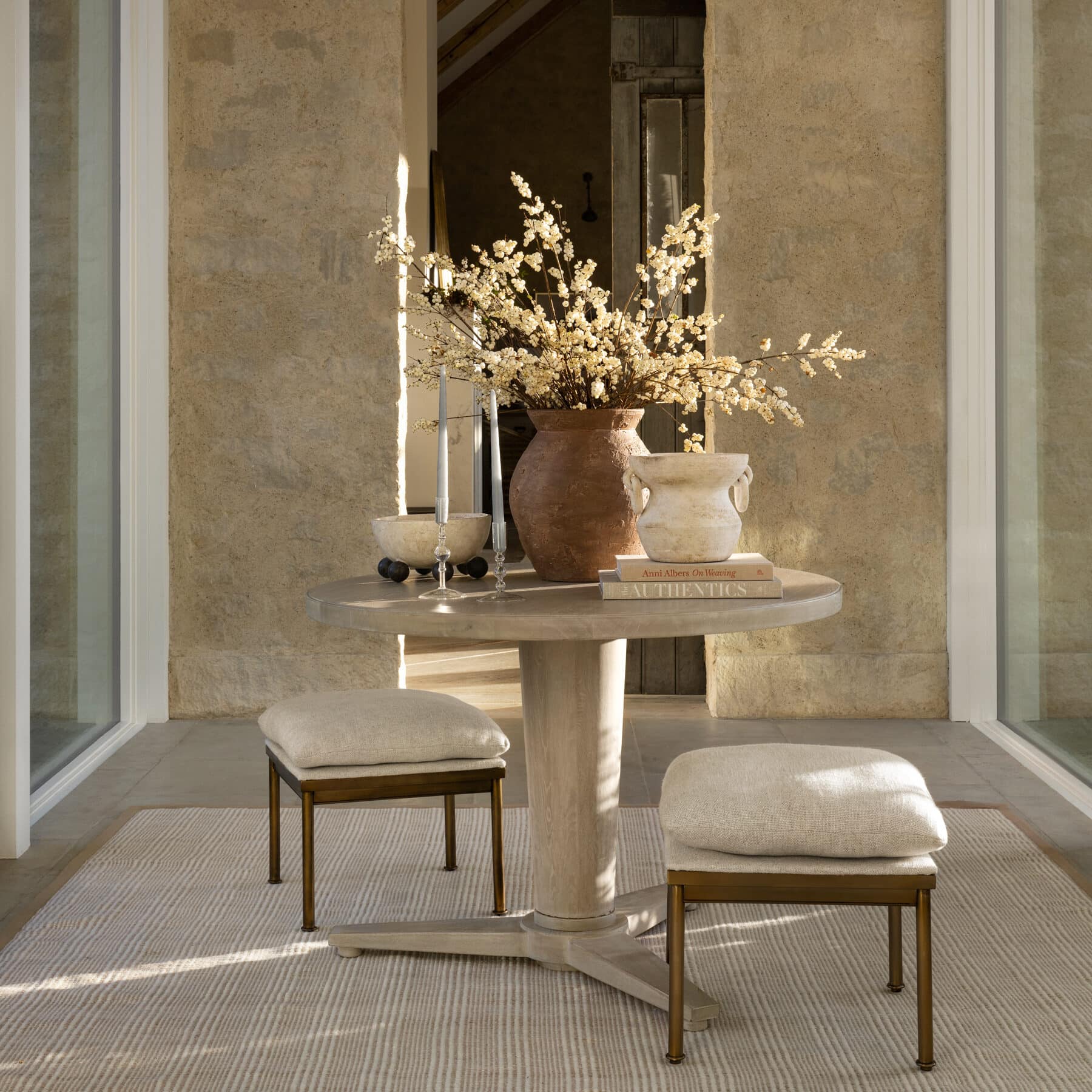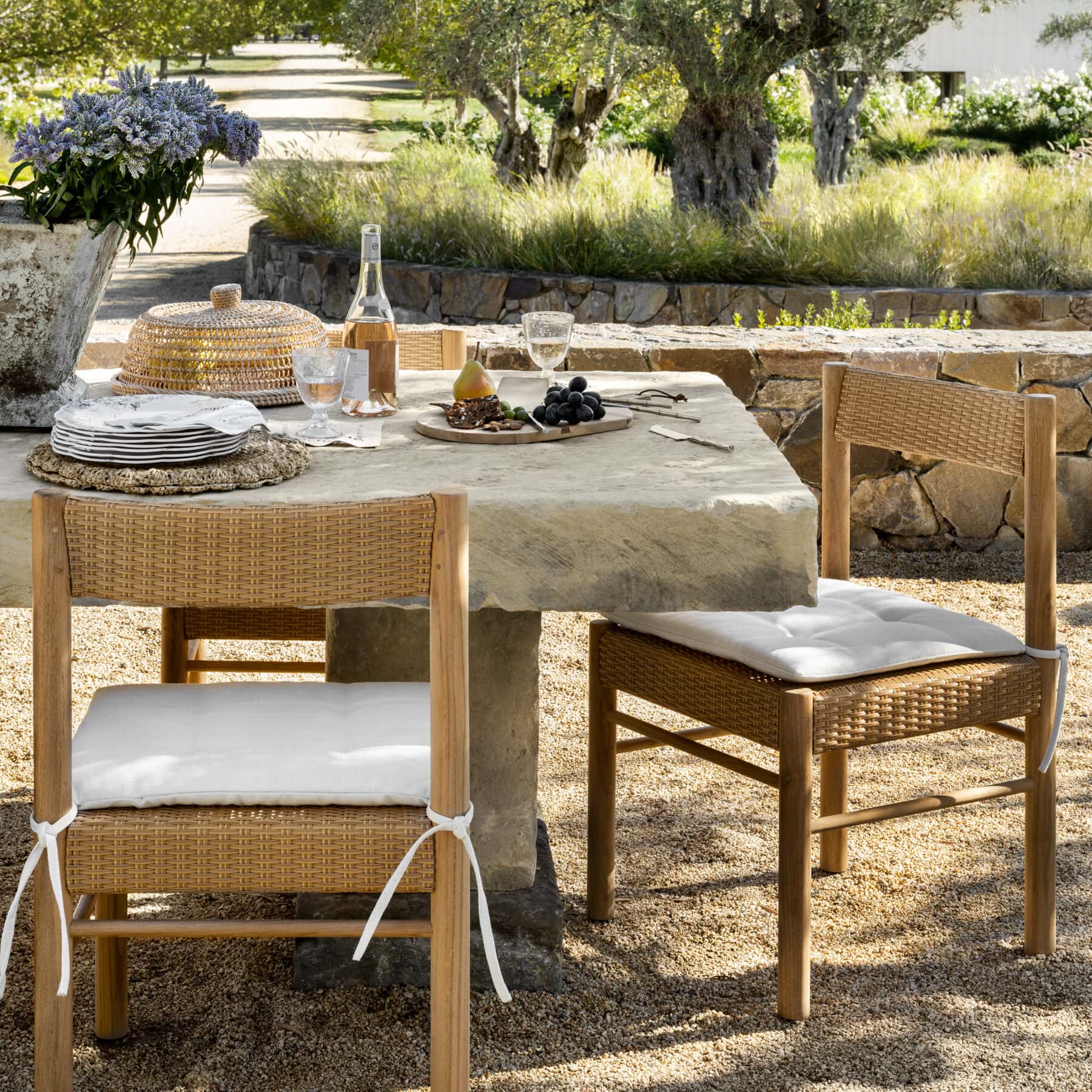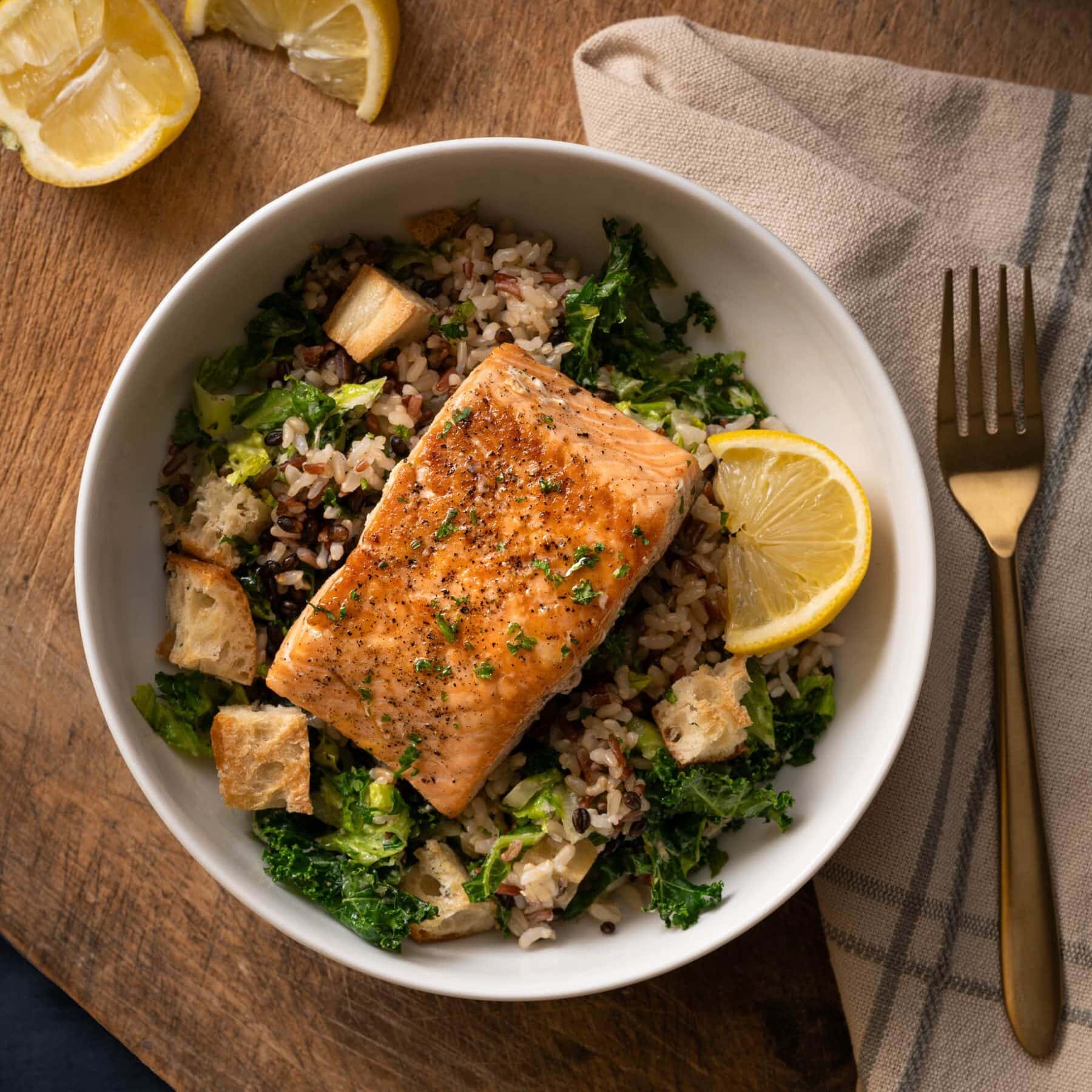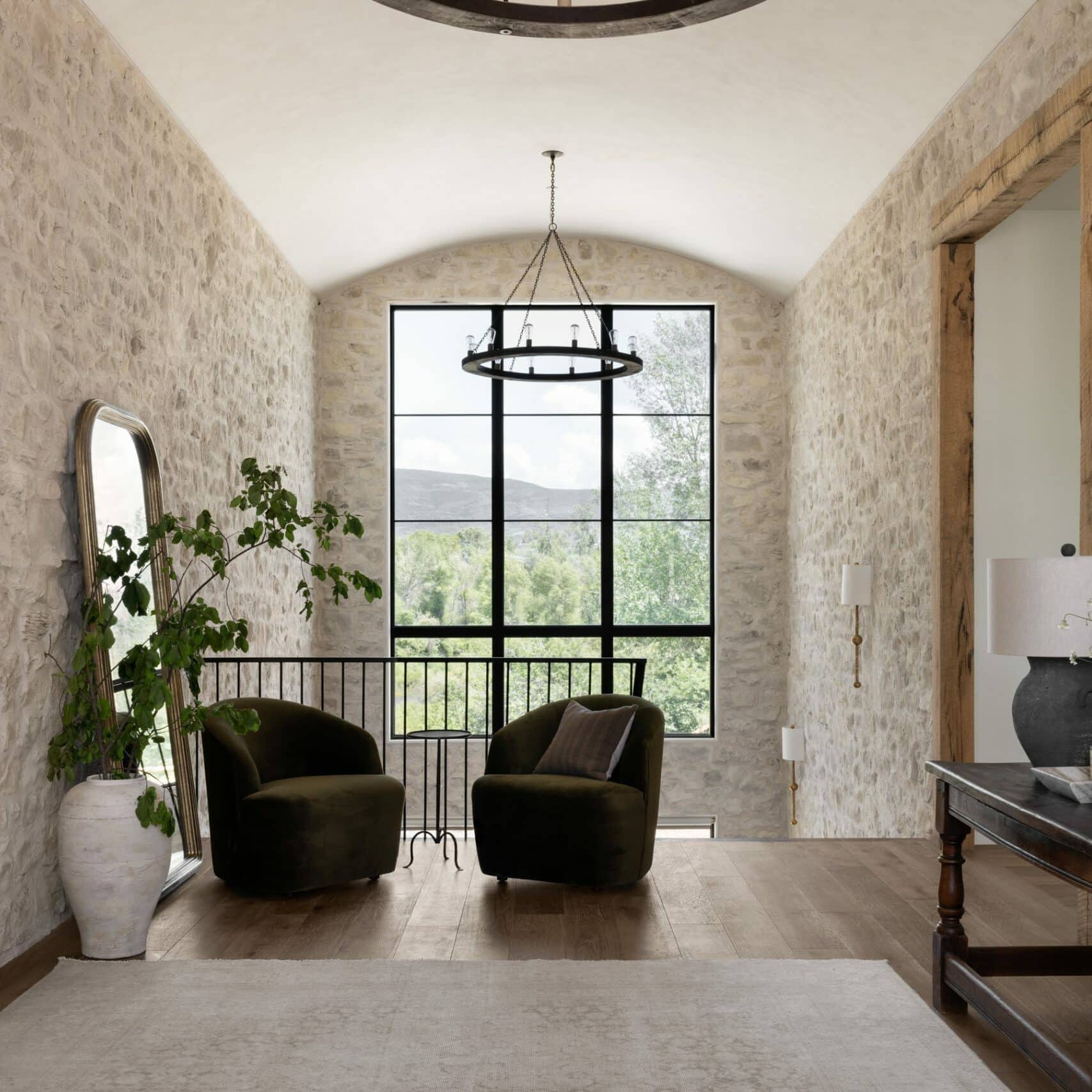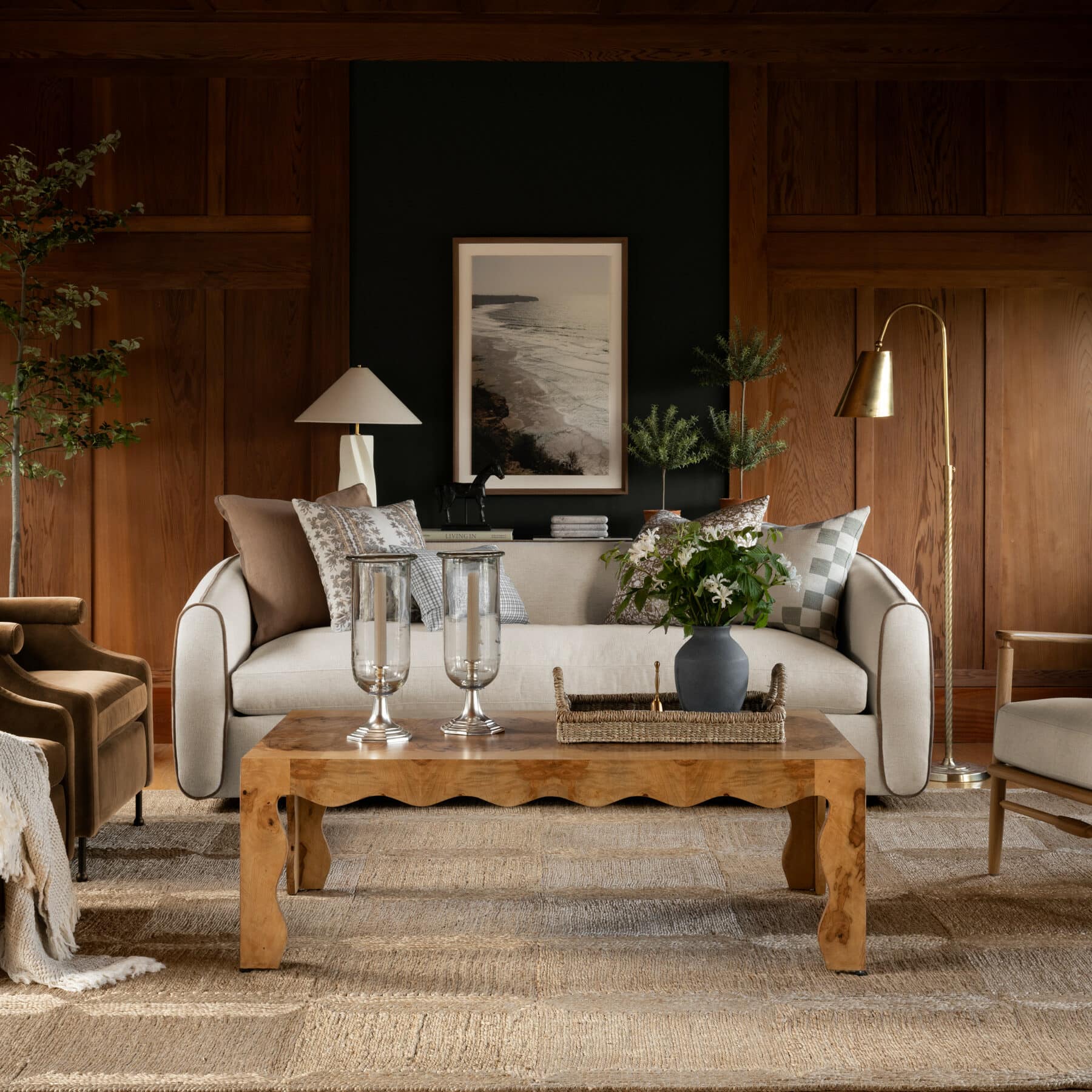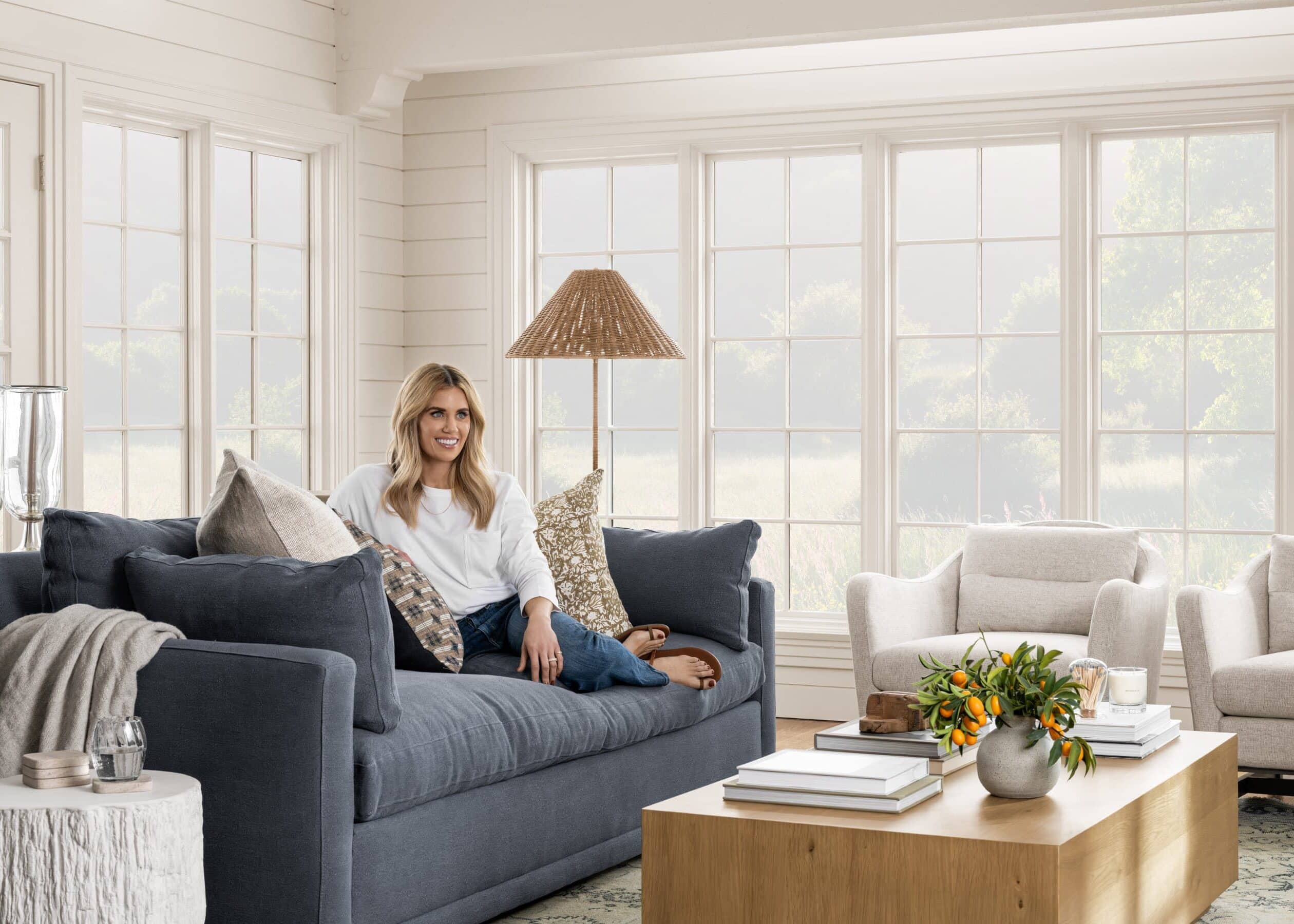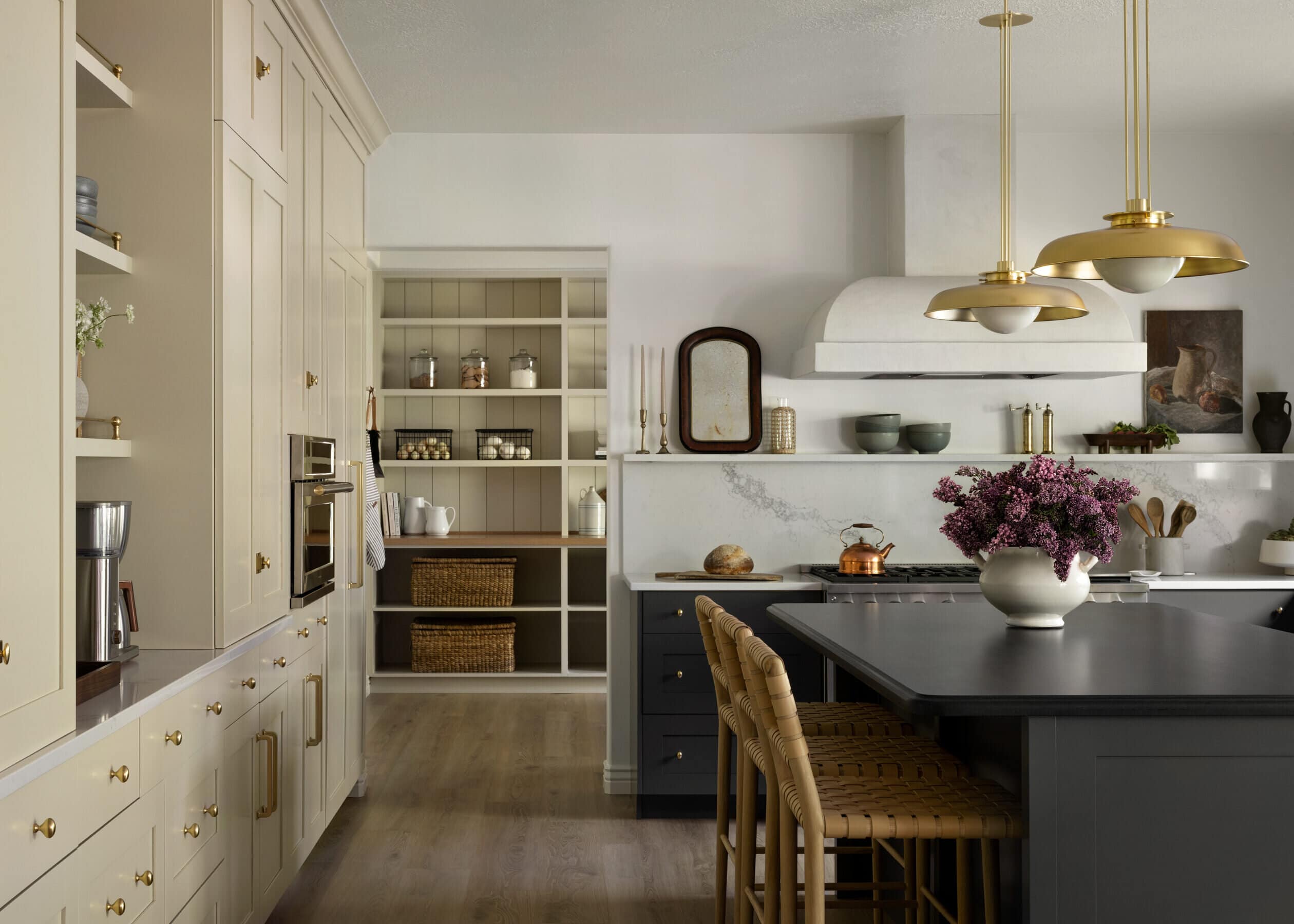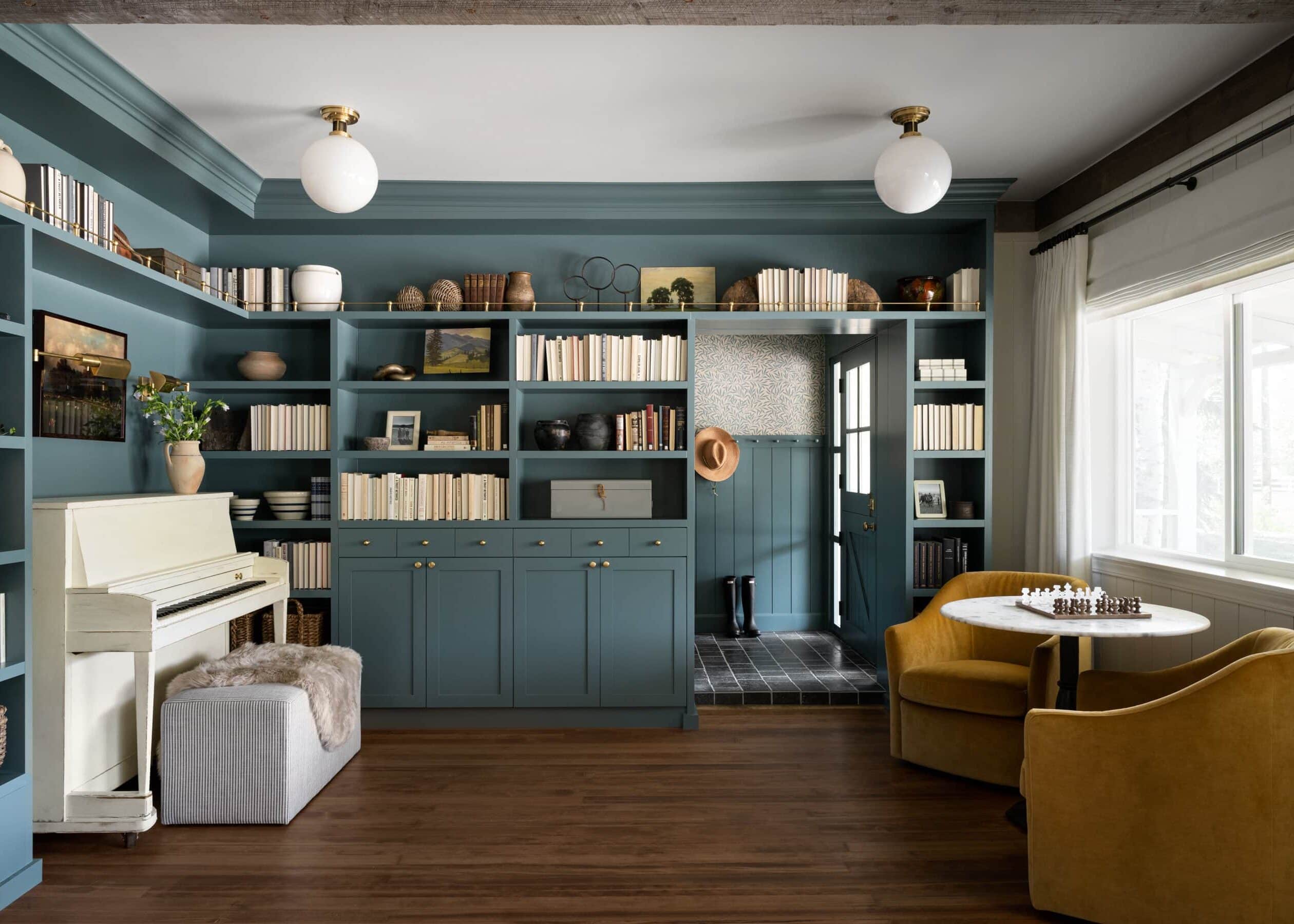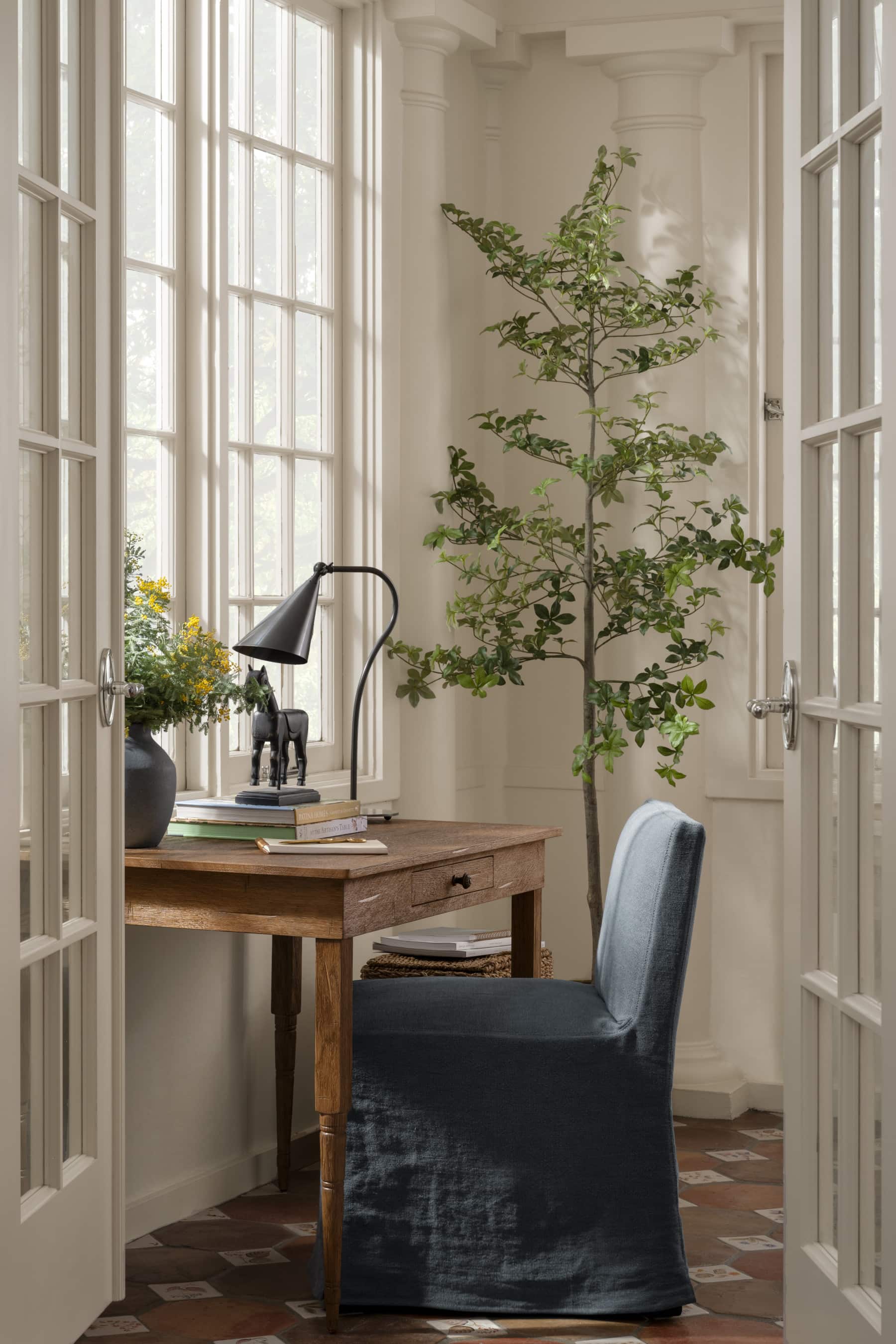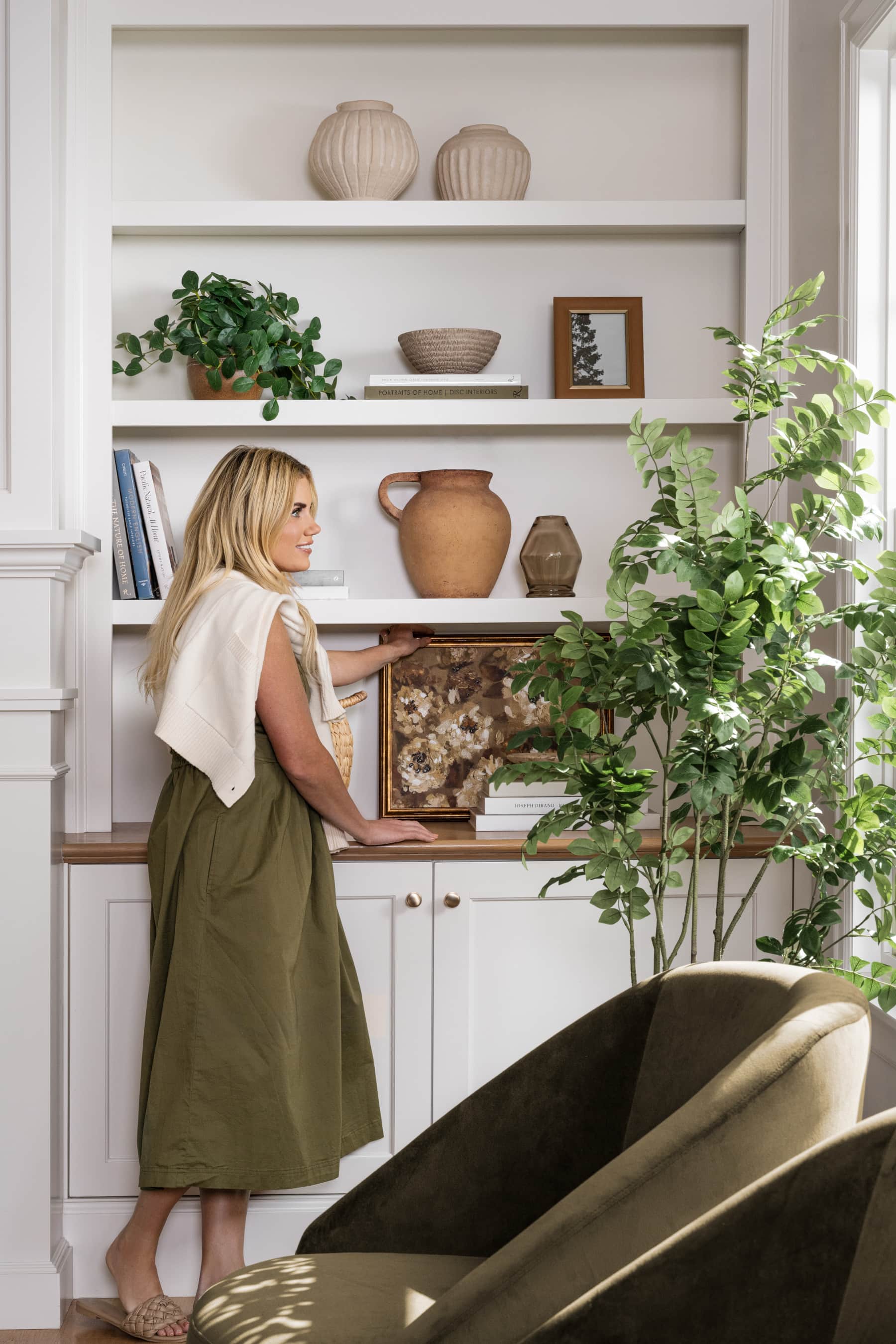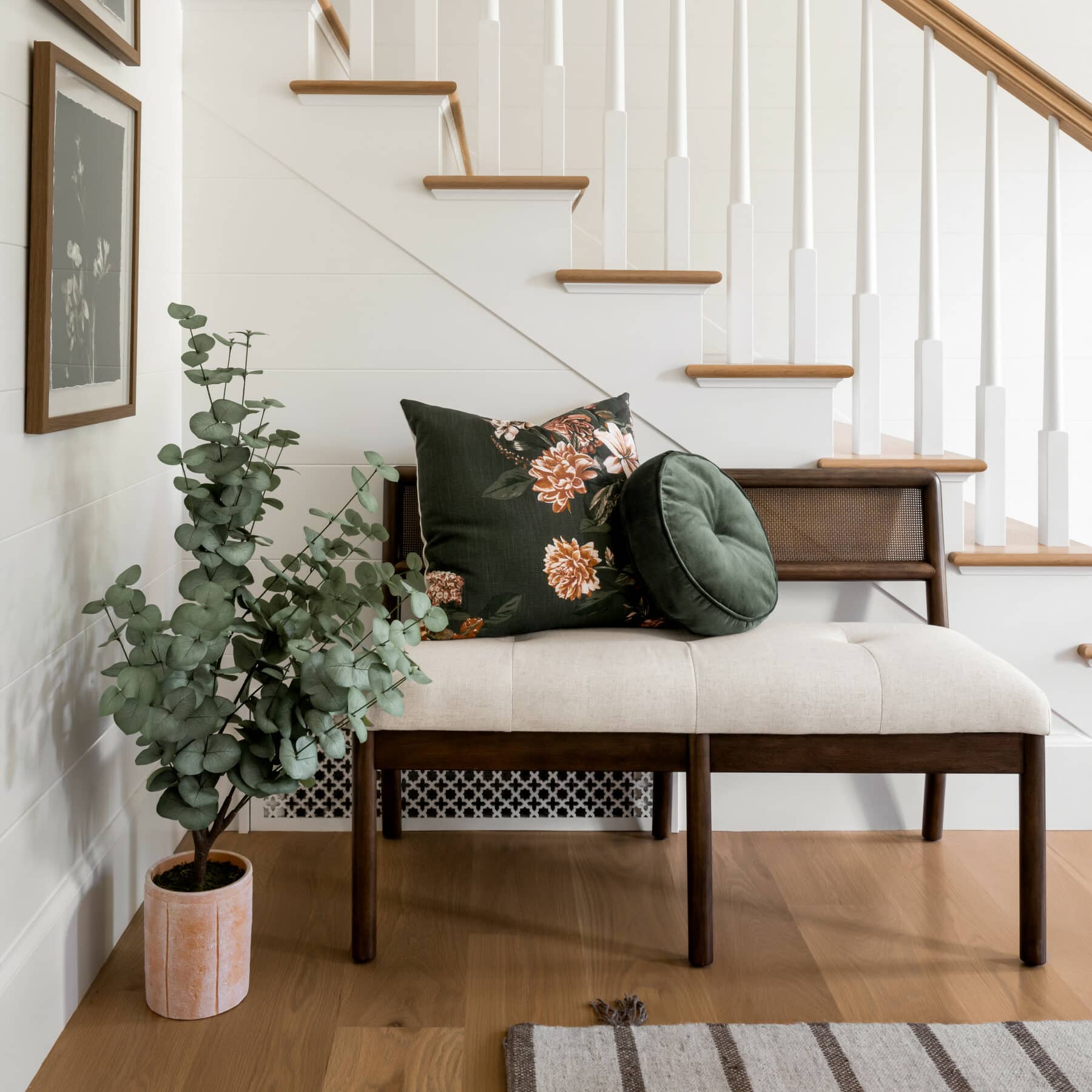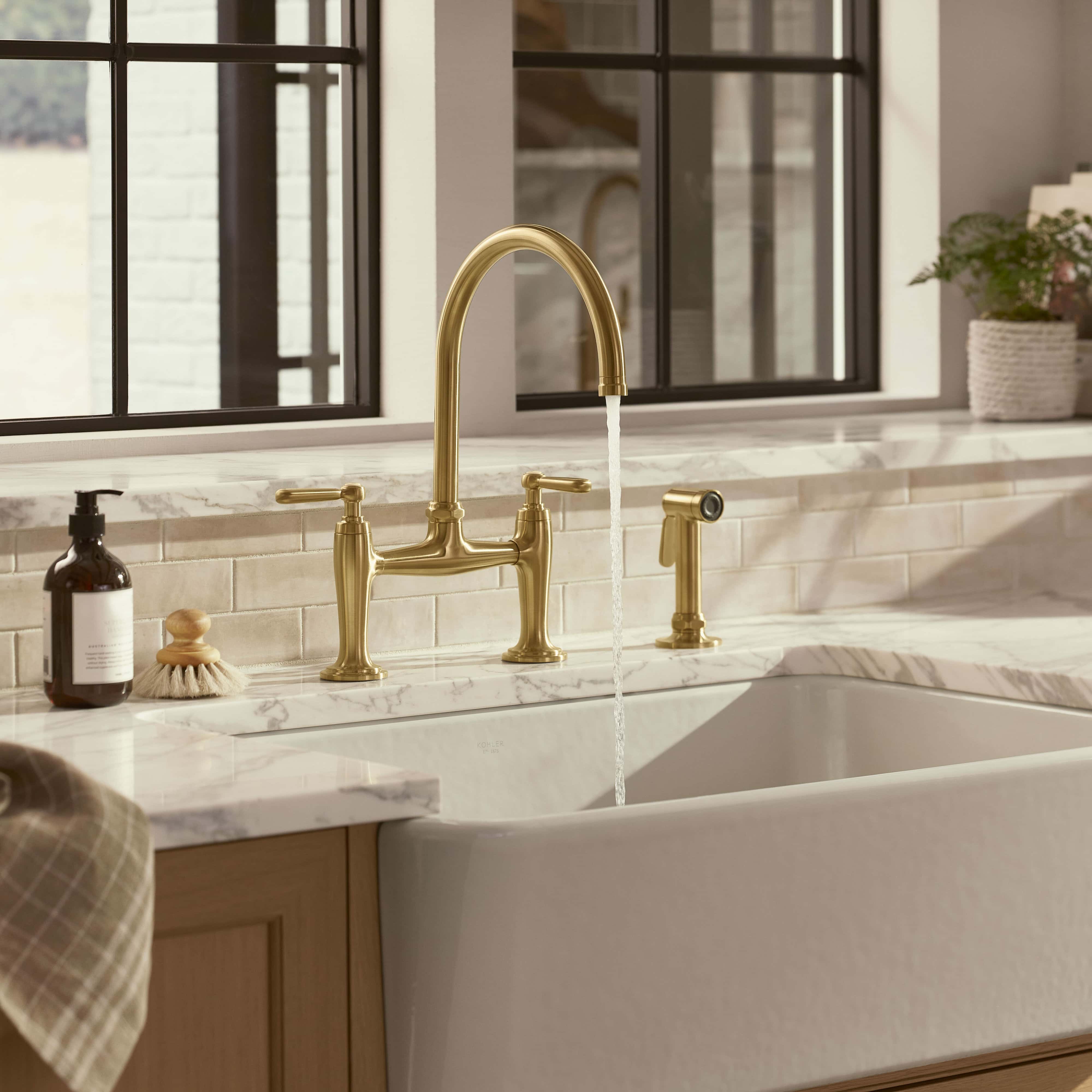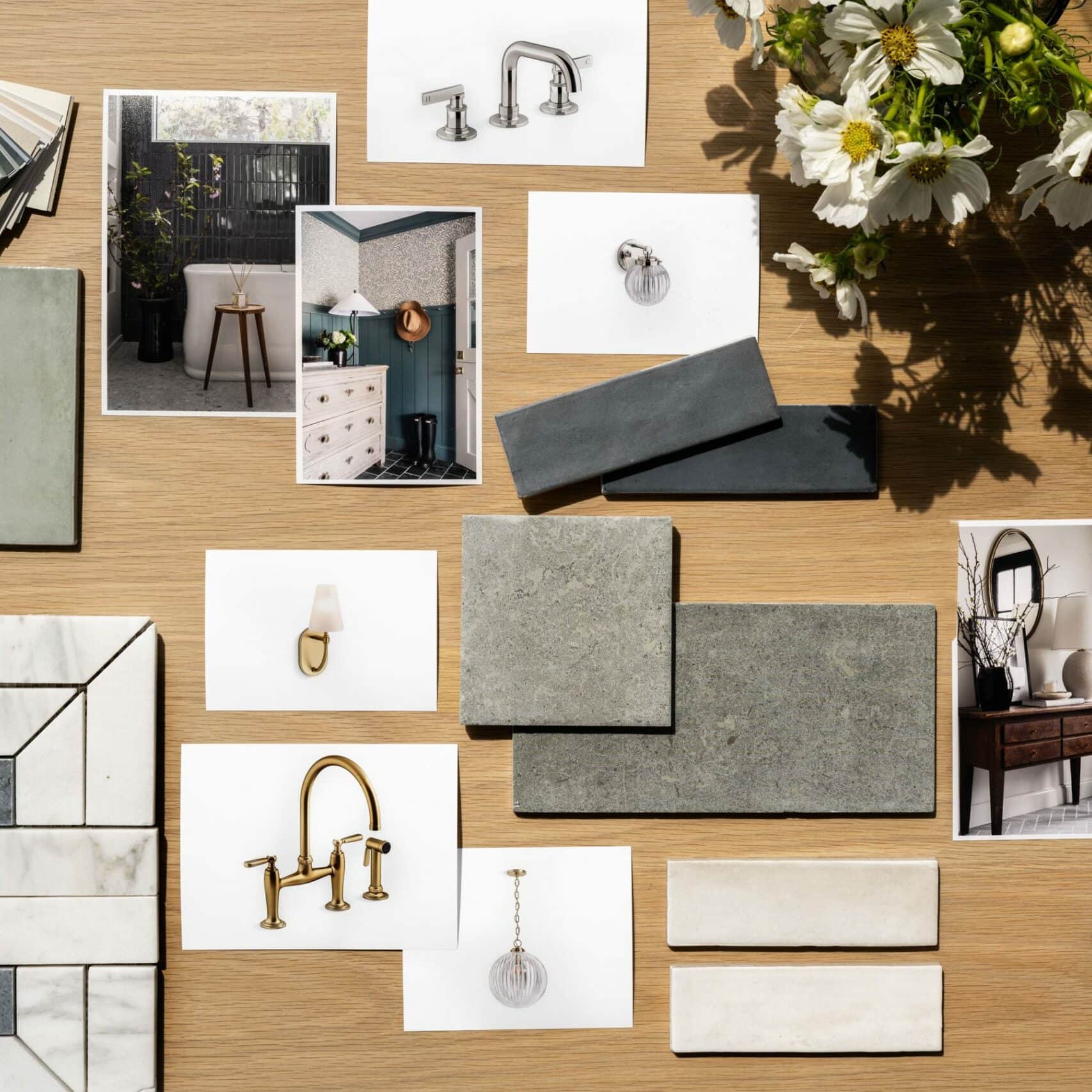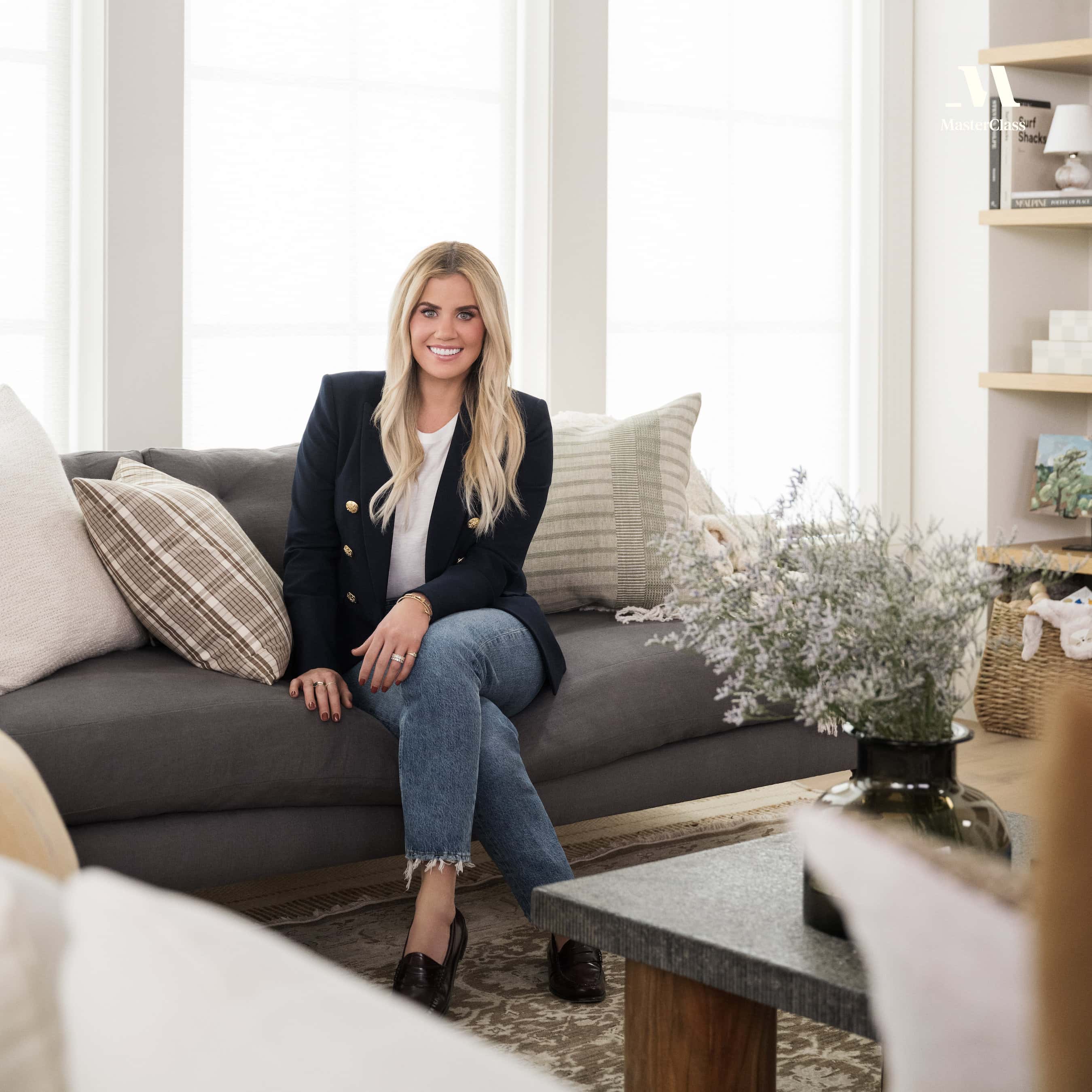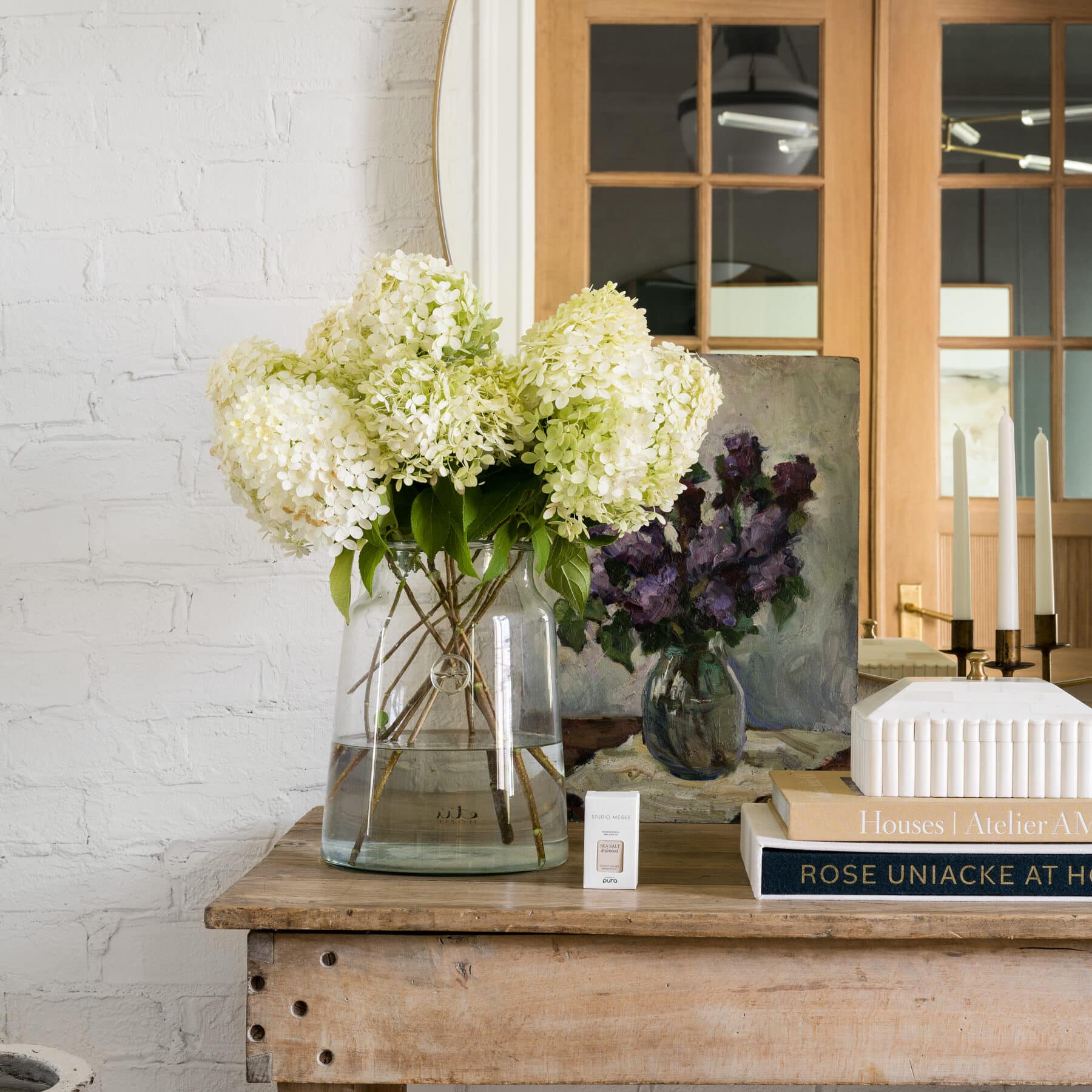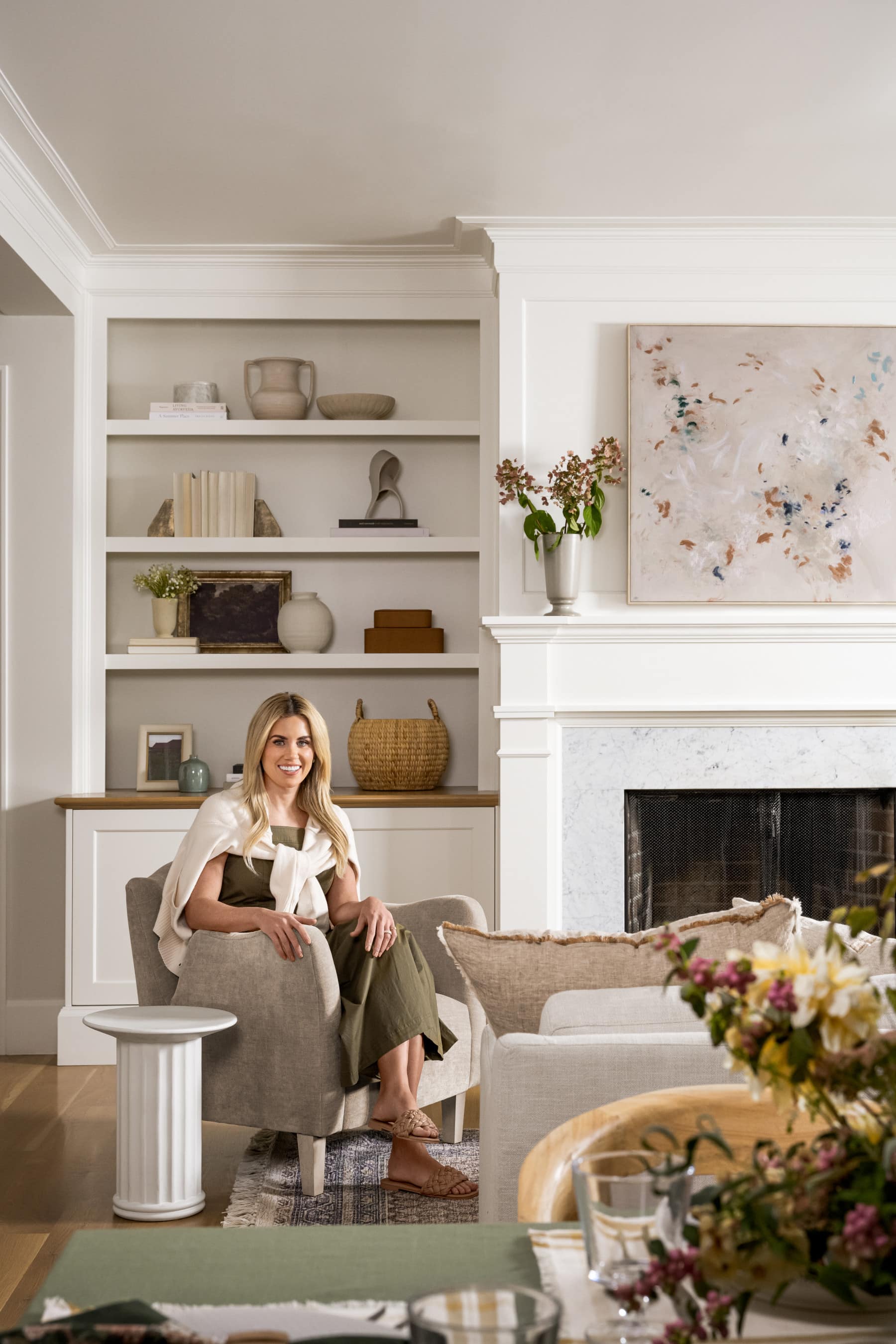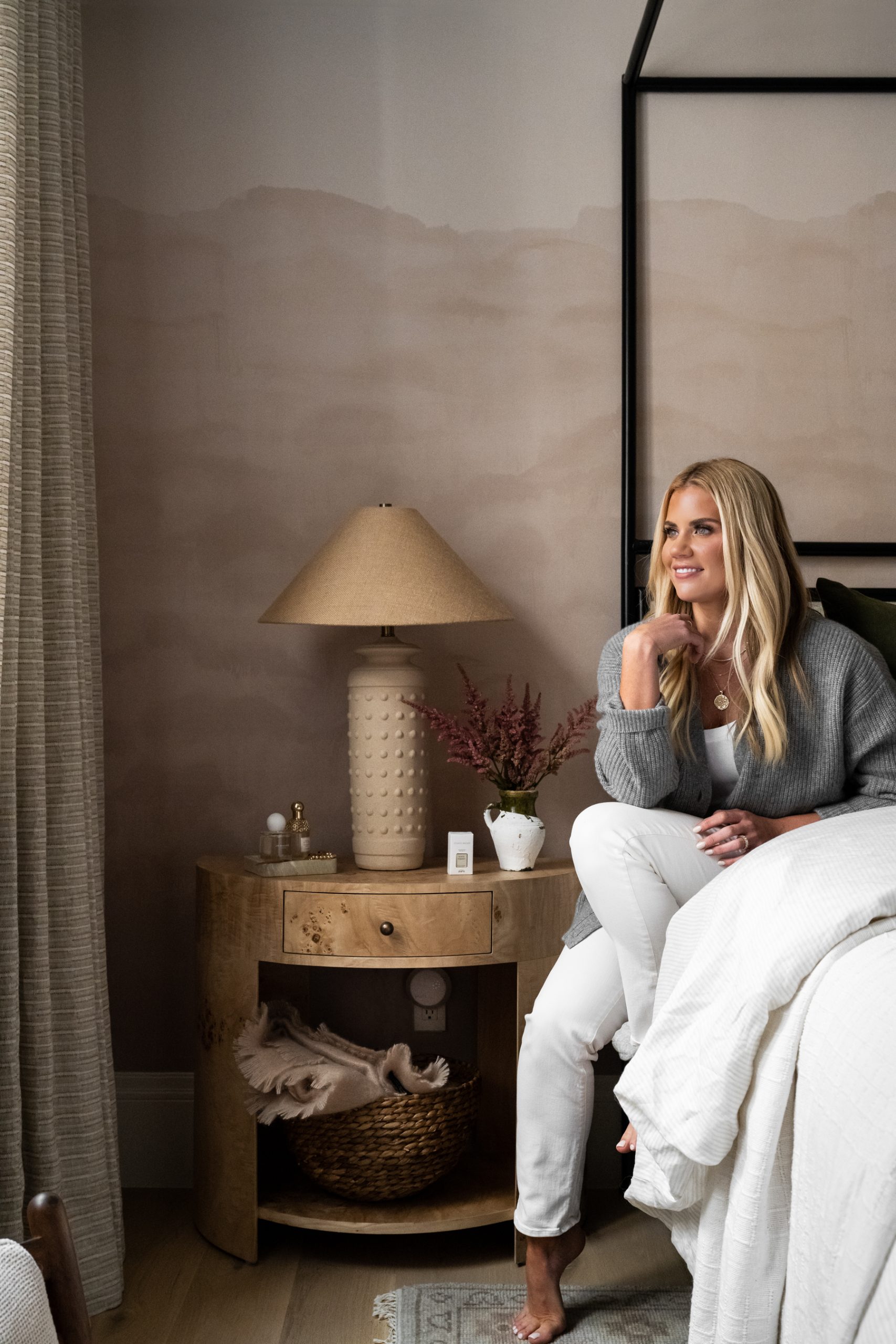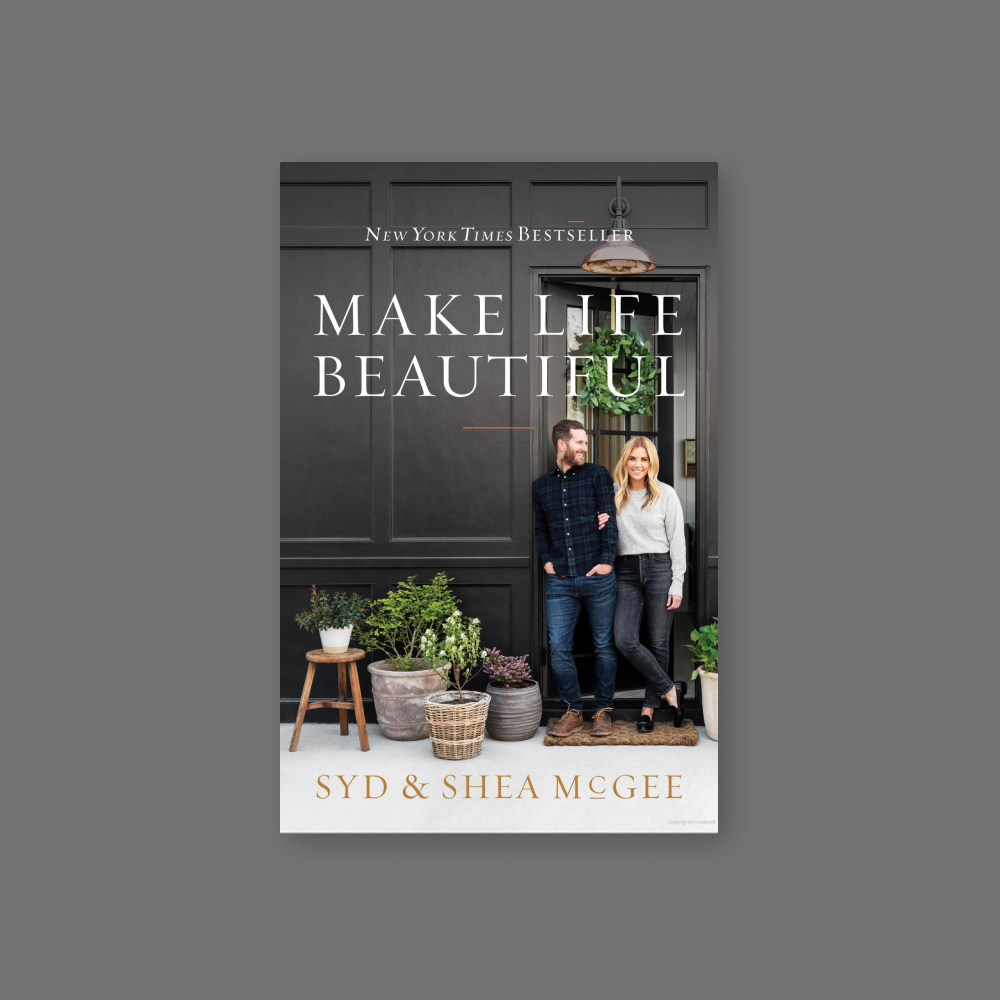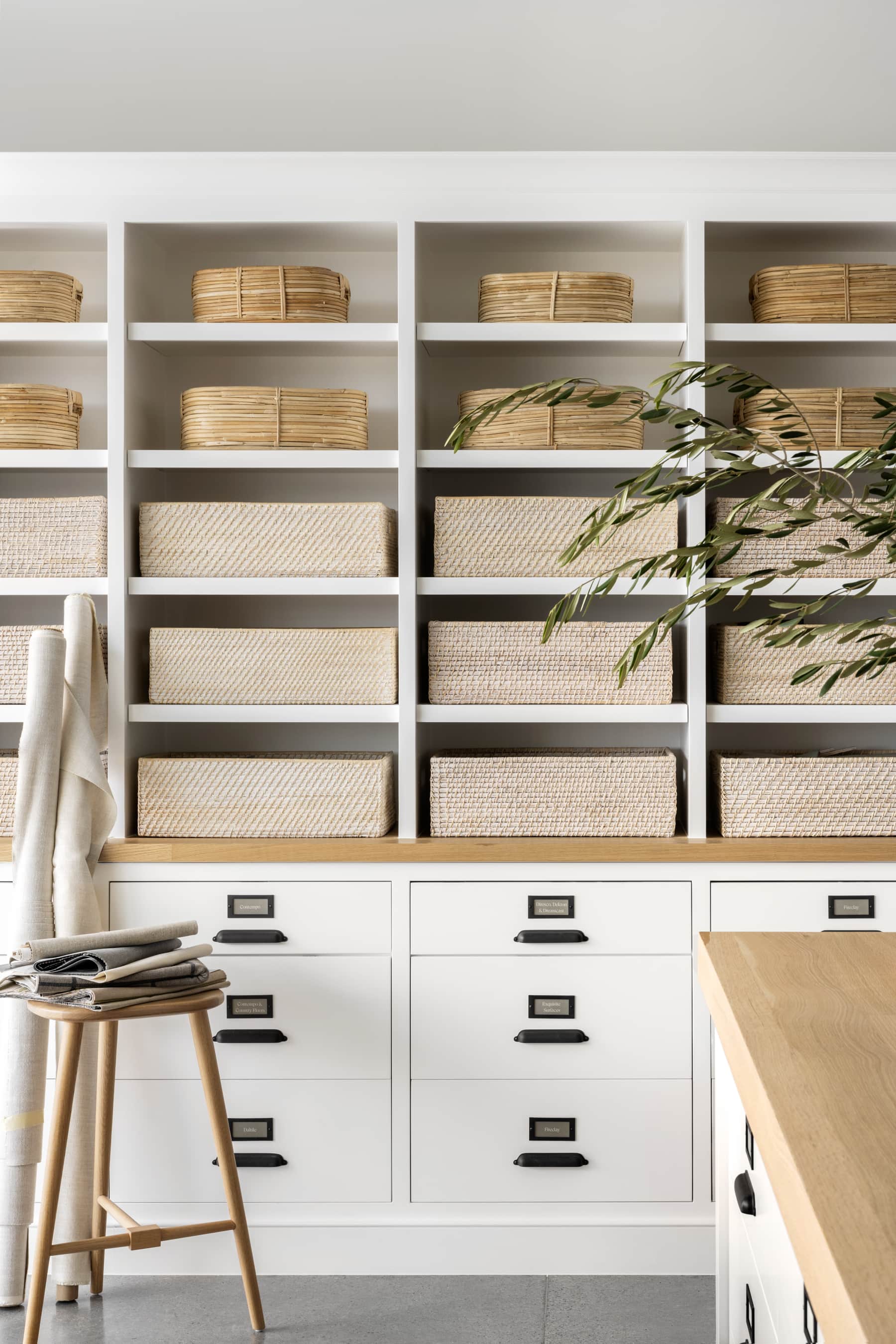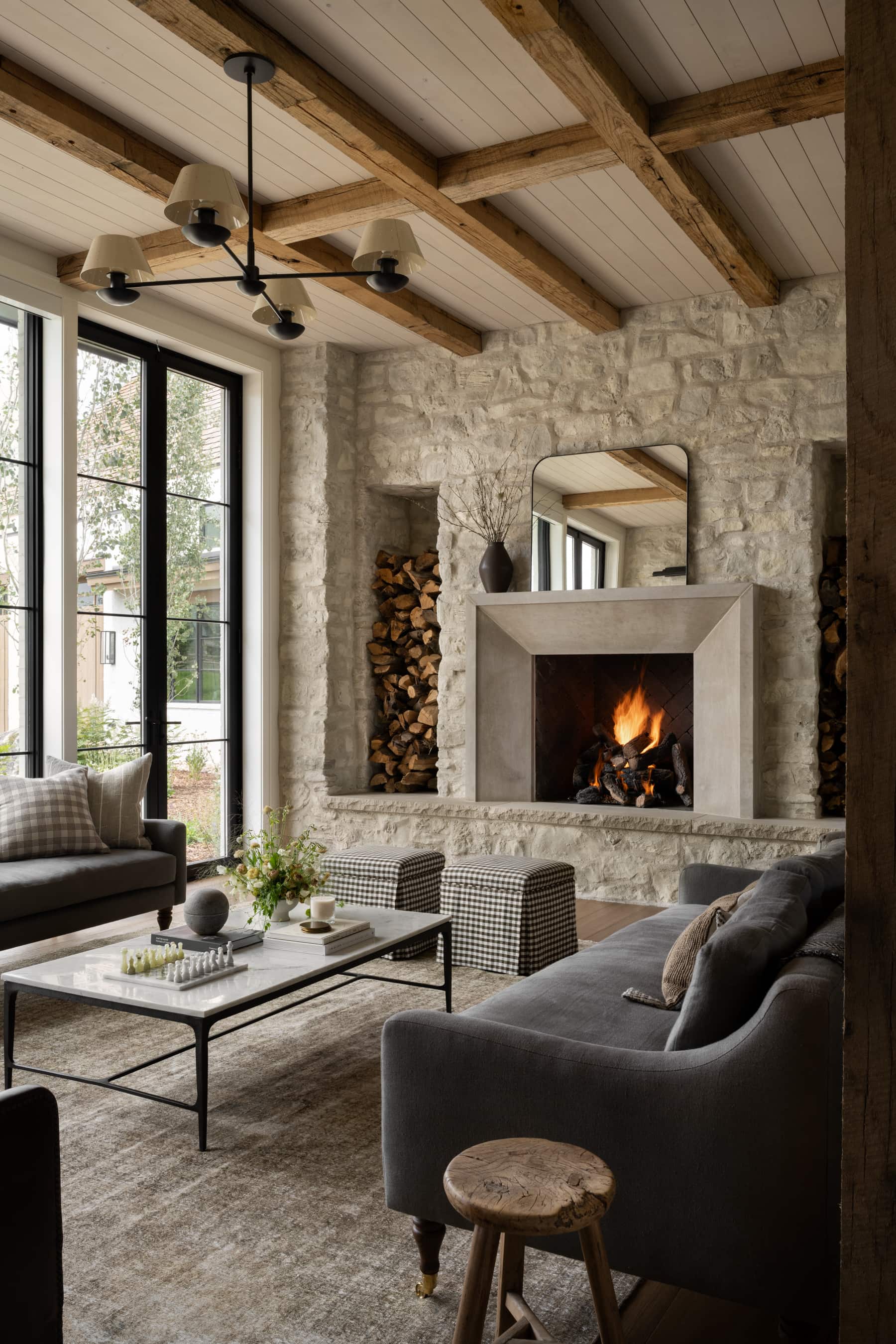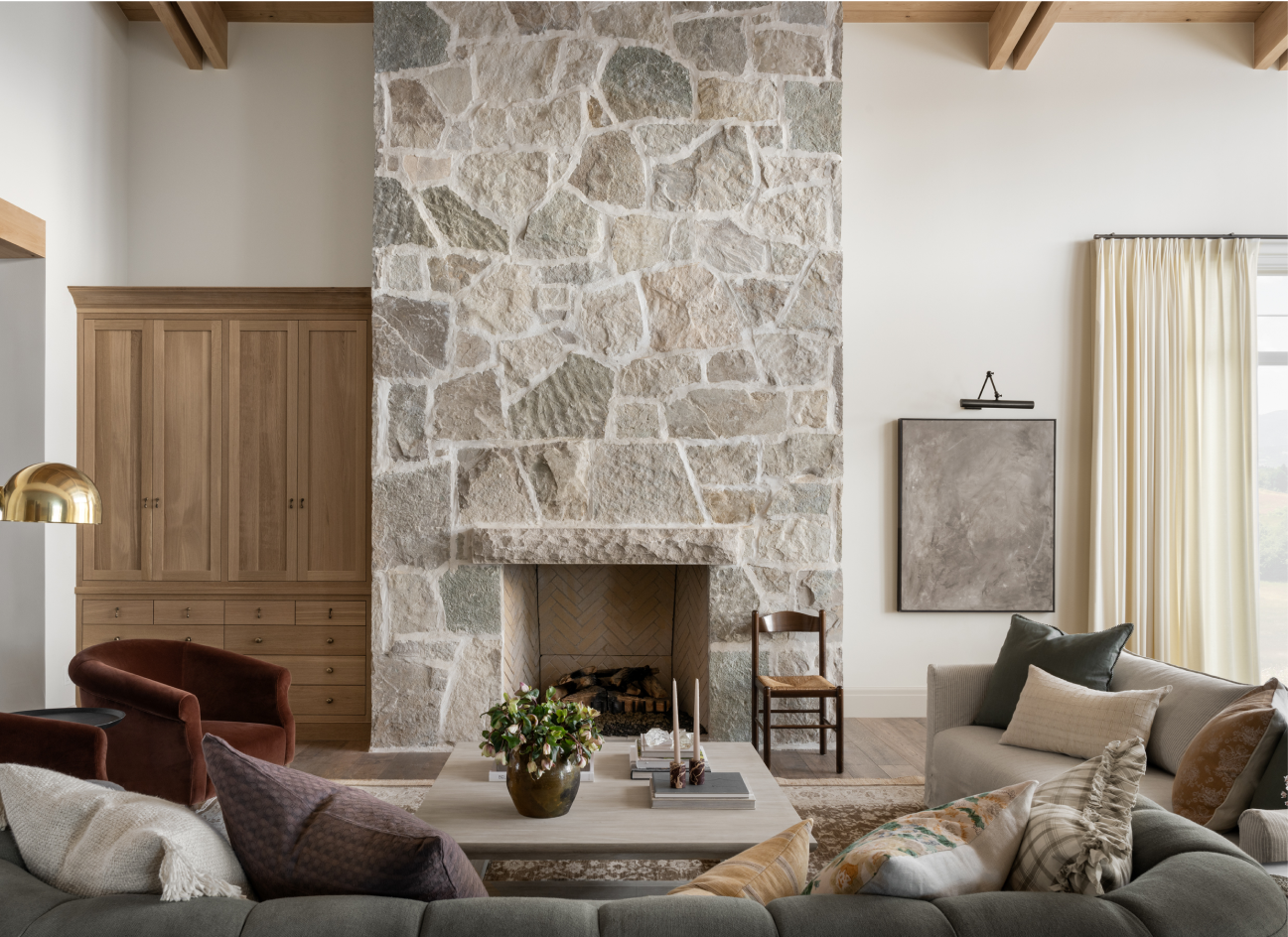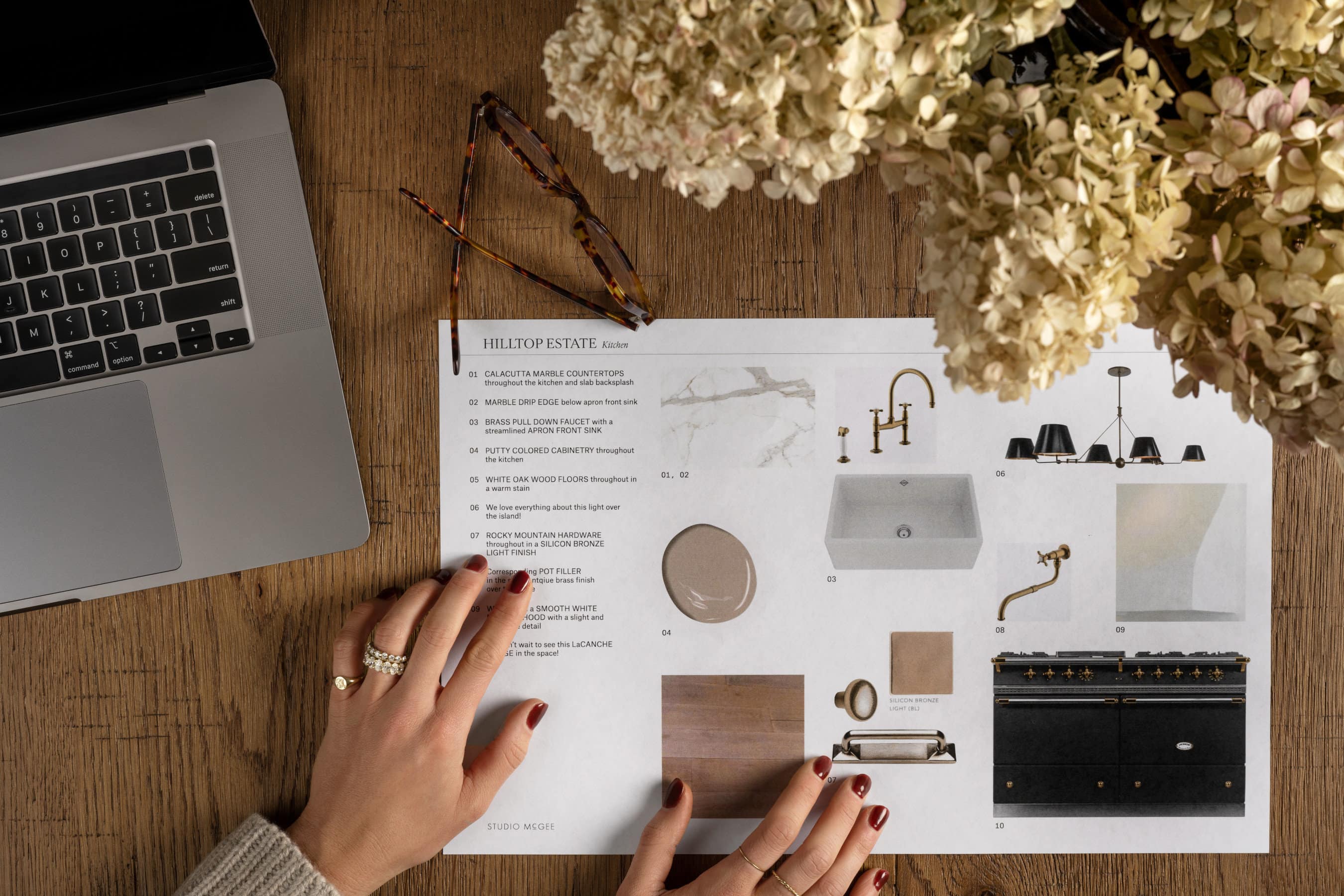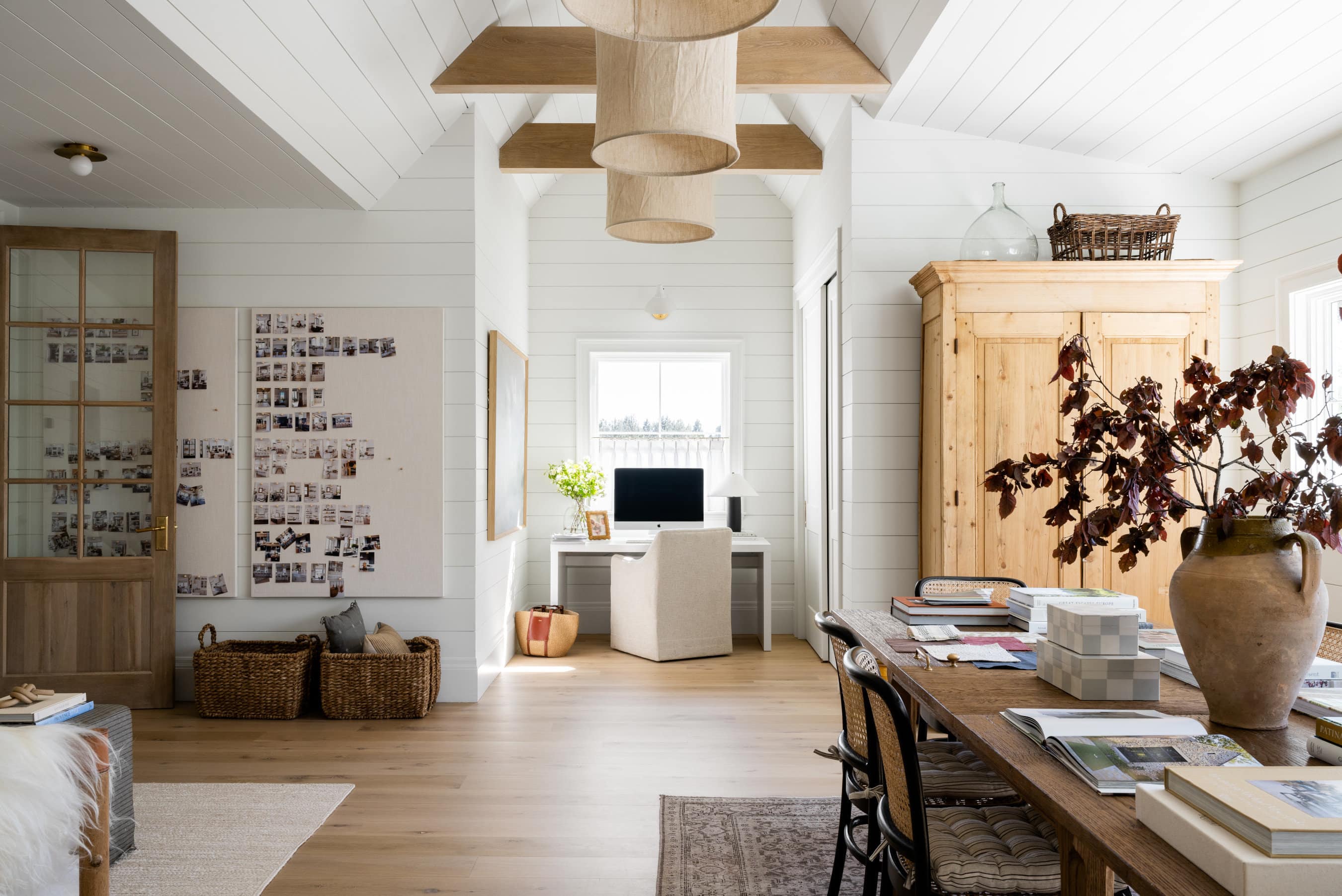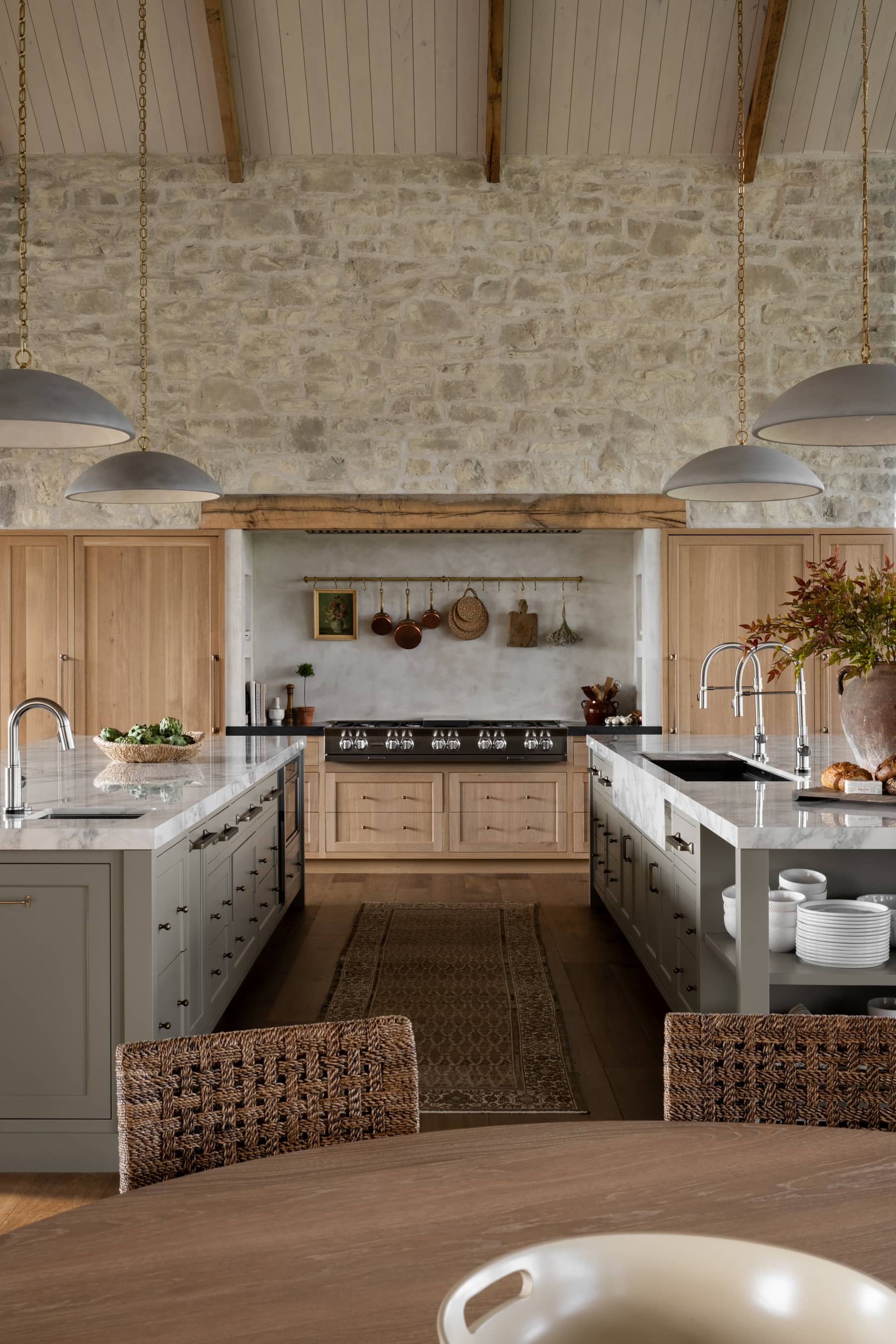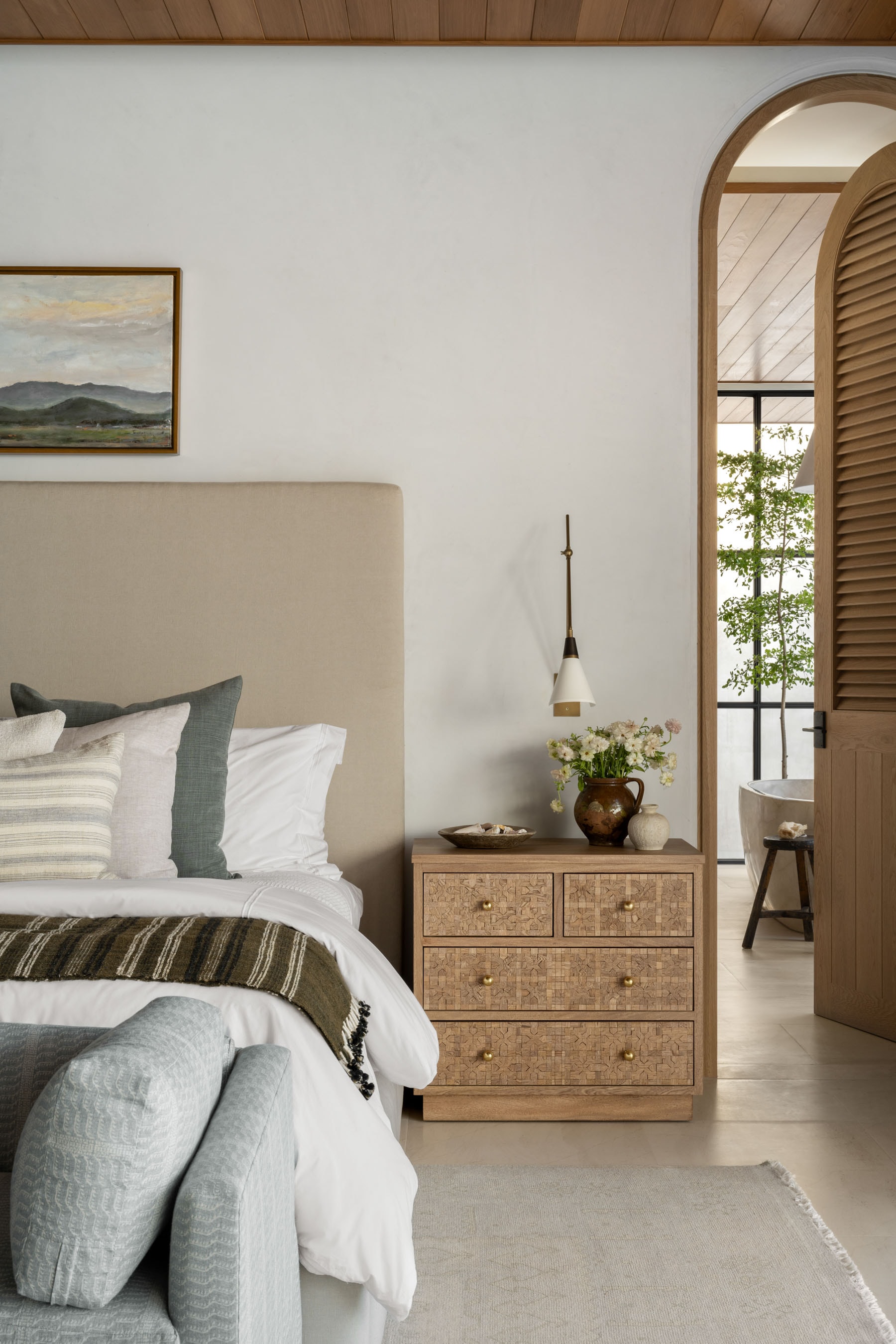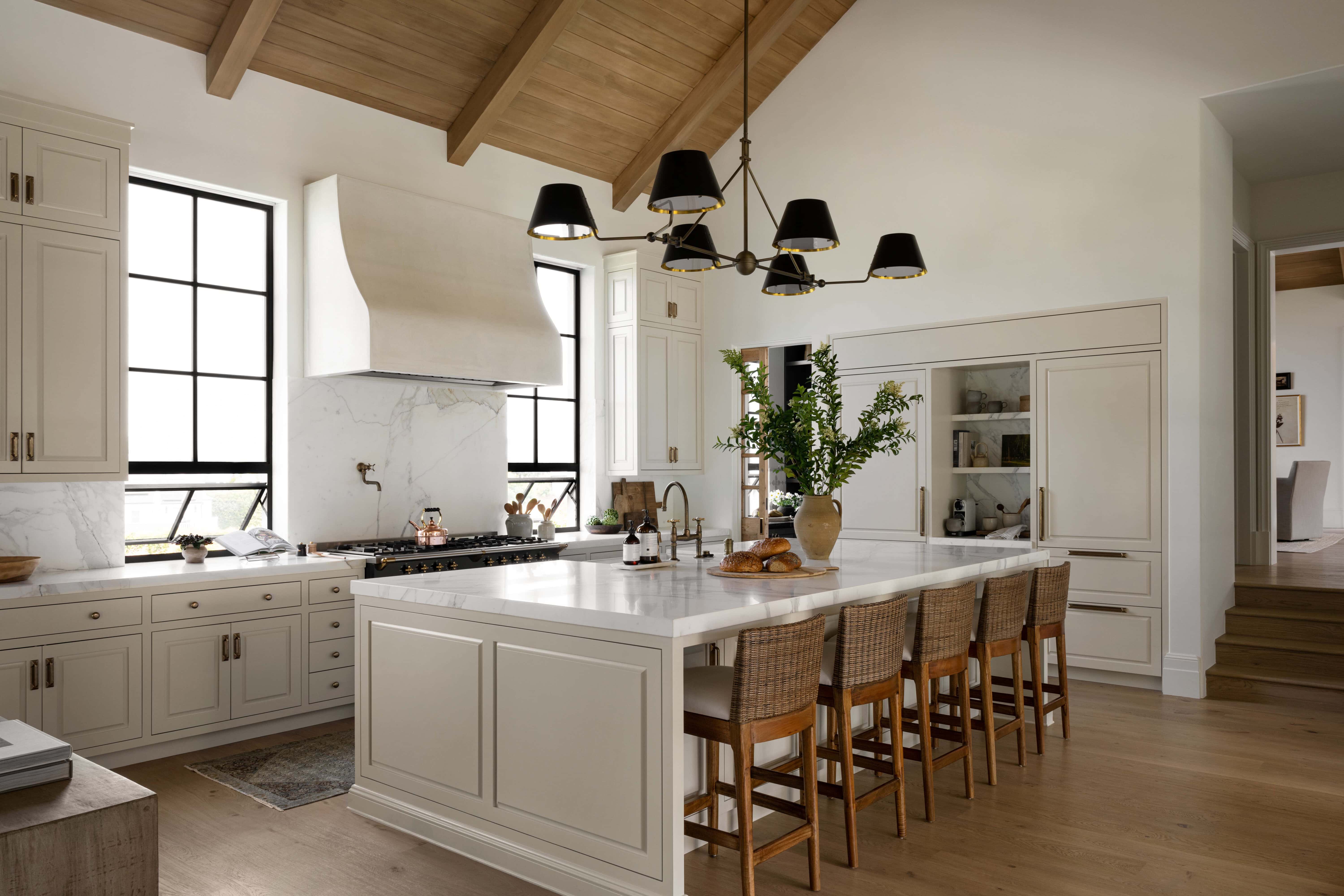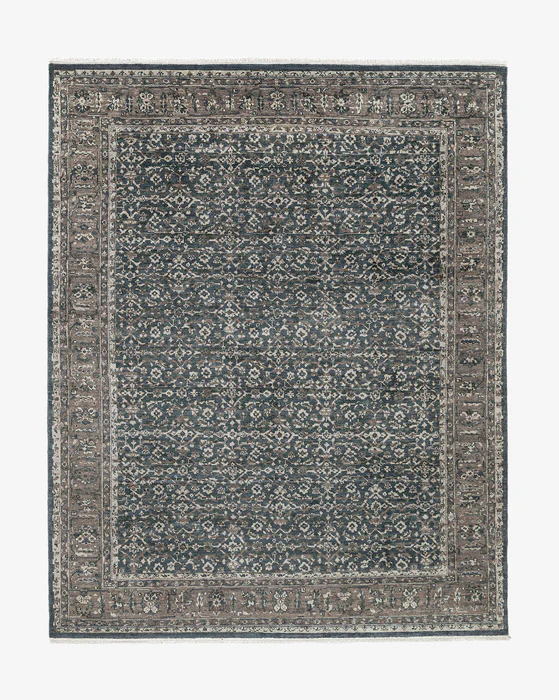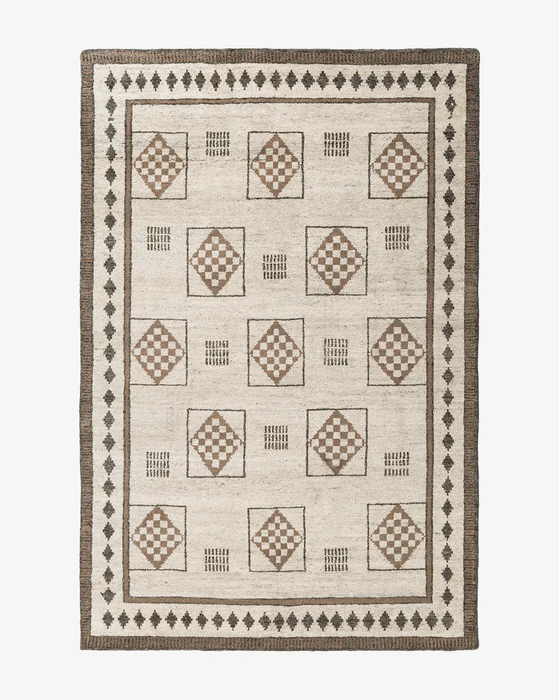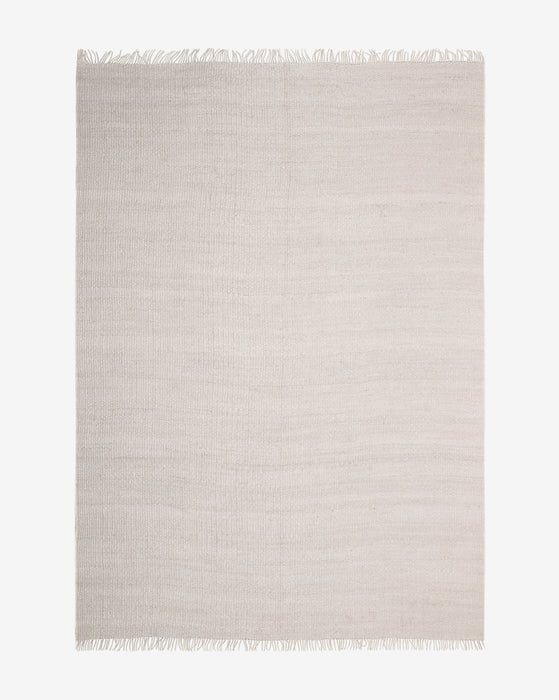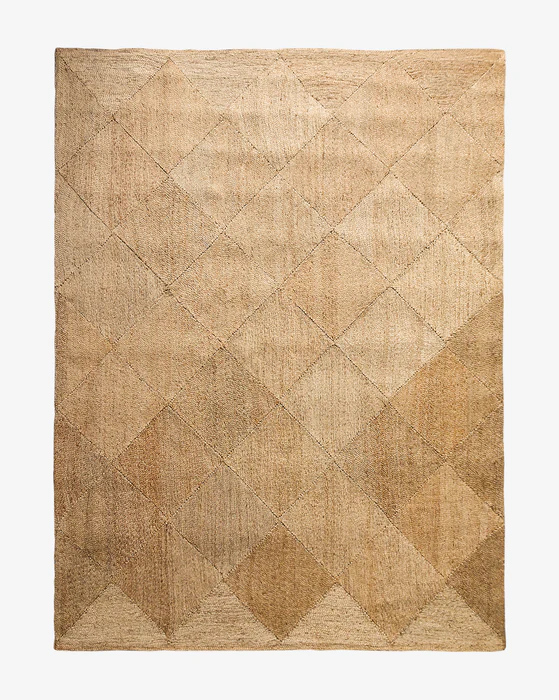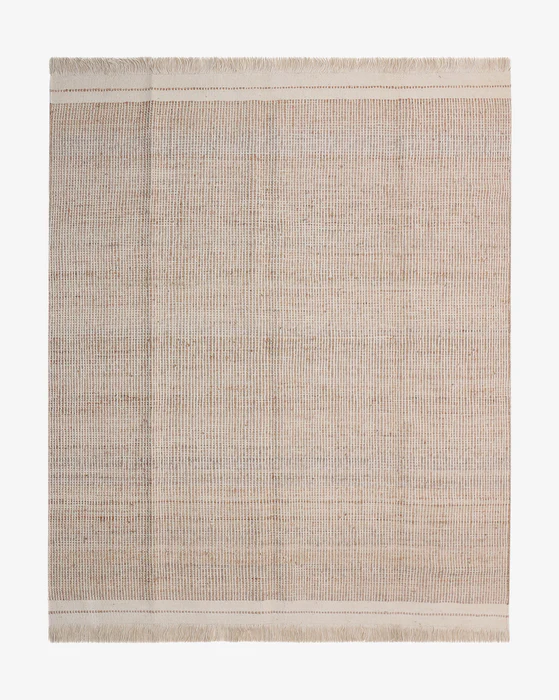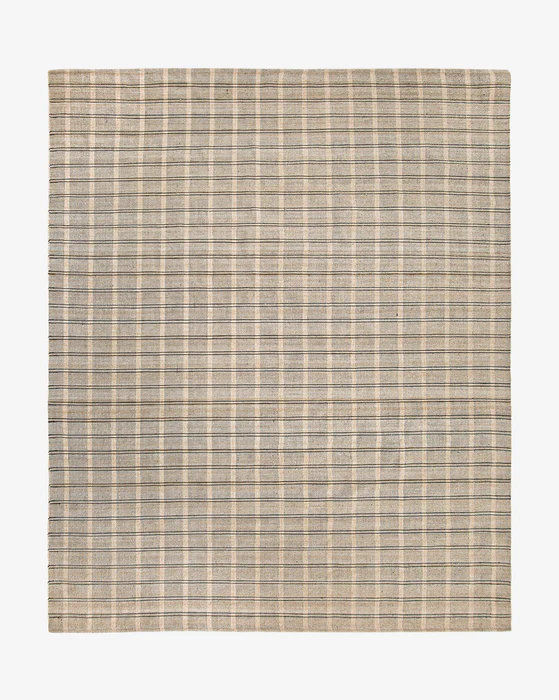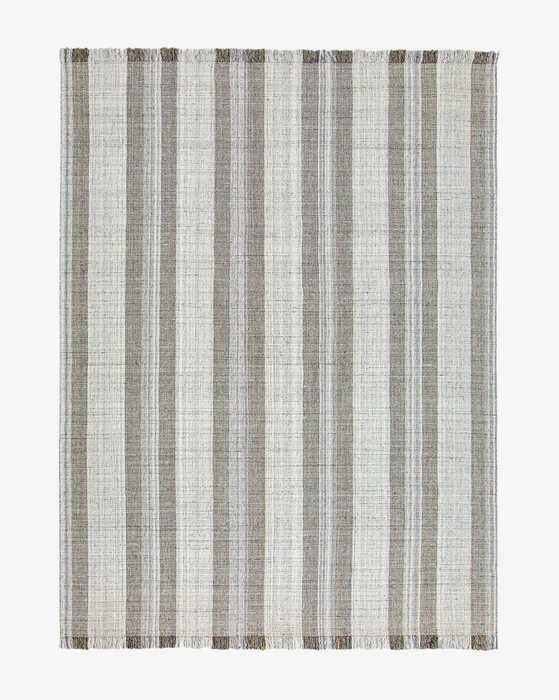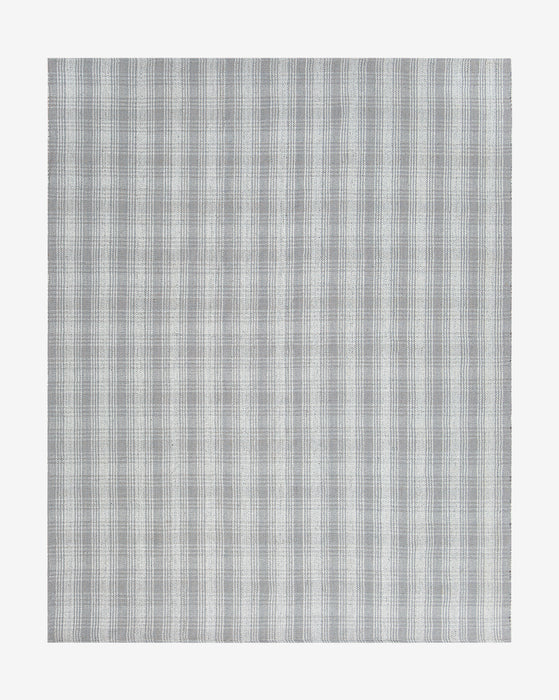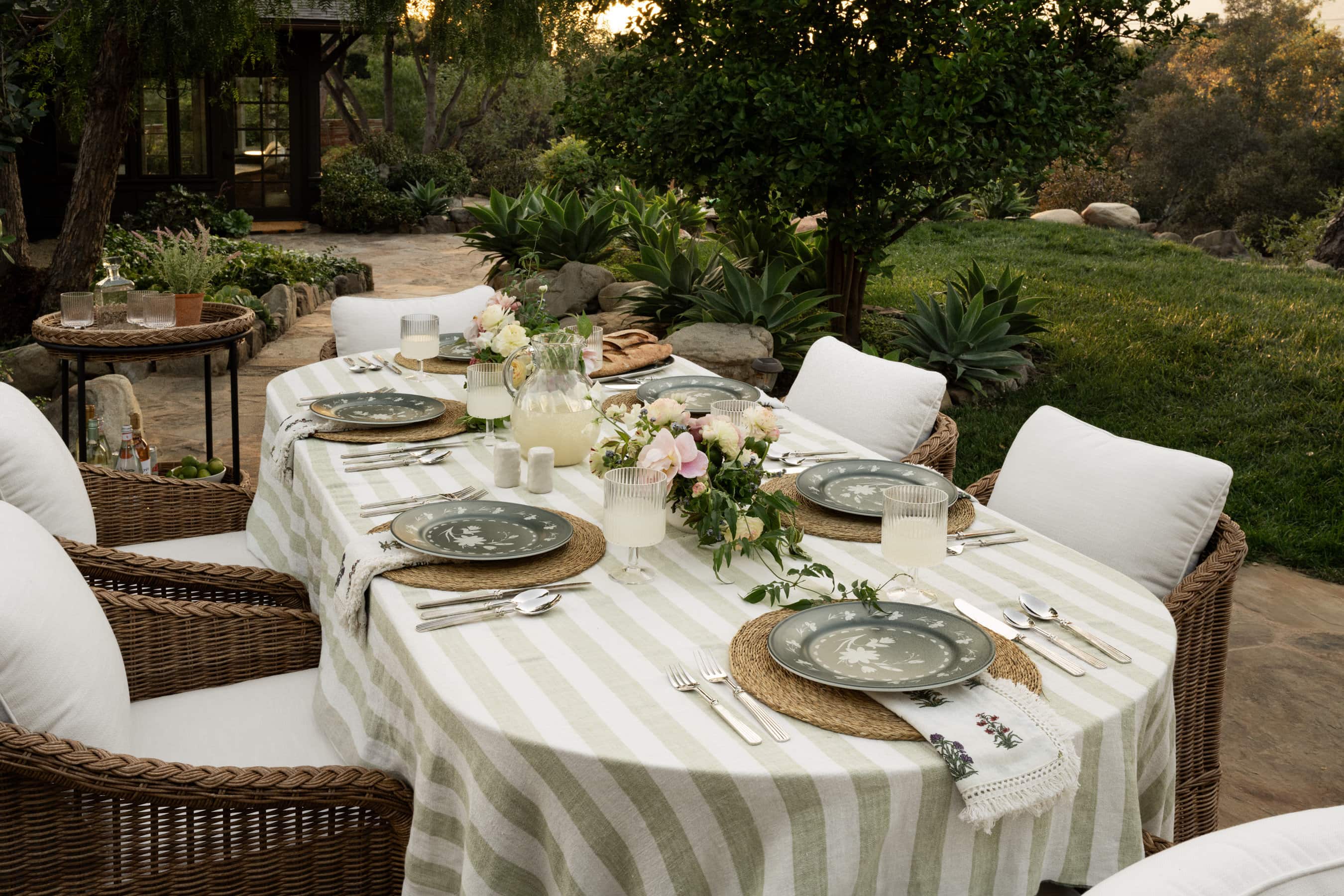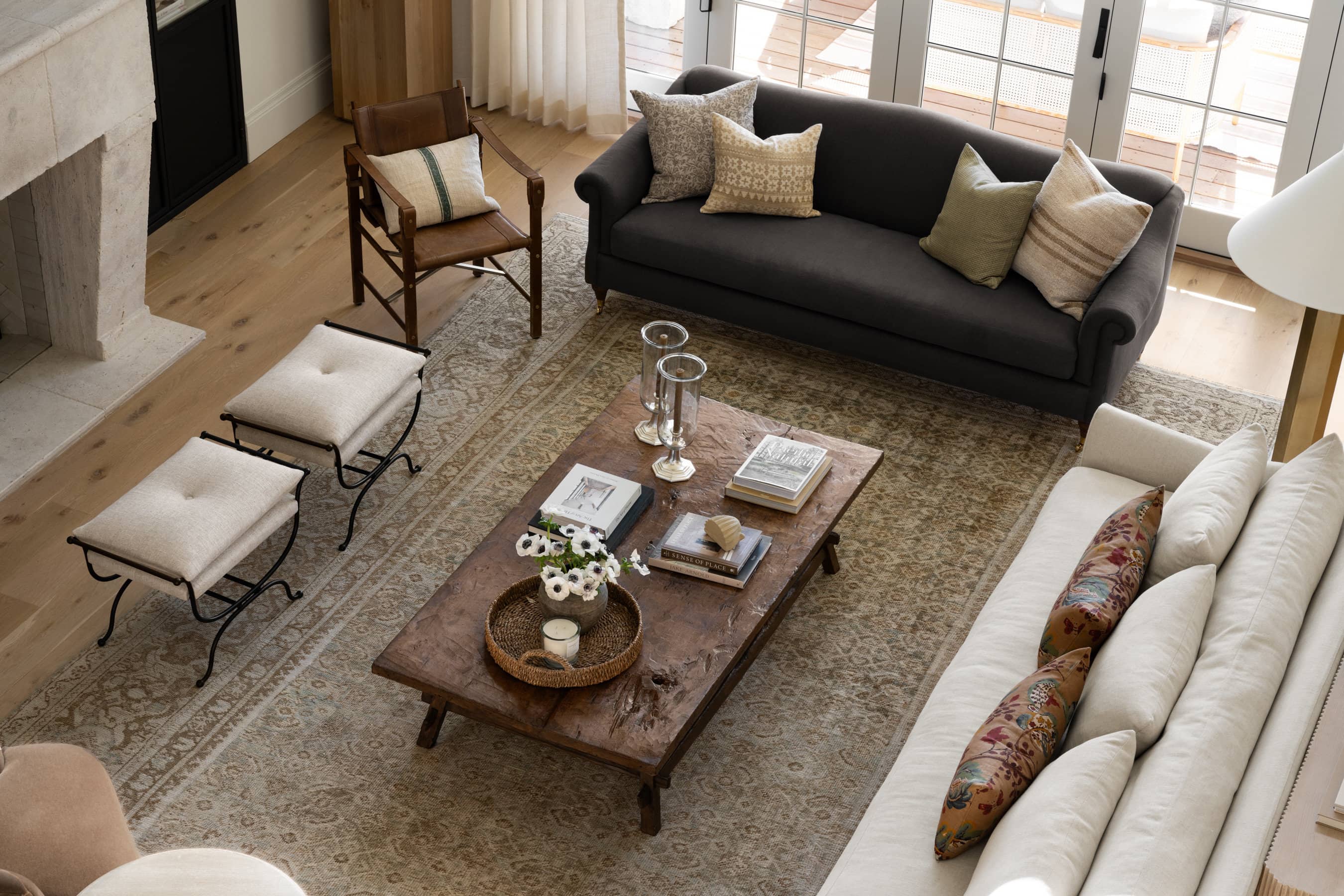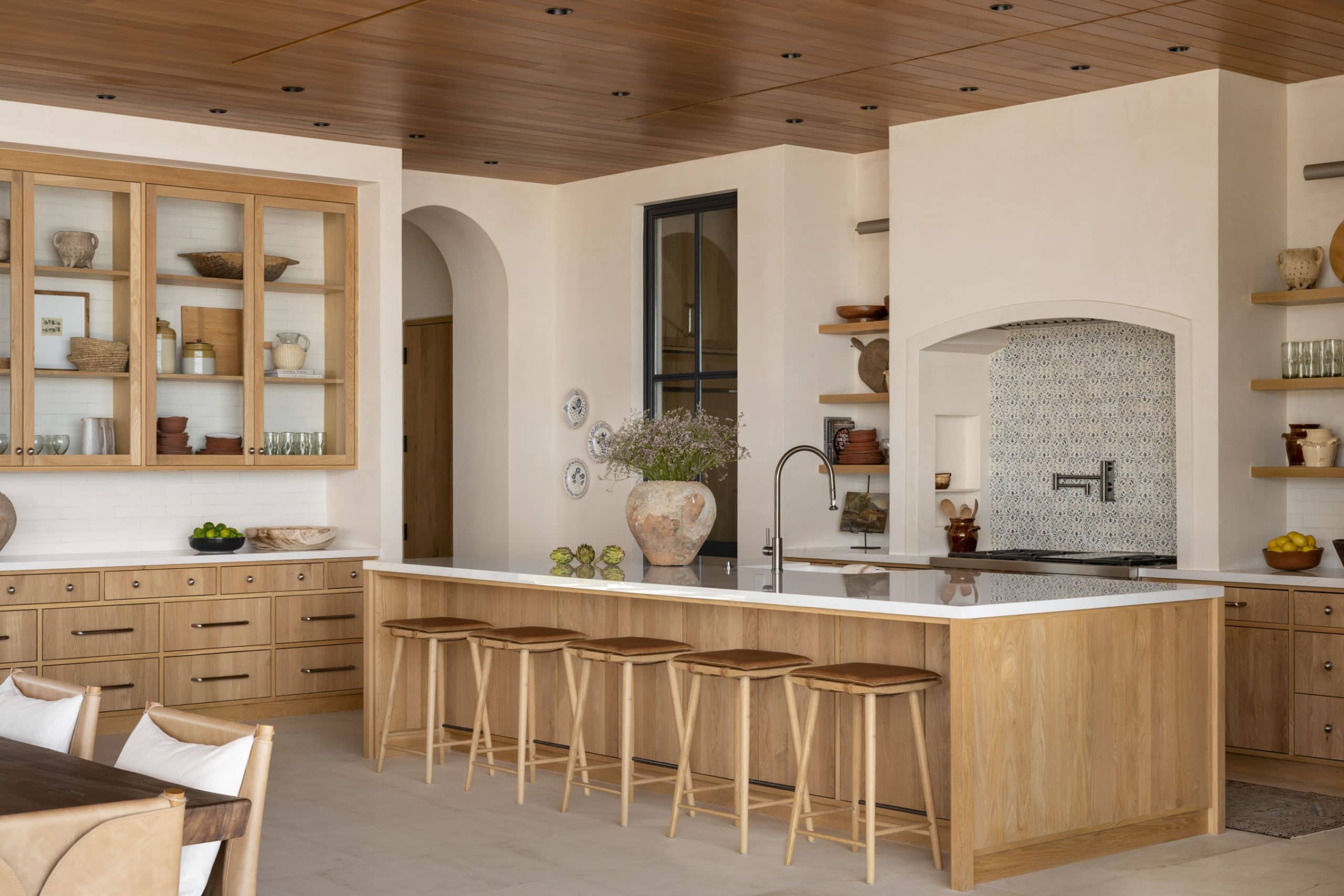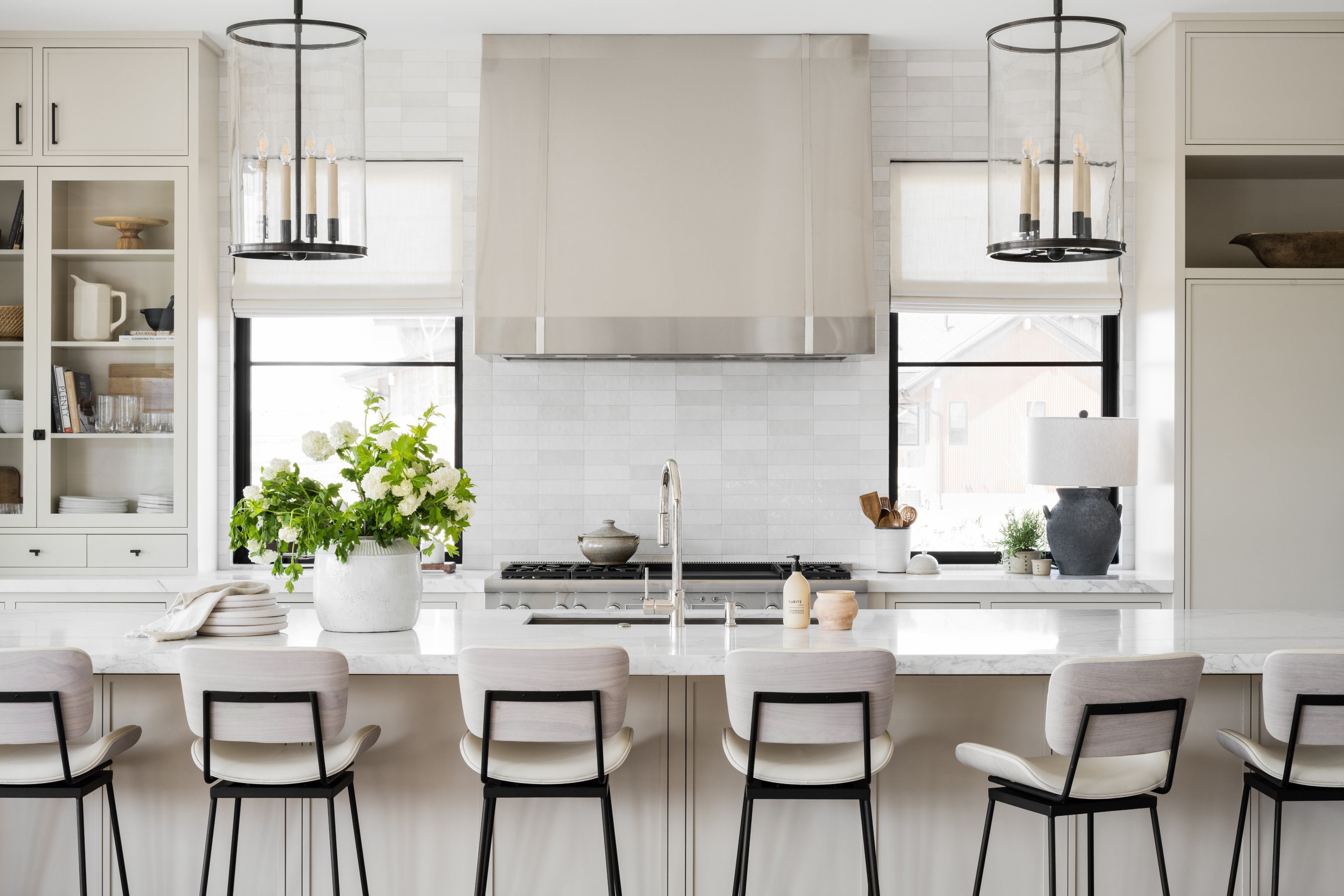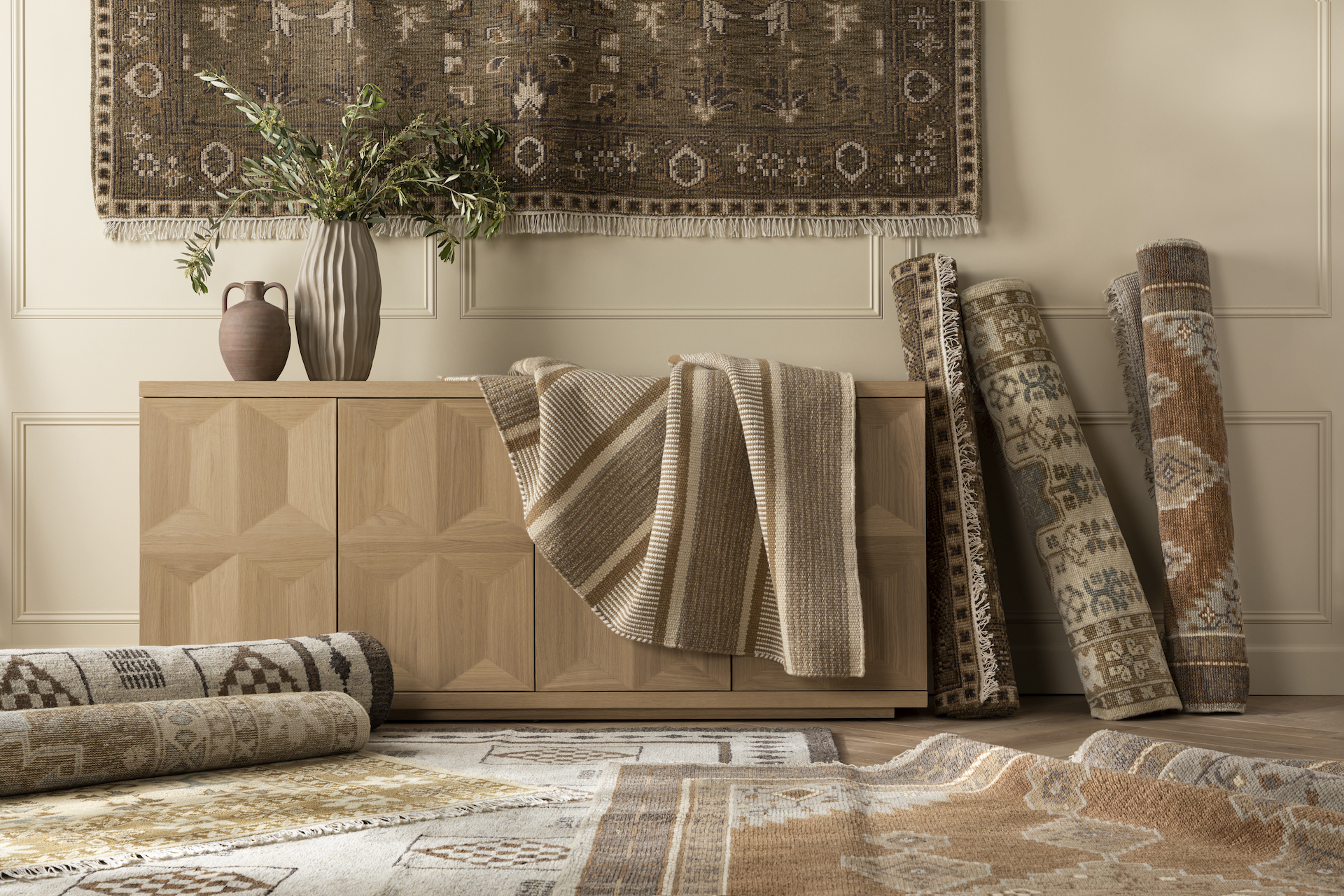
Rug Textures 101
Everything you need to know about what's underfoot.
23 August 2023 -
When selecting a rug it’s natural to gravitate towards whatever patterns or colors we like best or what suits the space, but it’s important not to forget about the material that the rug is composed of. In fact, rug texture is often the deciding factor in whether or not you end up loving your rug or wishing you’d never purchased it in the first place.
Owning a rug can sometimes feel like owning a pet, they require regular maintenance. Some rugs shed and can be more maintenance than others. A tip we always suggest is to be sure to vacuum regularly to keep them from looking ragged, especially at the beginning when it it shedding fibers. When vacuuming, try and use canister vacuums or if you don’t own one, use the brush attachments so as to not put too much pressure on the fibers. Another tip is to rotate your rug regularly to help keep it fresh looking and to keep furniture from creating heavy indentations in the material.
When the day comes that your beautiful rug is spilled on (it happens!), resist the urge to use heavy-duty cleaners and bleaches. Instead of scrubbing, blot the stain gently with a towel, and try and use products designed specifically for your type of rug.
Lastly, when it comes to rug maintenance, rug pads are essential. They’re an easy way to help keep your rugs more stable in its place and to help it last longer and resist wear and tear. If there’s not a size option for your rug, buy a larger size and use scissors to cut to the right size.
Now that we’ve covered some of the basics of rug maintenance, let’s get into the individual rug compositions. Here’s everything you need to know about your rug, it’s material, and where to use it in your home.
No. 03 | Jute, Seagrass, & Sisal
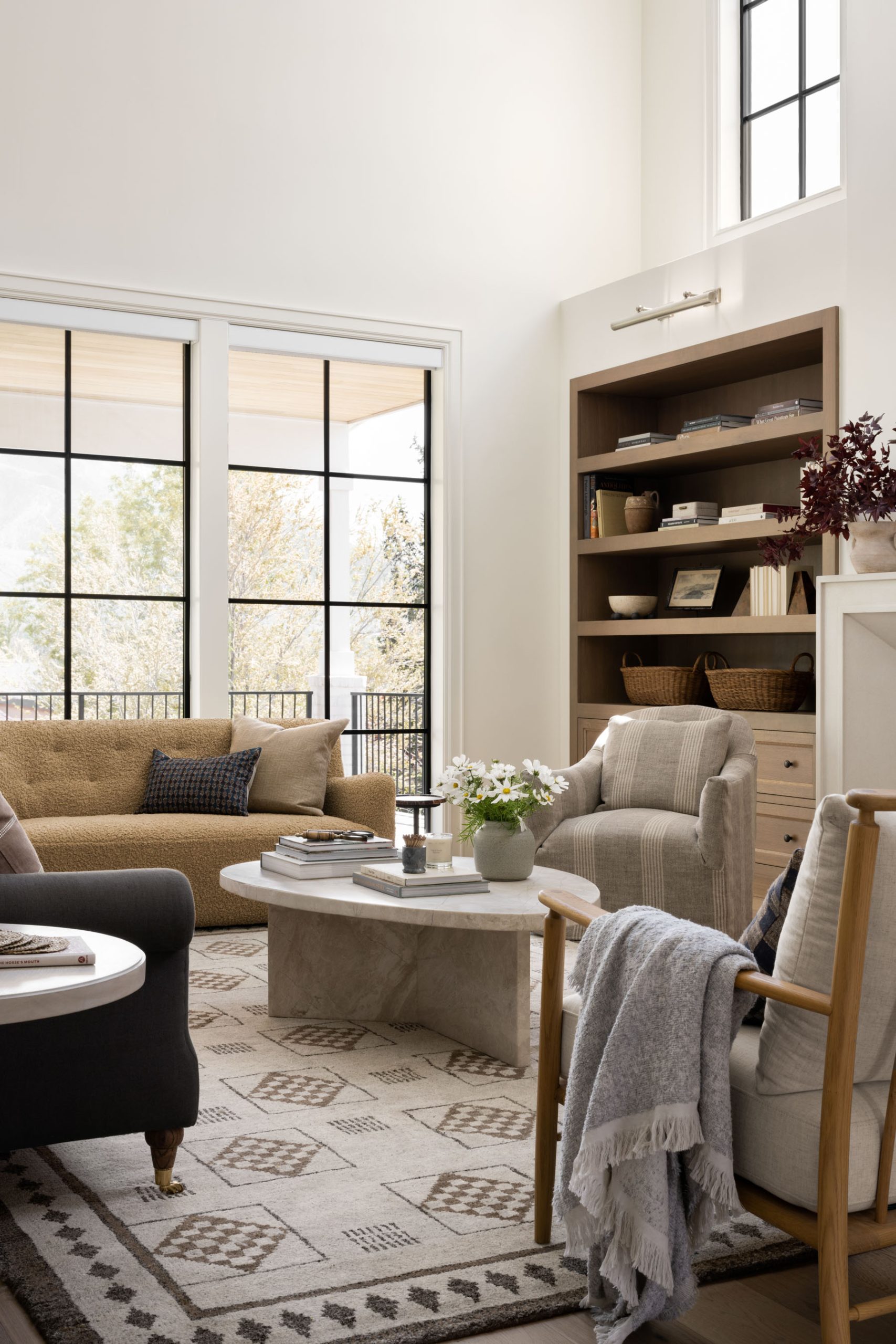
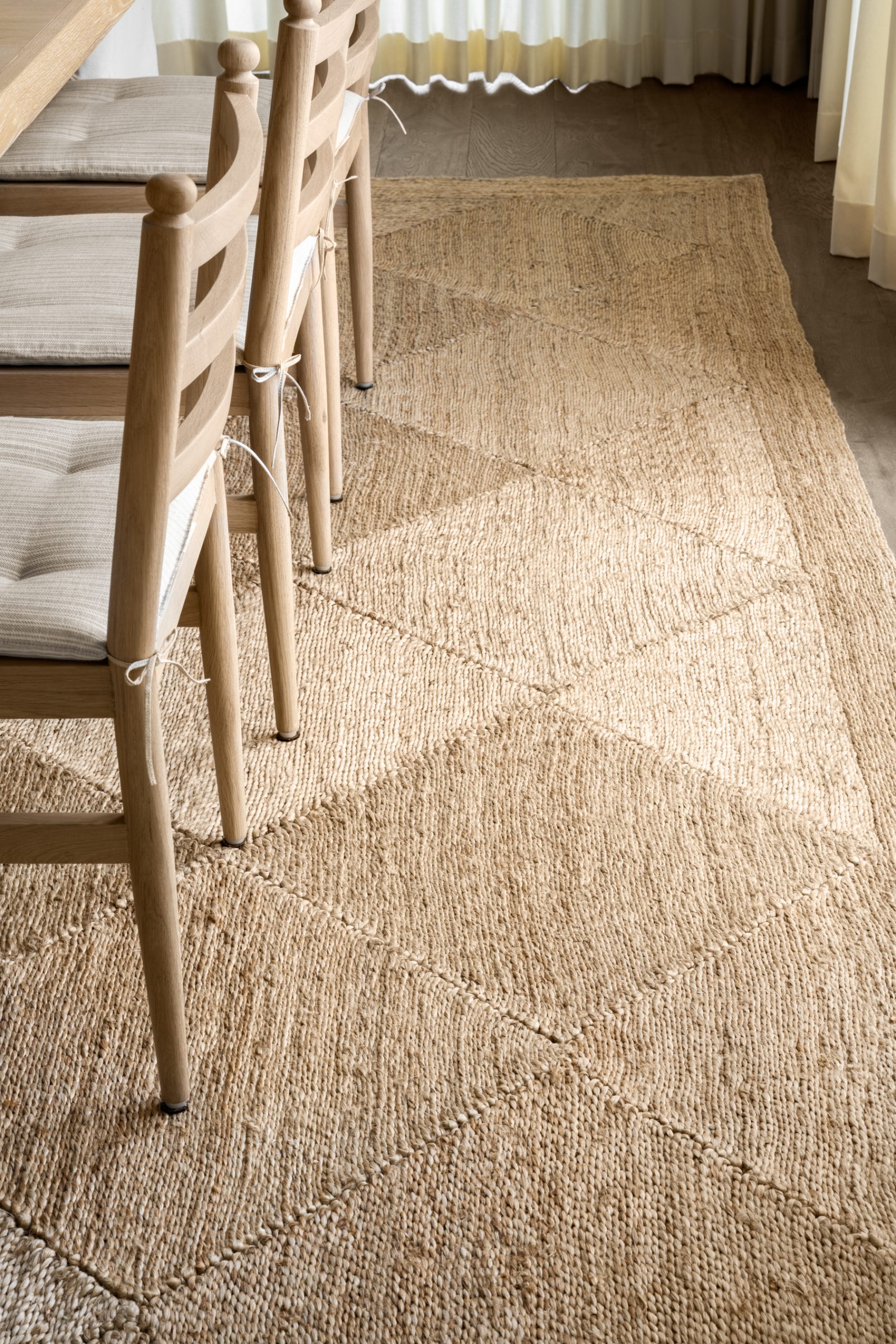
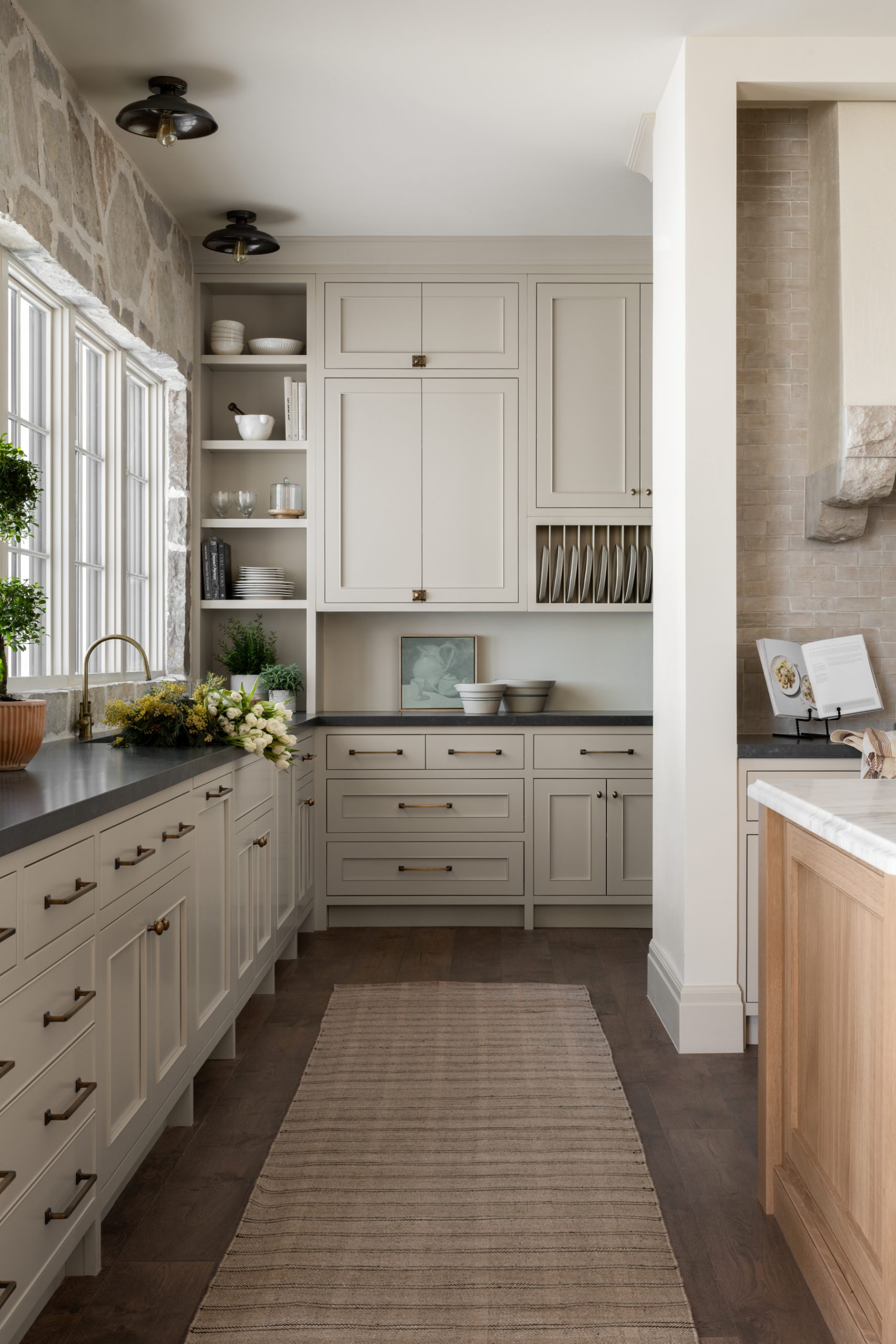
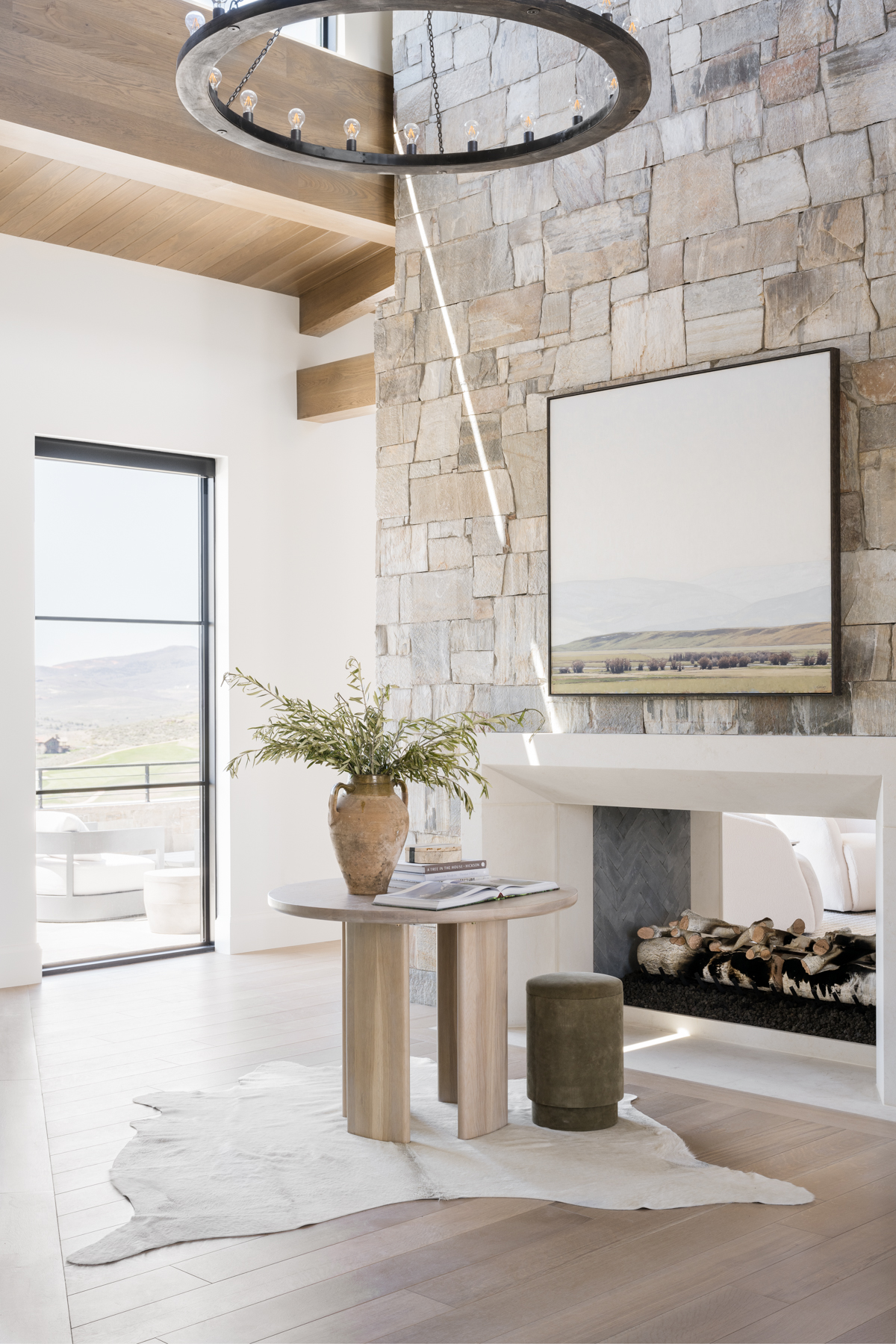
No. 01 | Synthetic
A synthetic rug is a durable and affordable option that is both stain- and shed-resistant. Synthetic rugs are man-made and designed to mimic higher-end materials like wool. They are easy to clean and can be used in damp environments, like a basement, making them the go-to for busy areas, kids’ rooms, and outdoor spaces.

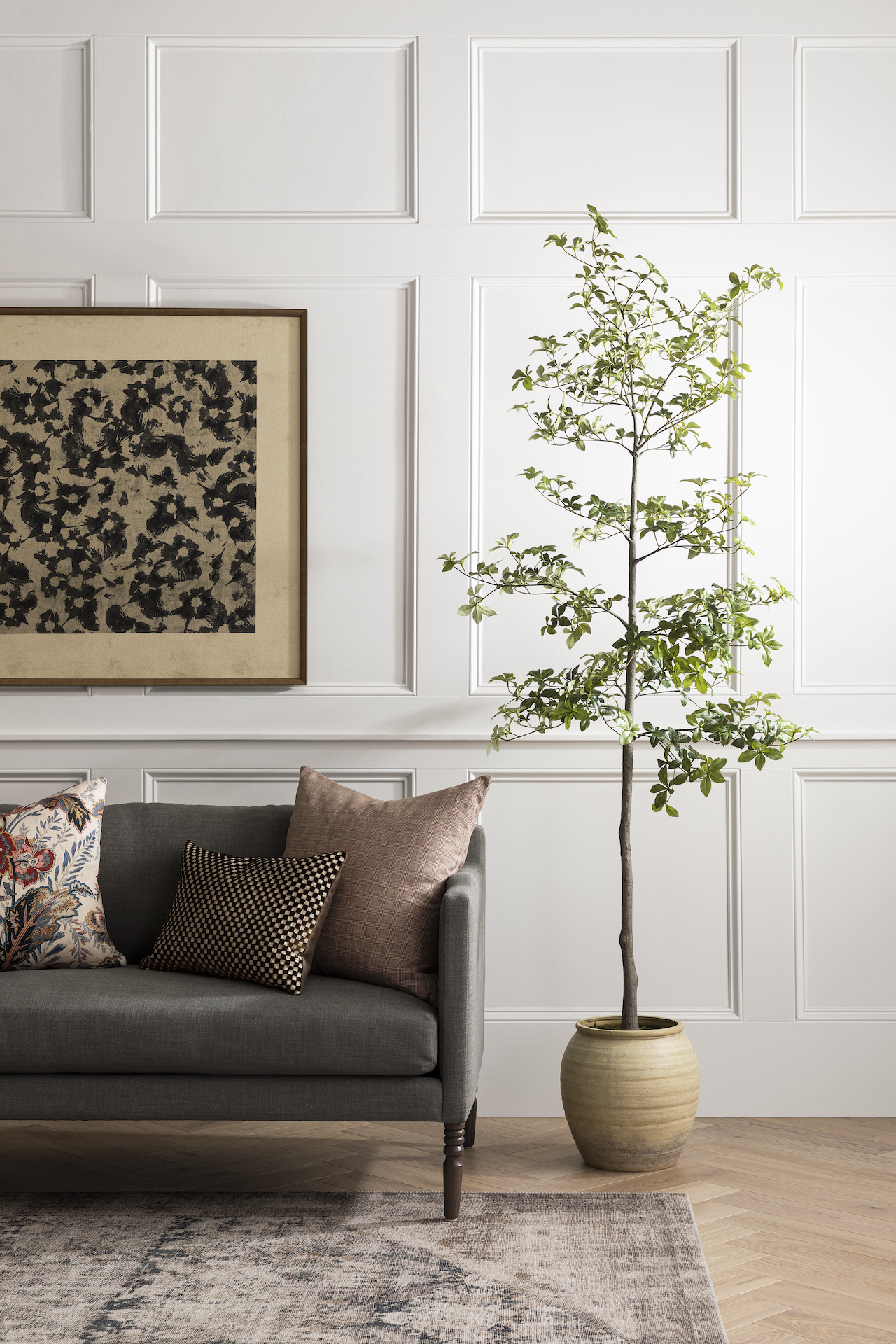
Rug Textures 101

Charlot Hand-Knotted Rug

Idalia Rug
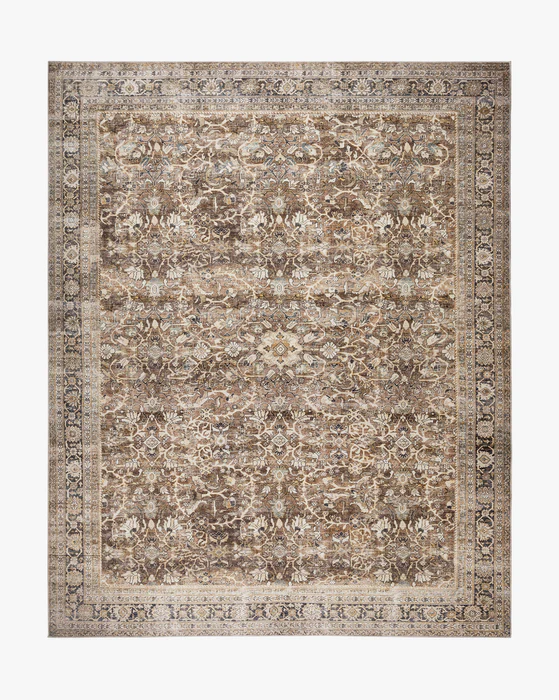
Isameta Rug
No. 02 | Wool
Instantly recognizable, a good wool rug adds real personality and softness to a space. Used for everything from premium hand-knotted rugs to practical machine-made options, wool is the most popular rug material. It is soft and resilient with water- and stain-repellant properties. Keep in mind that wool rugs are prone to shedding, especially in the first few months of use. As suggested, vacuum regularly to keep the mess down. Shea and the design team use wool rugs in every room of the home, as they are quite transitional.

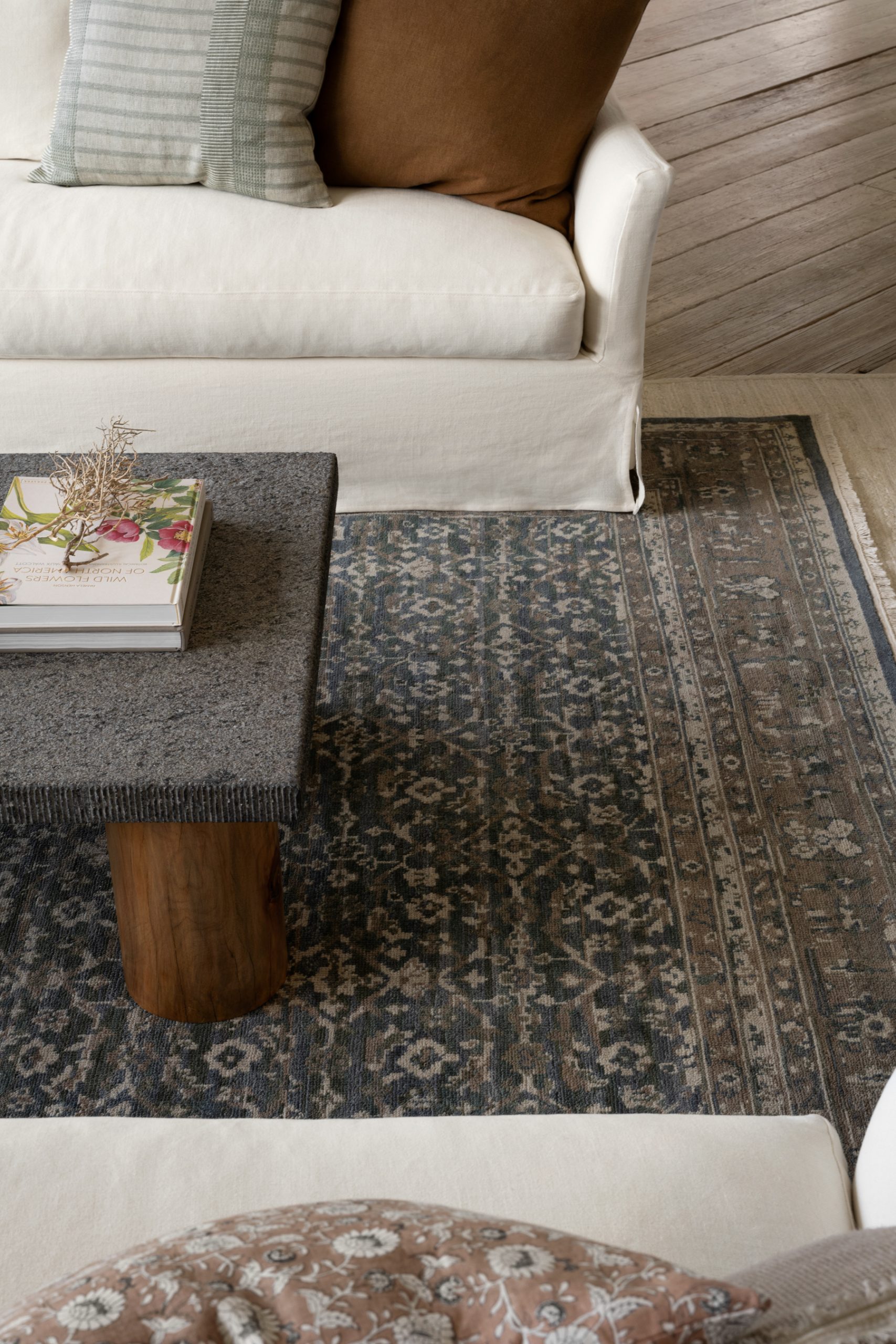
No. 03 | Jute, Seagrass, & Sisal
Known for their organic tones, natural fiber rugs can easily warm up any space and add a level of comfort to your home. Natural fibers offer earthy tones and textures that pair with a wide range of styles. These natural grasses are strong, making them a great choice for high-traffic areas or homes with pets and kids. Best of all? They’re affordable. The downside is, although they are tough, they have a tendency to shed and can be difficult to clean. They don’t hold shape well in humid areas and moisture can easily damage them.
Shea and the design team like to use these rugs in entryways, kitchens, and layered under vintage rugs. When shopping for natural fiber rugs, you’ll see that most are constructed from organic materials like jute or sisal. Functionally, sisal works better in higher traffic areas than jute as it’s more durable and stain-resistant but jute is a much softer texture. When choosing between the two, think through how the room will be used and what matters most to you, comfort or durability.
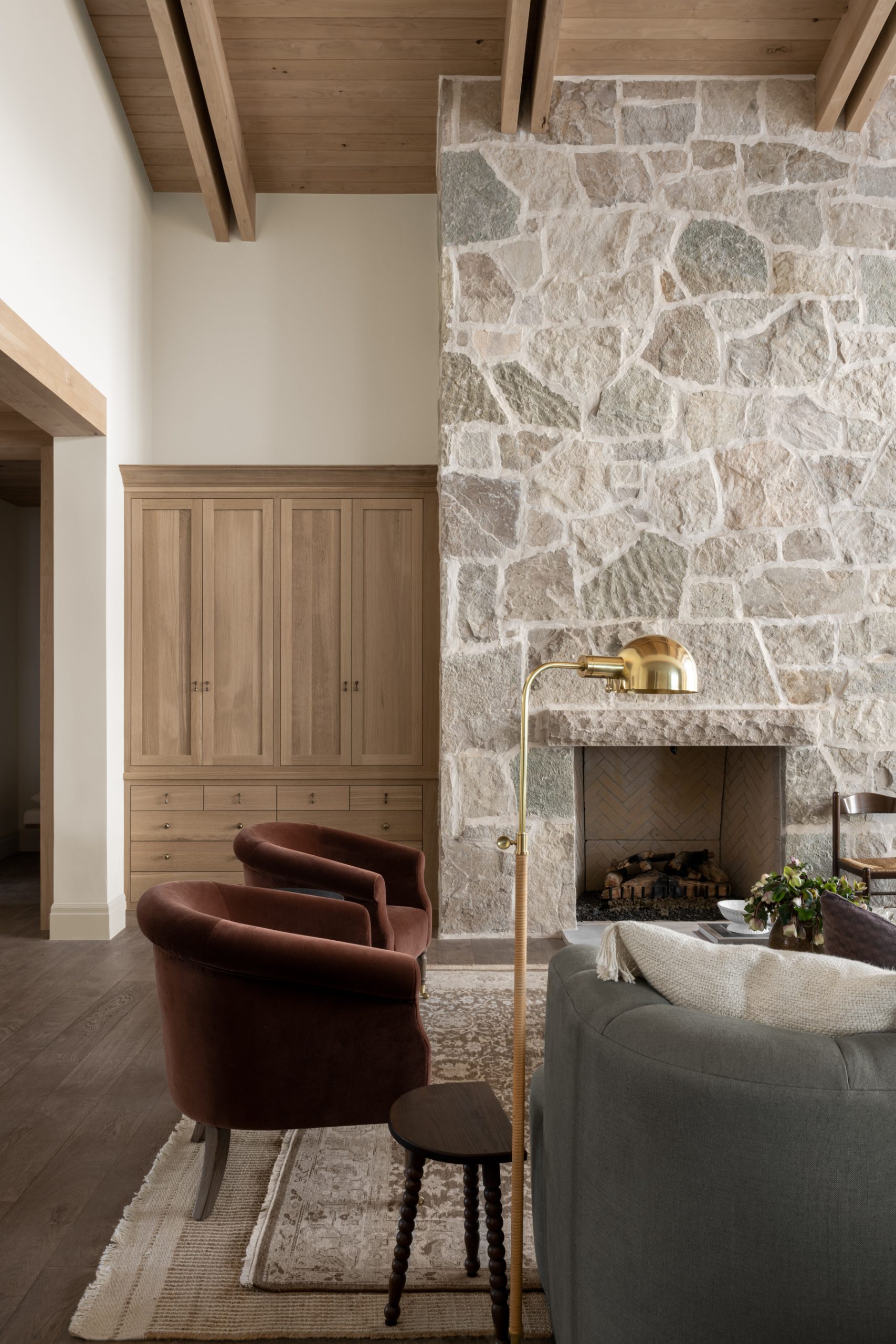

No. 04 | Cotton
Cotton rugs are a cost-effective option with a laid-back feel. They are often offered in flatwoven styles and used as scatter rugs in entries and kitchens. Cotton rugs don’t always wear well, so they’re best used in casual spaces.

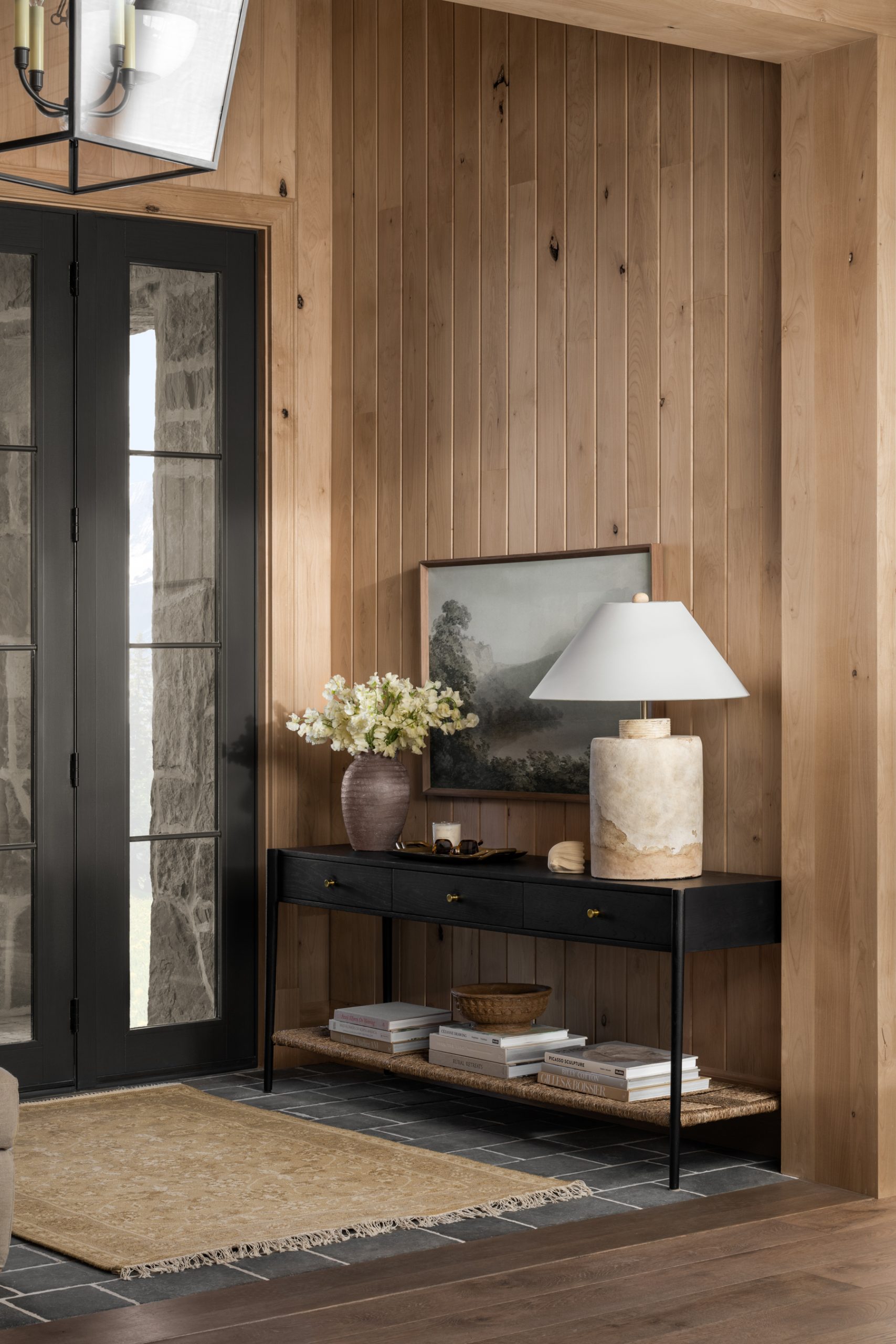
Rug Textures 101
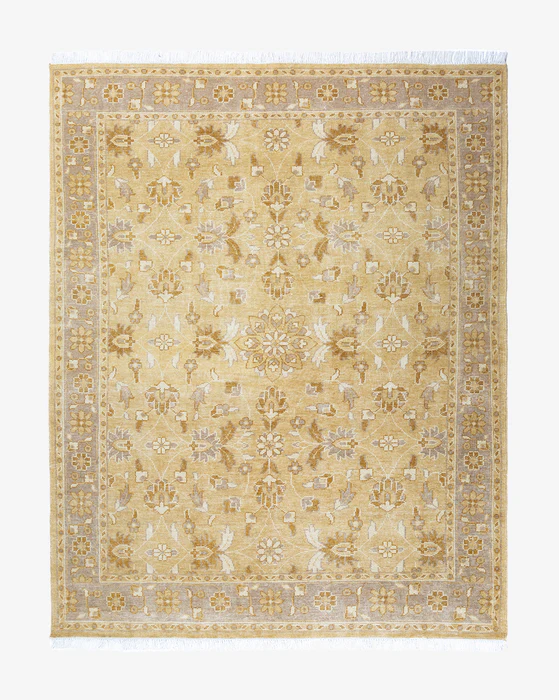
Giulietta Hand-Knotted Rug
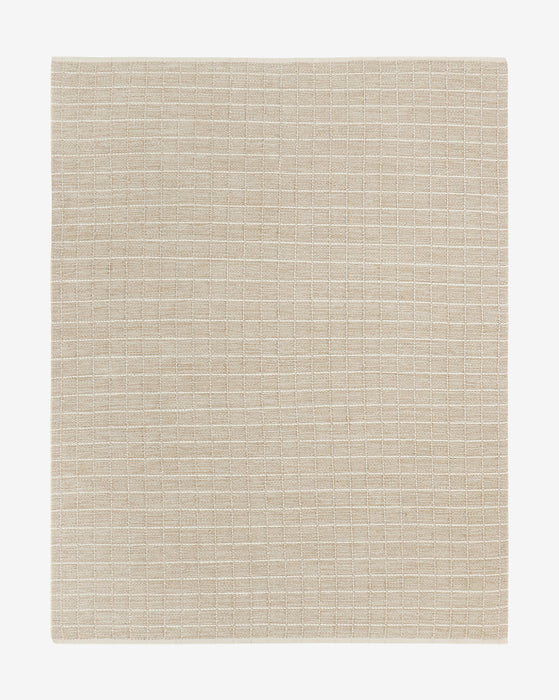
Nellie Handwoven Jute Rug

Orton Handwoven Wool Rug
No. 05 | Hair on Hide
A good hair-on-hide rug (cowhide, for example) is extremely versatile, durable, and soft to the touch. Generally, they’re easy to clean if they are kept away from damp environments. They come in manufactured and organic shapes and range from spotted rugs to monochromatic color schemes and can easily be used in both traditional and modern settings.
Hide rugs can add a touch of worldly sophistication to a space and although they are durable, you should avoid placing them in high-trafficked areas to avoid wear in one area of the hide. With this in mind, we like to think these rugs make the perfect addition to a staged area of the home like an office space, study, or even under a coffee table.

Rug Textures 101
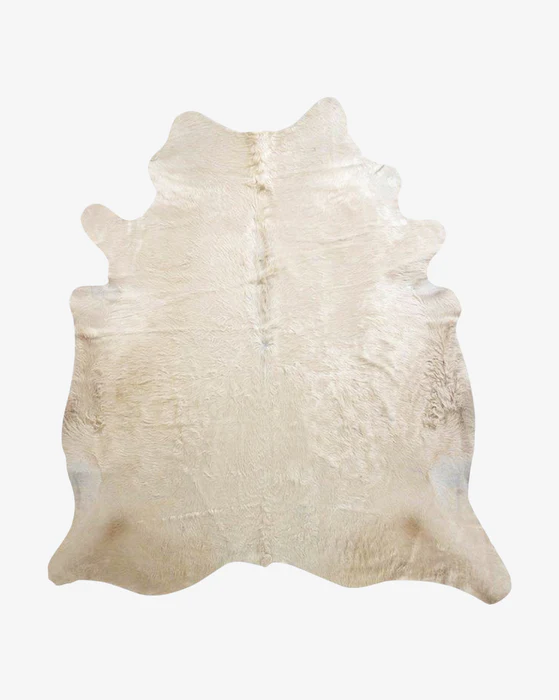
Dallas Hide
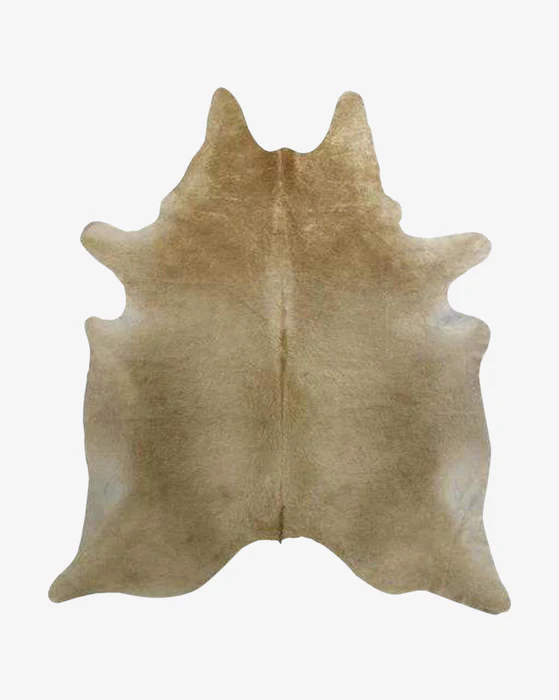
Omaha Hide
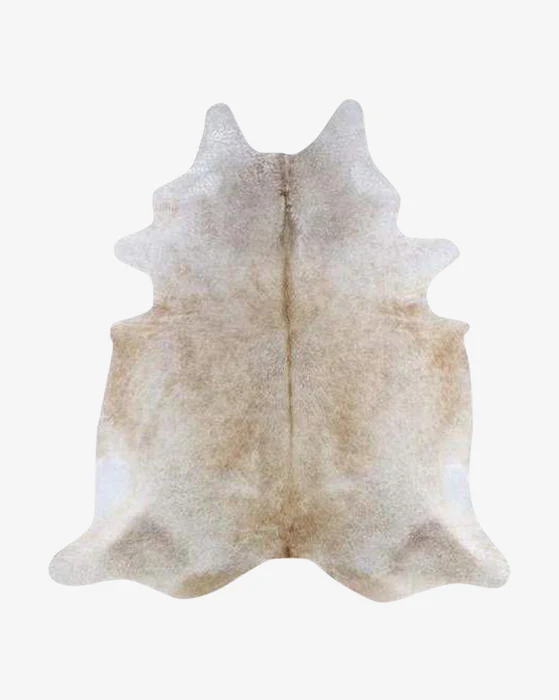
Topeka Hide
No. 06 | PET (Polyethylene)
A type of synthetic material often made from recycled bottles, PET is typically used in outdoor rugs. These rugs are durable, easy to clean, and a great choice for both outdoor and indoor applications.
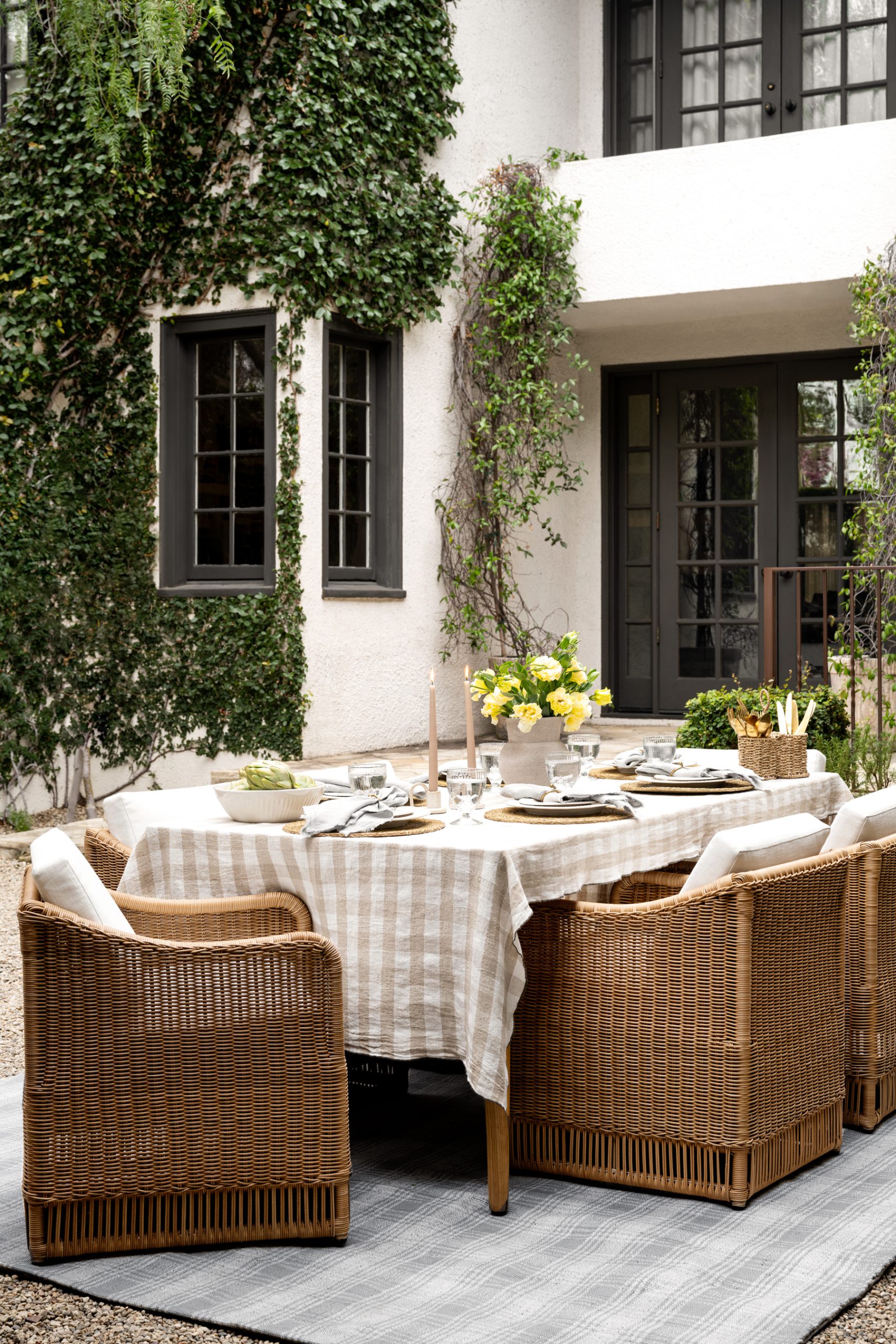

No. 07 | Viscose
A natural material that is man-made from fibers like wood pulp and bamboo—the result is a silklike texture and feel without the high cost. Viscose tends to wear easily and shed like wool, so it is best for bedrooms and low-traffic living spaces.
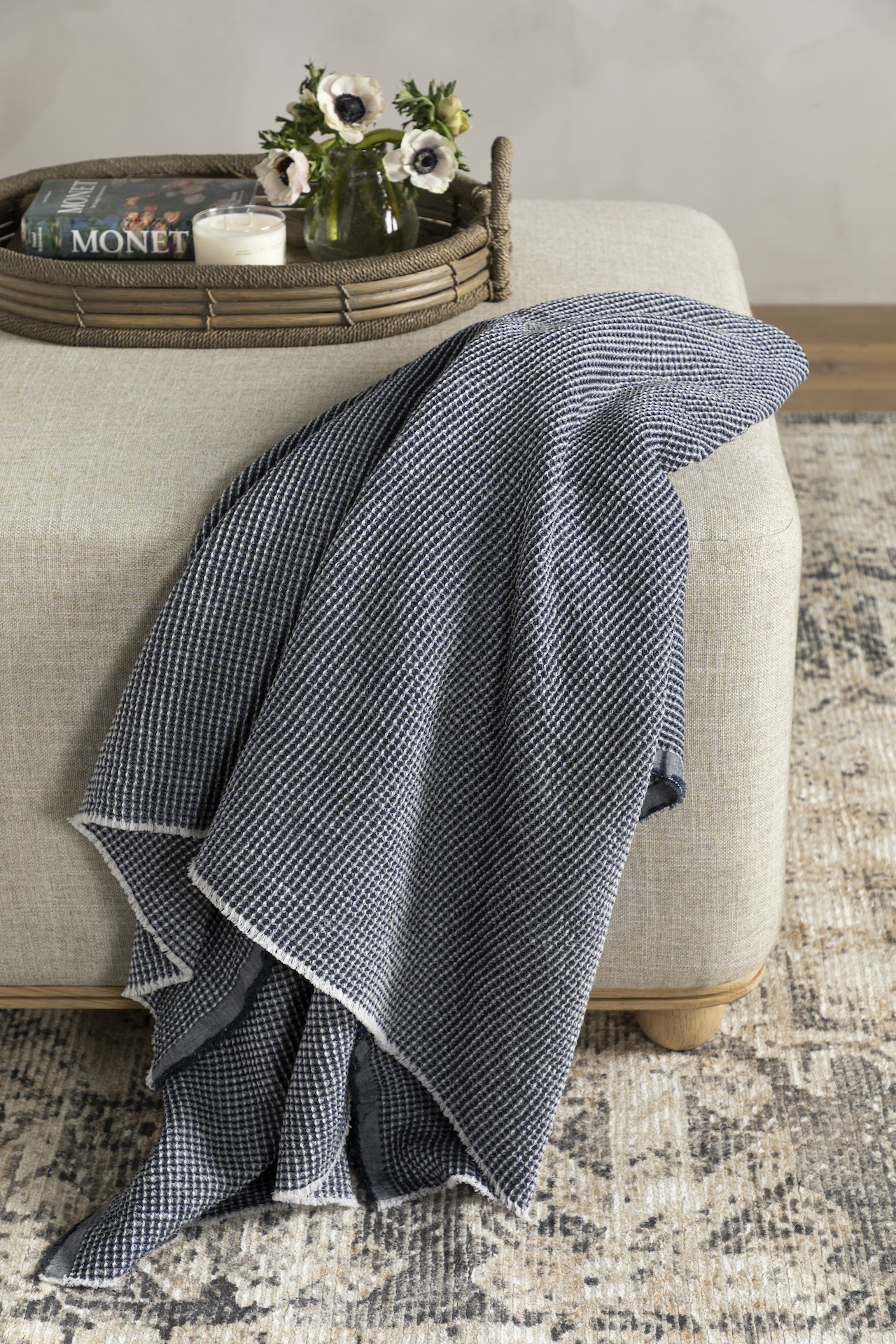
Rug Textures 101
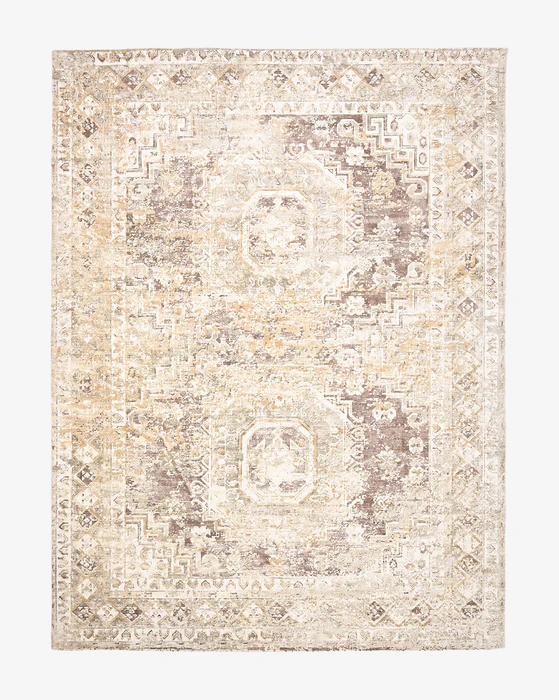
Marcella Handwoven Rug
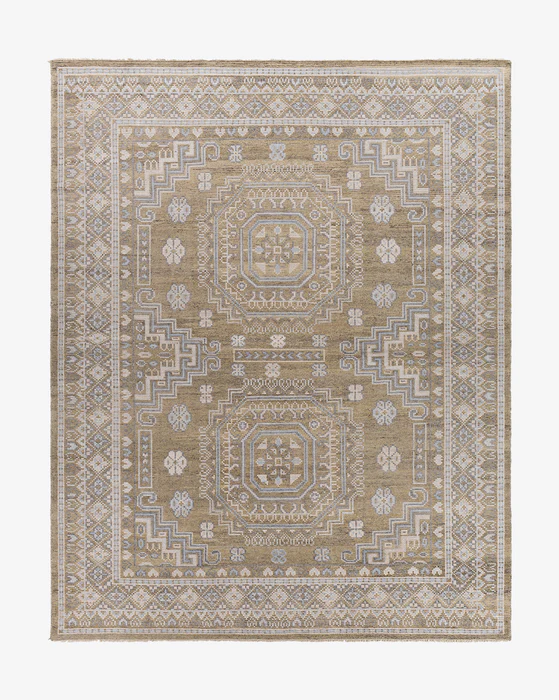
Caru Hand-Knotted Wool Rug
